Tailwind on every ride? – See e-bike trips
$250 off your first Cycling or Hiking Vacation – use code at checkout: Explore250
European Classic booking fast – see the trips
- Request a Catalog
- 866-464-8735

Select Date Range
Modal title, popular searches.
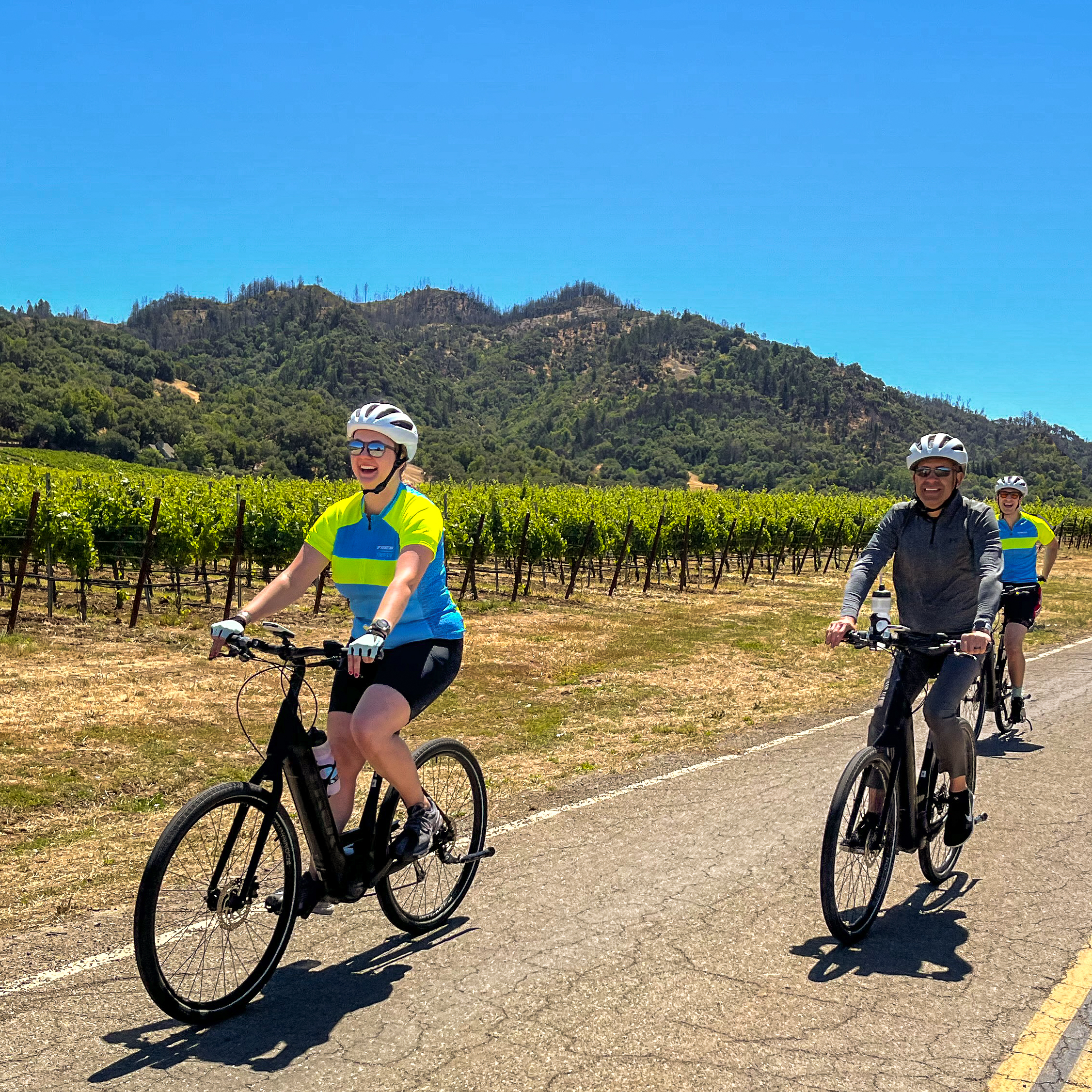
California Wine Country Bike Tour
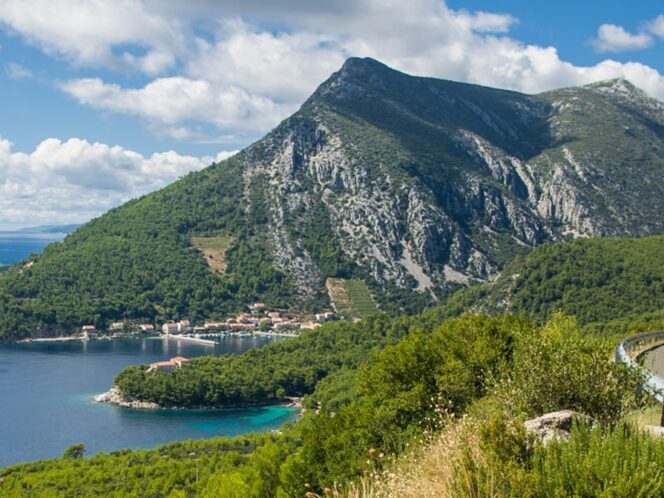
Croatia and The Dalmatian Coast Bike Tour
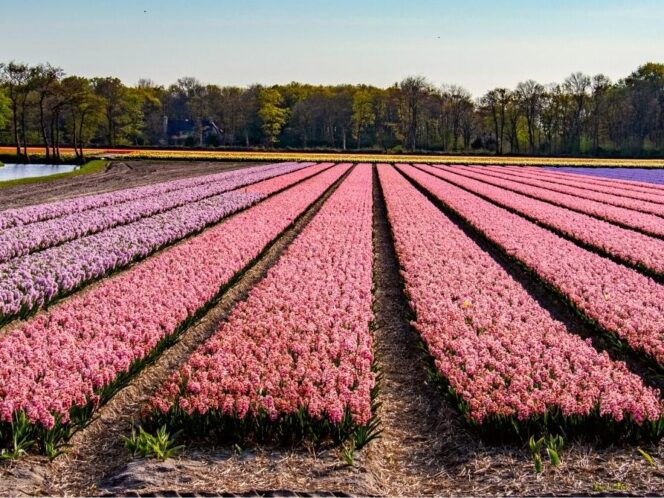
Amsterdam to Bruges Bike Tour
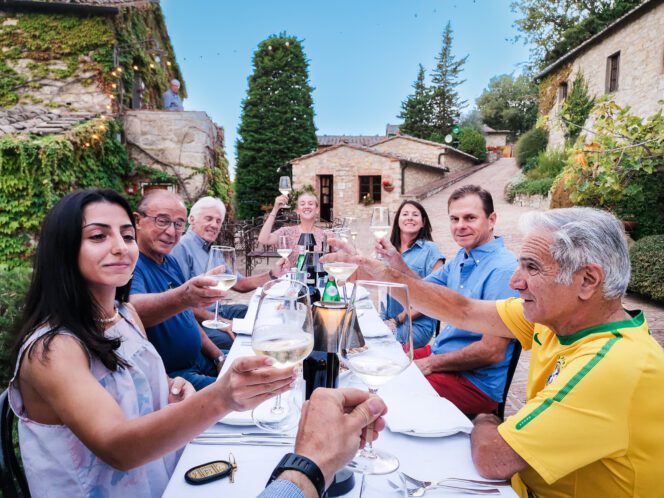
Tuscany Bike Tour
Explore Europe This Fall
Experience rich history, iconic landscapes, and the world’s most famous hikes and rides.
Select Destination

Featured Destinations
Discover our featured destinations and find the perfect trip to satisfy your wanderlust.
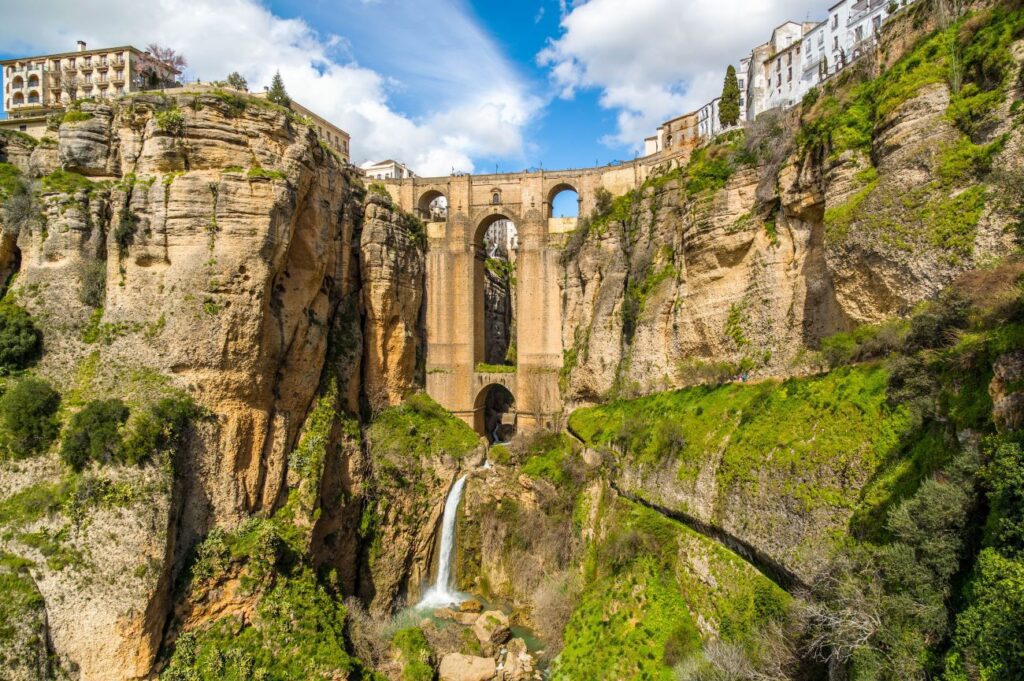
Andalucia Bike Tour
If you’ve dreamed of Spain, you’ve dreamed of a bike tour in Andalucia.
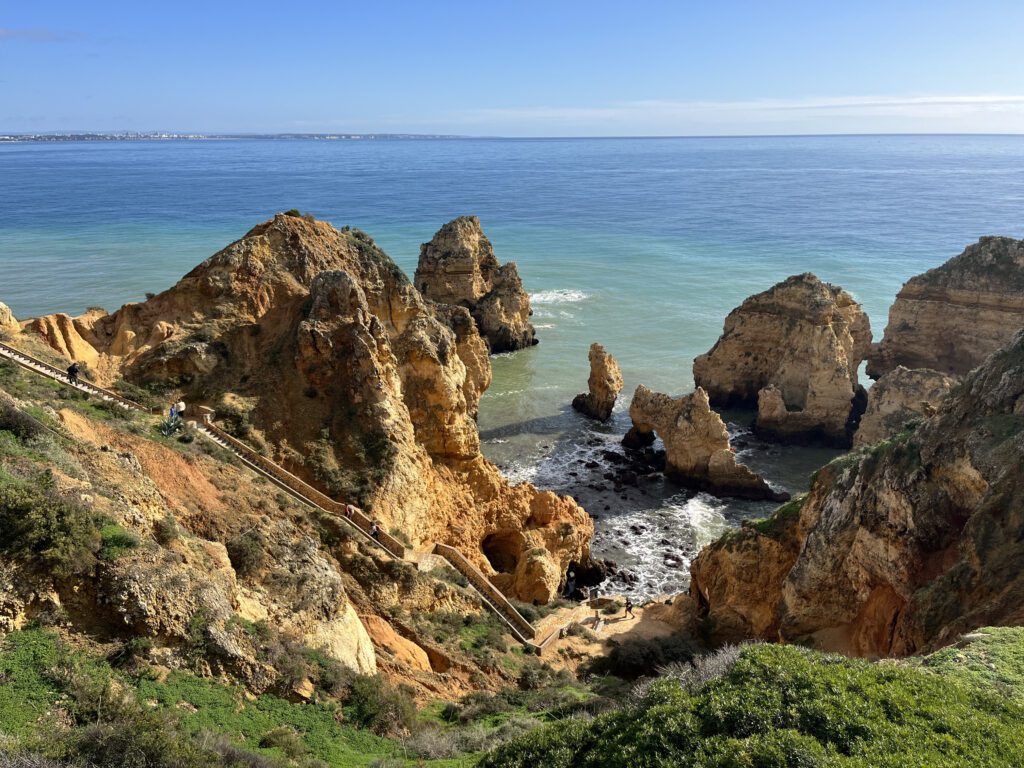
Portugal Hiking & Walking Tour
Discover the natural beauty and rich heritage of Portugal as you hike and walk along the Rota Vicentina trails.
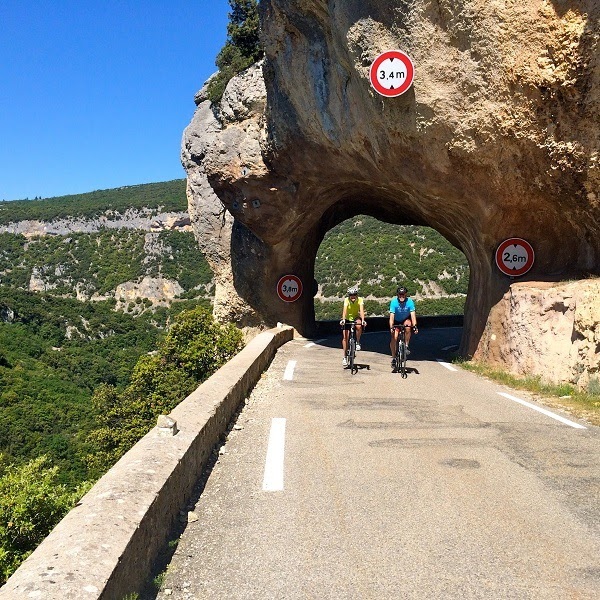
Provence Bike Tour
La belle vie spills over on our most classic Provence bike tour featuring market villages, stunning gorges, and iconic climbs.
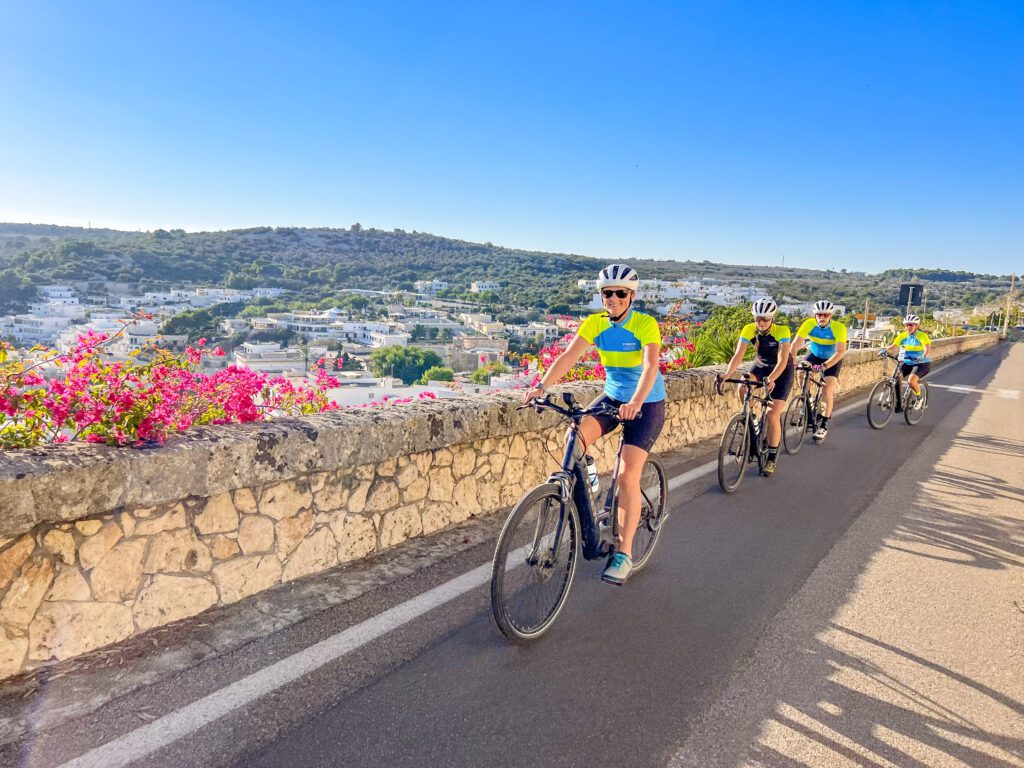
Puglia Bike Tour
Our Puglia bike tour rewards you with rich cultural traditions, fresh cuisine, and scenic riding from ancient trulli to dazzling coastline.
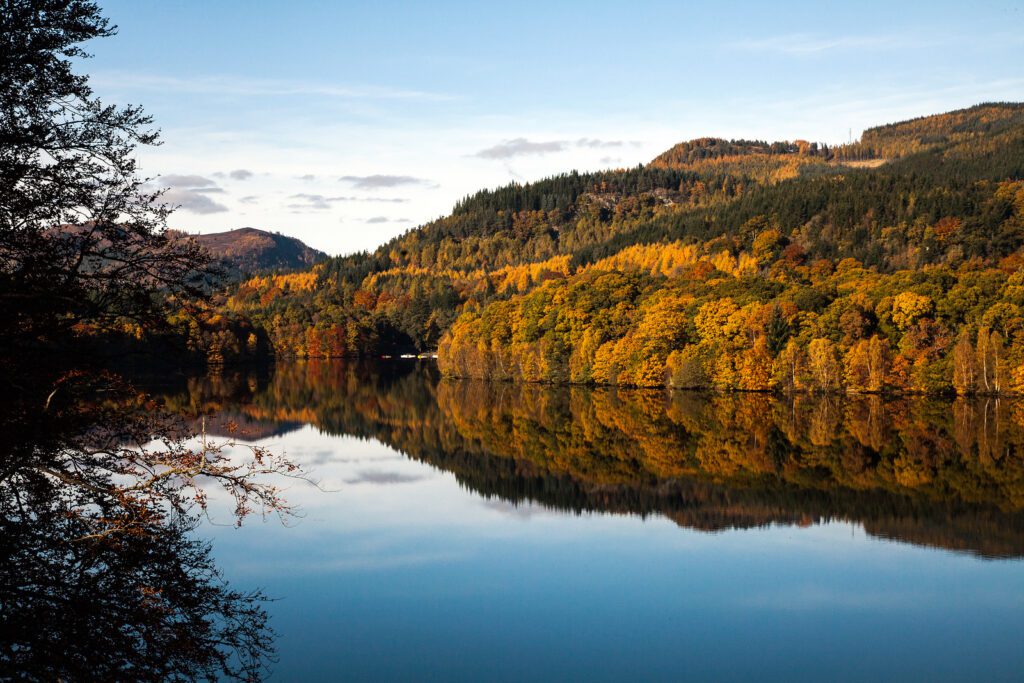
Scotland Hiking & Walking Tour
Explore the marvels of St Andrews, Edinburgh, and the surrounding landscapes on an unforgettable hiking and walking tour.
Trips for Every Traveler
Whether you are looking for a leisurely vacation through the olive groves in Puglia, an unpaved adventure, or want to test your legs on the climbs of the Tour – we have a trip style for every traveler.
Classic Guided
Hiking + walking, cross country, 20+ years of hospitality.
When you choose us, you’re traveling with a team that holds your memories in the highest regard and are committed to consistently exceeding your expectations.
Why We're Different
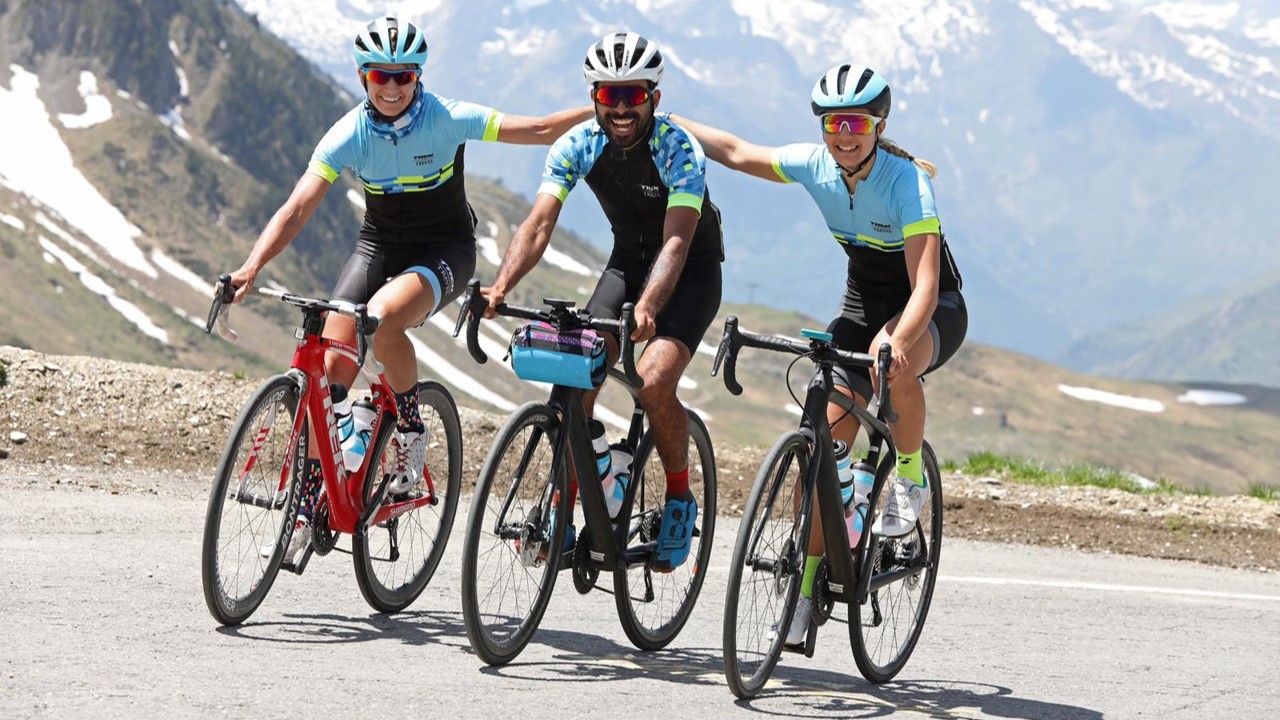
Unrivaled Support
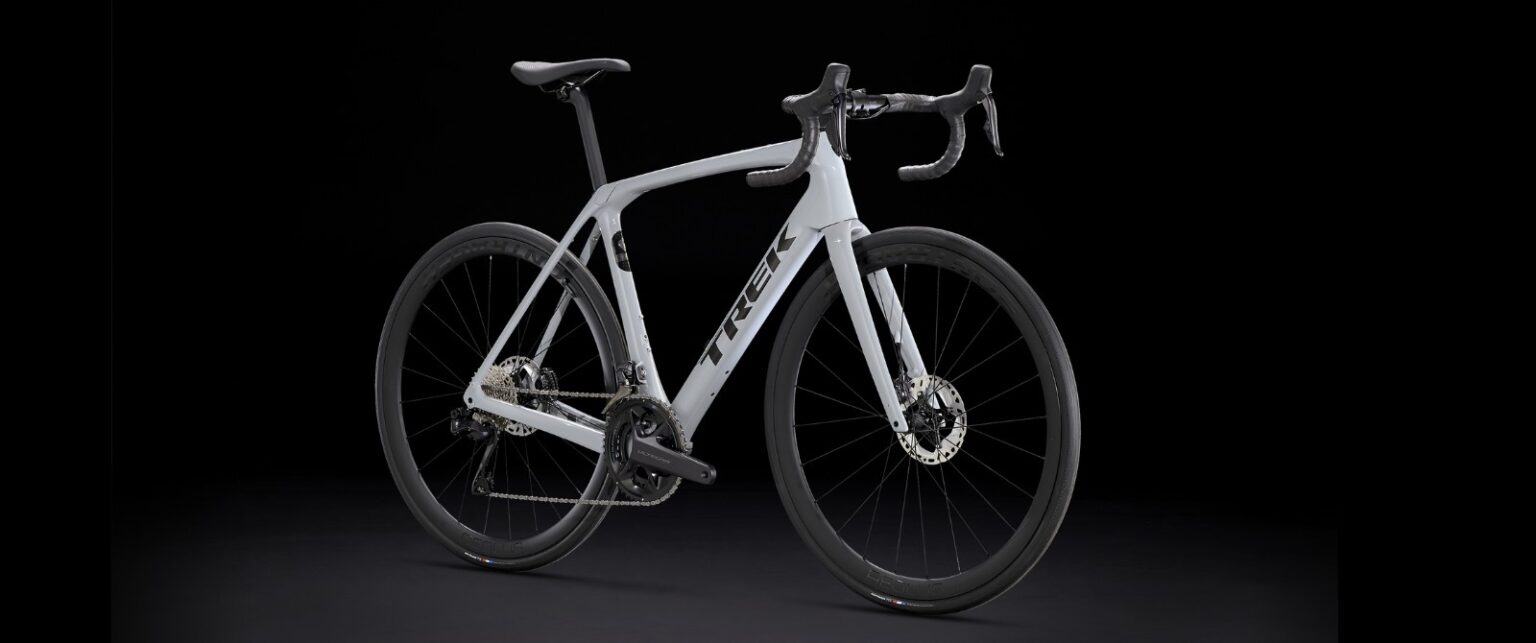
The Best Bikes
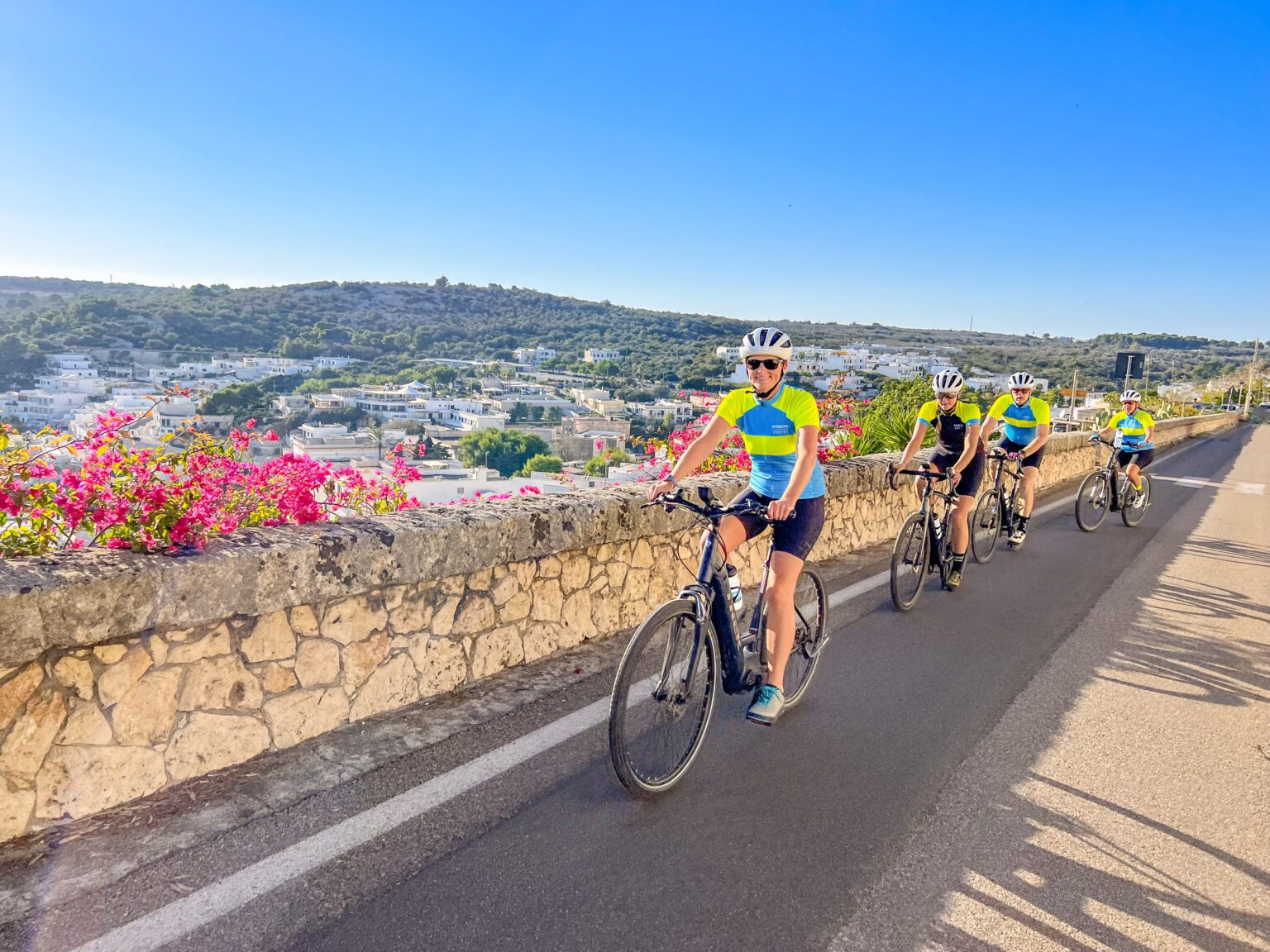
For Every Rider
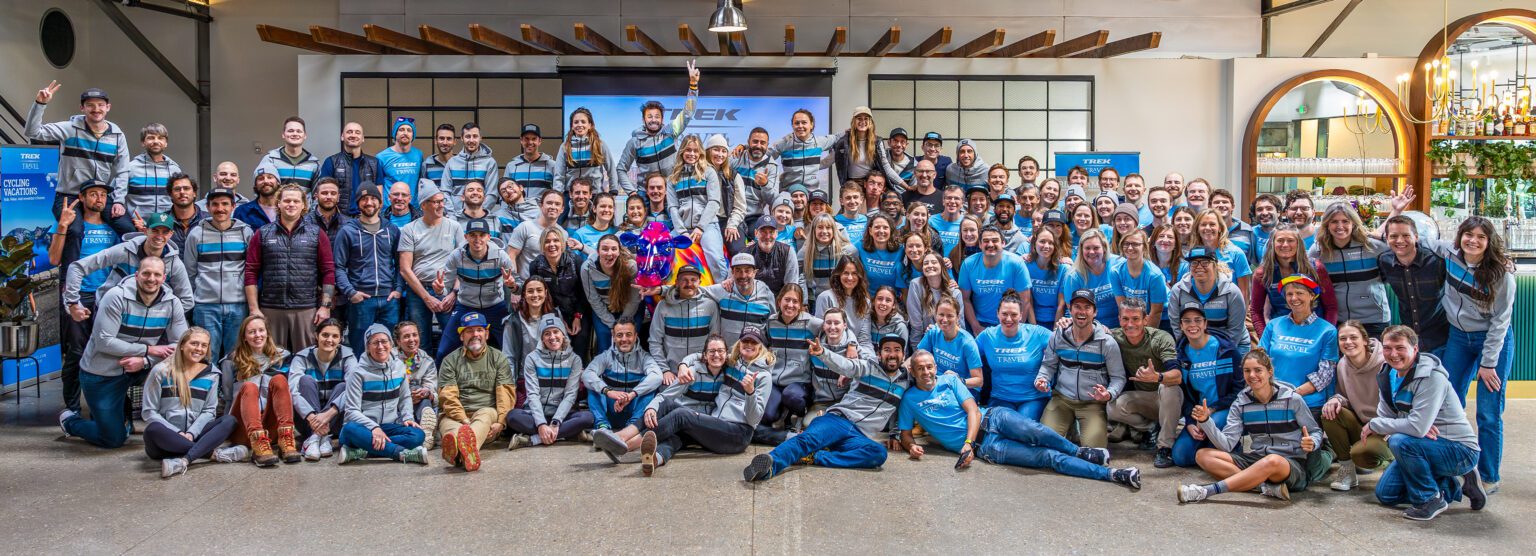
World's Best Guides
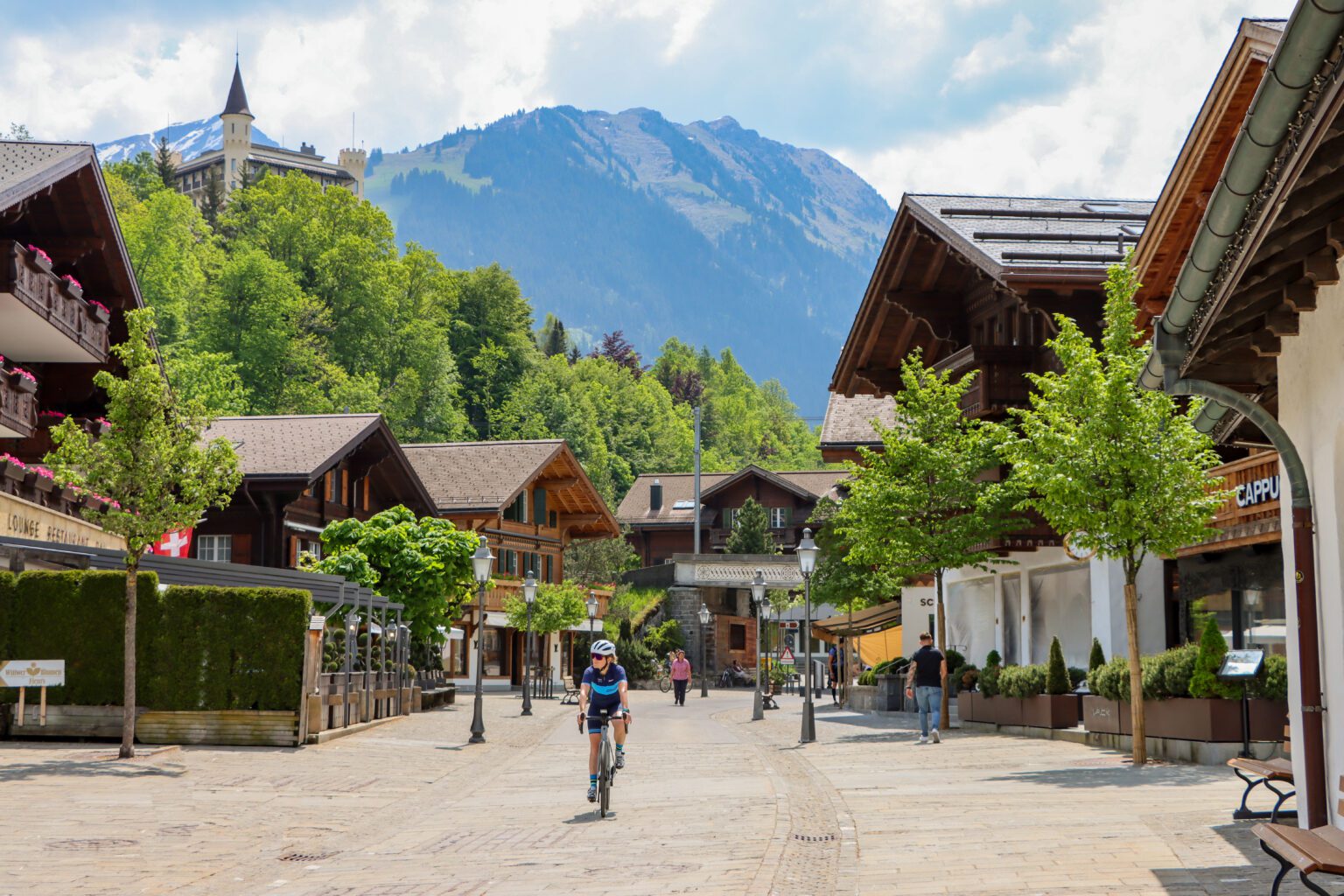
Expertly Designed
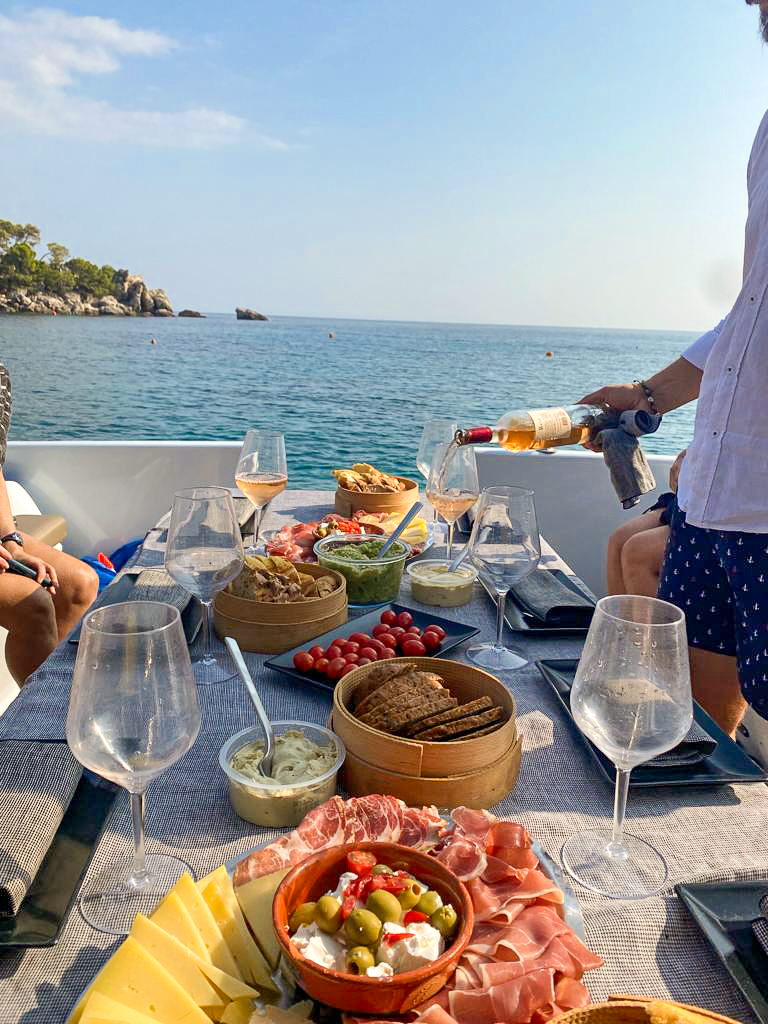
It's Your Day, You Decide
Our mission.
To enrich lives through active travel, deliver experiences of a lifetime, and provide unparalleled hospitality.
What Our Guests are Saying
Active vacations are what we do; the life-changing stories are why we do it.
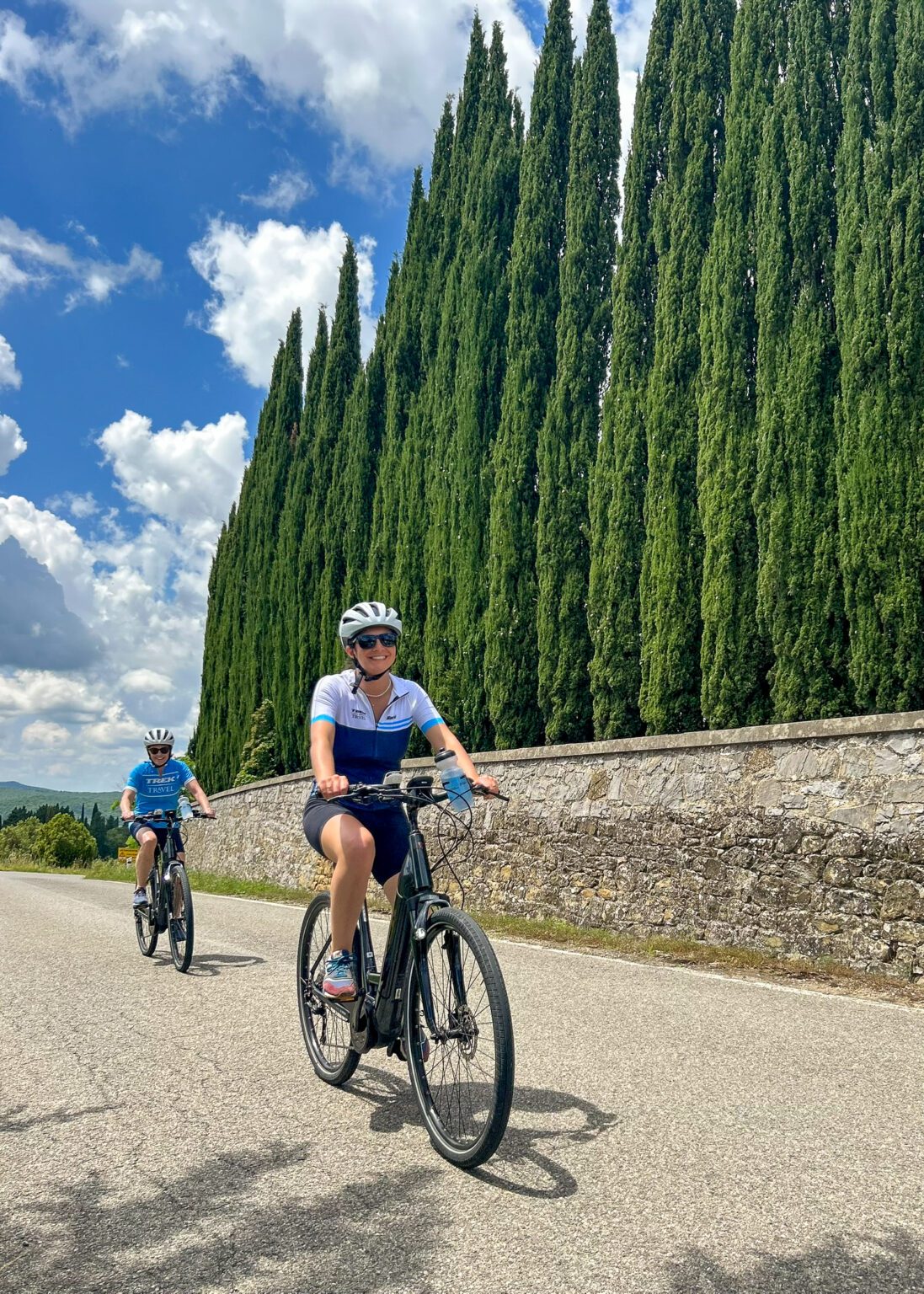
If a date is marked as Private, it is reserved for a private group.
Looking to travel with a small group or looking for a custom date? Call our trip consultants at 866-464-8735
What is the Difference?
Ultimate luxury:.
Savor some of the most spectacular, 5-star properties in the world. Exuding luxury and elegance, these one-of-a-kind accommodations offer the chance to rejuvenate at award-winning spas, dine at Michelin-starred restaurants, and more.
Enjoy luxurious accommodations handpicked for a refined experience. From signature spa treatments to delicious local cuisine, you’ll be more than provided for; you’ll be pampered.
These handpicked hotels provide relaxation and fun in a casual and comfortable environment. Delicious cuisine and great service mix perfectly for a memorable stay.
On select cycling vacations, you’ll stay at a mix of hotel levels, from Explorer to Luxury to Ultimate Luxury. Rest assured, no matter which level of hotel you’re at, our trip designers carefully select every accommodation.
Activity Level
Road : 1-3 hours of riding. Up to 25 mi (40 km). Up to 1,000 ft (300 m).
Gravel: 1-3 hours of riding. Up to 20 mi (35 km). Up to 1,000 ft (300 m).
Hiking: 1-3 hours of hiking. Up to 5 mi (8 km). Up to 1,000 ft (300 m).
Road : 2-4 hours of riding. 20-35 mi (35-60 km). Up to 2,500 ft (750 m).
Gravel: 2-4 hours of riding. 15-30 mi (25-45 km). Up to 2,000 ft (300 m).
Hiking: 2-4 hours of hiking. 4-8 mi (6-12 km). Up to 1,500 ft (450 m).
Road : 3-5 hours of riding. 25-55 mi (40-85 km). Up to 4,500 ft (1,500 m).
Gravel: 3-5 hours of riding. 20-40 mi (35-60 km). Up to 3,000 ft (900 m).
Hiking: 3-5 hours of hiking. 6-10 mi (9-16 km). Up to 2,000 ft (600 m).
Road : 4+ hours of riding. 40-70 mi (60-110 km). Up to 8,000 ft (2,400 m).
Gravel: 4+ hours of riding. 30-50 mi (45-80 km). Up to 4,000 ft (1,200 m).
Hiking: 4+ hours of hiking. 7-15 mi (11-24 km). Up to 4,000 ft (1,200 m).
What are your trip styles?
Classic - reserve:.
Savor the finer things as you relax in luxurious 5-star accommodations and wine, dine, and ride in some of the most unforgettable destinations around the world.
Classic - Signature:
Explore beautiful destinations by bike, enjoy extra inclusions, savor delicious local cuisine, and enjoy the perfect mix of accommodations.
Classic - Discover:
Enjoy a casual cycling vacation with fantastic routes and comfortable accommodations.
Train like the pros in some of their favorite riding destinations.
See the pros in action at the biggest cycling events of the year.
Cross Country:
Tackle an epic adventure that takes you point-to-point across mountains, countryside, and more.
Self-Guided
Enjoy a bike tour on your schedule with just your chosen travel companions.
Single Occupancy
Sometimes it’s more convenient and comfortable to have your own room while on vacation. We understand and that’s why we offer a Single Occupancy option. The additional price guarantees a private room all to yourself
This website uses cookies to ensure you get the best experience on our website.
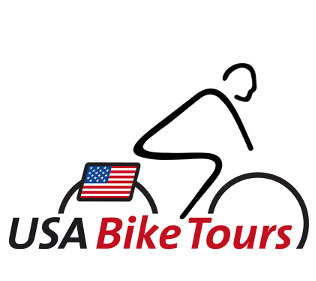
- Cycling in USA
- Countries and States
Your cycling holiday or bike tour in America
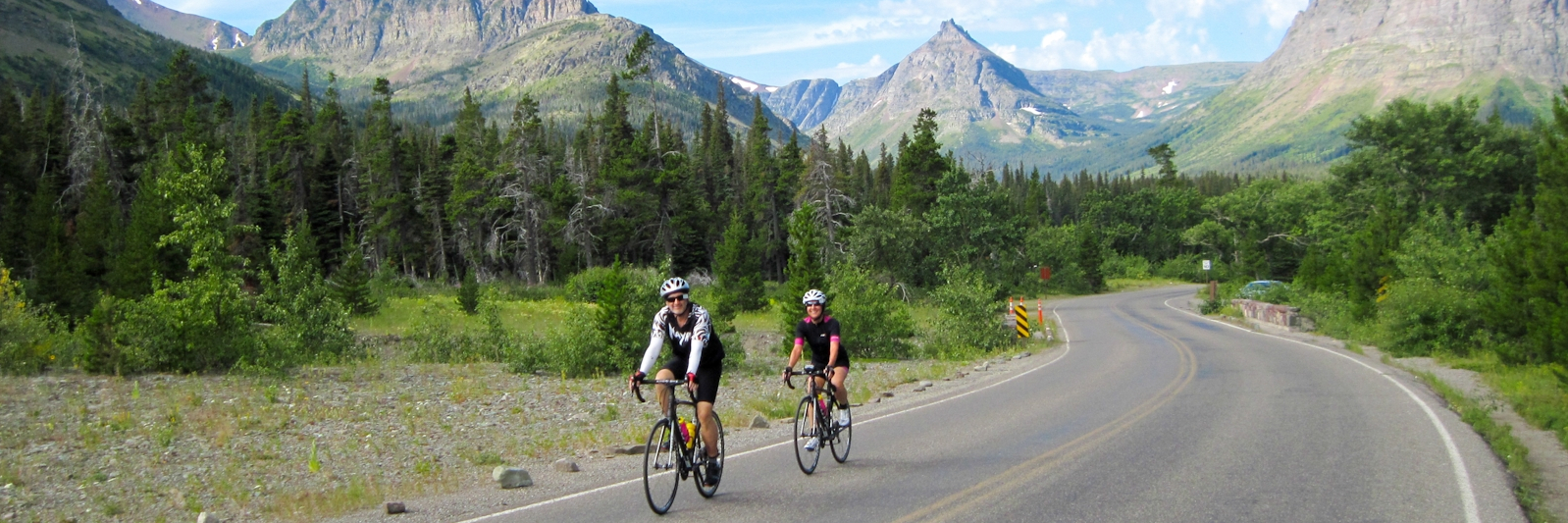
USA Bike Tours offers over 140 most spectacular cycling tours and cycling holidays in all parts of the United States of America and Canada, the whole year through. Long or short, guided or self-guided, basic or deluxe – you will always find the tour that fits you best! We selected the best and most beautiful tours. To guarantee high quality equipment, most scenic routes, excellent accommodation and dedicated support.
Experience The USA the best way – from the seat of a bicycle
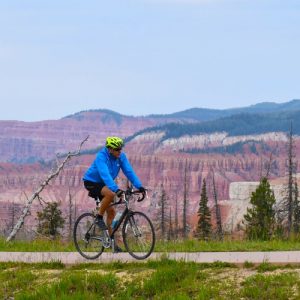
Giftcard Are you looking for an original gift for a bicycle enthusiast? Surprise someone with a ‘USA Bike Tours Gift Certificate’ and let them choose any tour on our website. It is the perfect way to give someone an experience of a lifetime. You can purchase the certificate by sending an e-mail to: [email protected] .
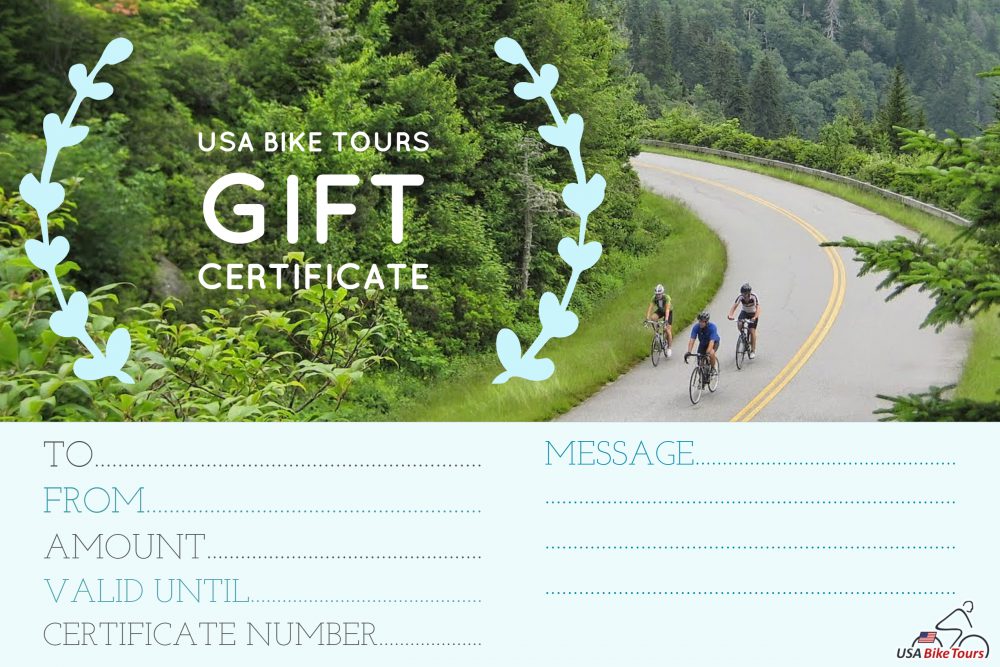
Our Favorites
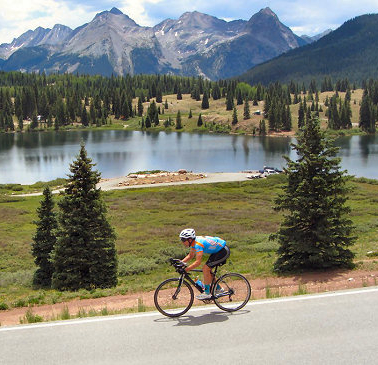
Stephen B. Mount Rushmore and Badlands Tour “USA Bike Tours provide a highly professional and attentive service. Things don’t always go to plan, but they sure know how to respond when needs arise.”
Tour Finder
Tour type Road bike (87) Hybrid bike (86) Mountain bike (18) E-bike (79) Tour bike (23) Trip length 1 day (9) 2 - 5 days (16) 6 - 10 days (90) 11 - 15 days (7) 16 - 20 days (7) 20+ days (5) Level Easy (39) Moderate (93) Challenging (49) Support Guided (132) Self guided (9) Lodging N/A (9) Hotels (92) Campings (17) Hotel + camping (22) Cabins (2) Month January (12) February (18) March (26) April (25) May (44) June (61) July (74) August (87) September (77) October (52) November (28) December (19) US States and Other Countries Alaska (5) Arizona (8) California (16) Colorado (10) Florida (2) Georgia (1) Hawaii (2) Idaho (12) Maine (6) Maryland (3) Massachusetts (2) Michigan (1) Mississippi (1) Montana (10) Nevada (4) New Mexico (3) New York (4) North Carolina (1) North Dakota (0) Oregon (9) Pennsylvania (1) South Carolina (1) South Dakota (5) Tennessee (2) Texas (3) Utah (16) Vermont (4) Virginia (0) Washington (10) West Virginia (2) Wyoming (9) -Argentina (4) -Bolivia (3) -Canada (15) -Colombia (3) -Costa Rica (2) -Chile (4) -Ecuador (3) -Guatemala (4) -Mexico (4) -Nicaragua (2) -Panama (2) -Peru (4)
- General conditions
Sign up for our Newsletter

How to Prepare for a Bike Trip: Everything to Know Before Your First Adventure
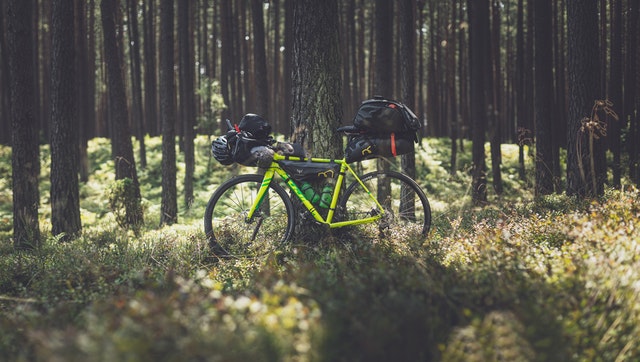
Welcome to the most complete guide on how to plan a bike trip (or a bikepacking trip).
Traveling by bicycle is a synonym of freedom and a dream-come-true for many people. However, setting off from the safety and comfort of your home for the first time can be daunting.
Trust me, I know because I’ve been there myself. So far, I’ve traveled through around 20 countries , covering more than 20,000 miles on two wheels and carrying all of my worldly possessions stuffed in a few bike bags.
As the popular saying goes:
A bicycle ride around the world begins with a single pedal stroke.
In this guide, I’ll help you make that first pedal stroke. I’ll answer all the main questions you might have about planning a bike trip through an actionable step-by-step approach that’s super easy to follow.
See you somewhere on the road once you’ve finished reading!
Step 1: What Kind of a Bike Trip Do You Want to Do?
Step 2: how much does bicycle touring cost, step 3: plan a bike trip based on your free time and fitness level, step 4: research interesting bicycle touring routes, step 5: create a route with one of the popular apps, step 6: choosing the best bicycle for your cycling adventure, step 7: how to carry gear while bicycle touring, step 8: how to cook food on a bike trip, step 9: create a bicycle touring gear checklist, step 10: do you need camping and sleeping gear, step 11: prepare physically if you need to, step 12: learn proper bicycle maintenance, bonus step 1: get travel insurance, bonus step 2: get a bike fit, bonus step 3: learn the language of the country, final words.
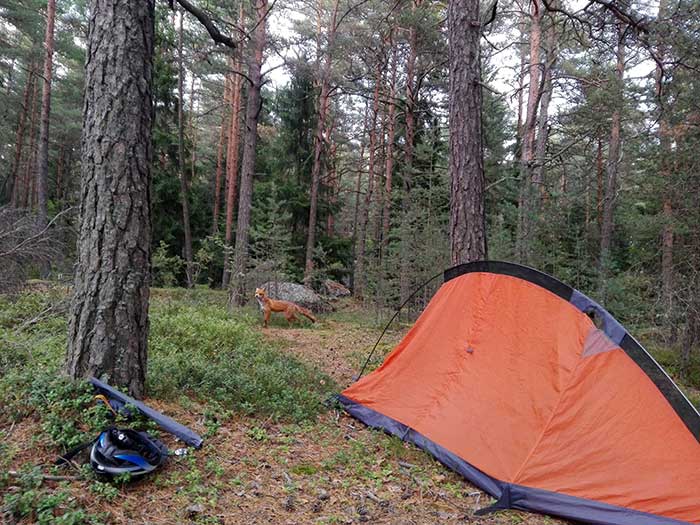
Little did I know when I was thinking about doing my first bicycle trip that there was not just one kind. There are actually a large number of different types of bicycle tours.
The first thing that you should think about is whether you want to go alone, with a friend, or with a group of people. Each of these options is fun and fulfilling and comes with advantages and disadvantages.
- Going on a solo bike touring adventure lets you set your own pace and do things the way you like. You can decide where you want to go, how fast or how slow. You decide when you want to stop, take a rest, or even turn around and go back home. However, the disadvantage is that you might feel lonely at times, especially if you are a people person. Also, doing your first cycle tour alone might be intimidating for some people.
- Going on a group bicycle tour or with a friend means that you will have to make more compromises. You’ll need to make all the decisions together regarding the tour plans and the itinerary. However, you’ll have someone to share the good and the bad moments of the trip at all times, which is a big plus.
The Main Types of Bike Tours
While you’re thinking about whether to bicycle tour solo or in a pack, you should also consider all of these different types of bicycle tours:
- Guided Cycle Tours – A bicycle tour in which you pay a company or a guide to take you along a predefined route. Typically, a support van will carry all of your belongings from one checkpoint to another.
- Self-Guided Bicycle Tours – This type differs from the one above in that a company will provide you with a route, lodging, and meals, but you won’t be accompanied by a guide while cycling.
- Self-Supported Bike Tours – This bike touring type requires you to travel alone (without a guide), choose your own route, and carry all of your belongings.
- Supported Bicycle Trips – If you have a friend, family member, or a crew driving along and assisting you on your tour, you would call it supported.
- Overnight/Weekend Tours – Pretty self-explanatory. The idea is that you don’t really need weeks or months to do adventure cycling!
- Credit Card Touring – A tour in which you carry only the barebone essentials and buy everything you need along the way. You would typically pay to sleep in a hotel every night and buy food every day.
- Bikepacking Trips – This is often a mountain bike trip where you’re carrying as little gear as possible. This type of touring is usually done on a mountain bike, with frame bags instead of panniers.
- Expedition Cycle Touring – This type refers to long tours through remote areas, developing countries, and on routes off the beaten path. These are almost exclusively self-supported cycle tours.
Related: Best Self-Guided Bike Tours
As you can see, there are many different ways in which you can travel on a bicycle. It does not need to be extreme or ultra-long unless you want it to be.
The point is, cycle touring is not reserved only for adventurers who are willing to say goodbye to civilization and all of their worldly possessions.
Instead, anyone can do it, including the elderly, and even parents with children.
Related: Long Distance Cycling
Now that you have an idea of what type of bicycle touring you want to do, you can start thinking about your budget.
A lot of people don’t know this, but cycle traveling is actually very cheap. A lot of people do it on a ~$5-$10 daily budget, which is easy to achieve, especially if you travel away from touristy places. However, this is only possible on self-supported tours.
Guided bicycle tours are more expensive. You have to pay the company that will, in turn, hire a guide, a support van, organize the entire trip, book lodgings, and prepare food for you.
If you want to do a self-supported bike trip, it’s possible to travel on $10-$20 a day pretty much anywhere in the world, including bike trips in the US and Europe. If you wild camp and cook your own meals, the majority of your money will be spent on food and drinks.
Gear-Related Expenses
One thing to keep in mind when you plan a bike trip is that you will have to spend some money before setting off on your adventure to purchase all the necessary cycle touring equipment.
…you’re probably looking at spending around $1,500 to $2,000 on a touring bicycle and another $1,000 to $1,500 on additional gear.
It’s hard to say exactly how much money you’ll need because it depends on what kind of gear you plan to purchase. If you want high-end equipment, you’re probably looking at spending around $1,500 to $2,000 on a touring bicycle and another $1,000 to $1,500 on additional gear.
However, if you get budget-friendly gear, you can purchase an entry-level bike and some basic gear for less than $1,000 in total.
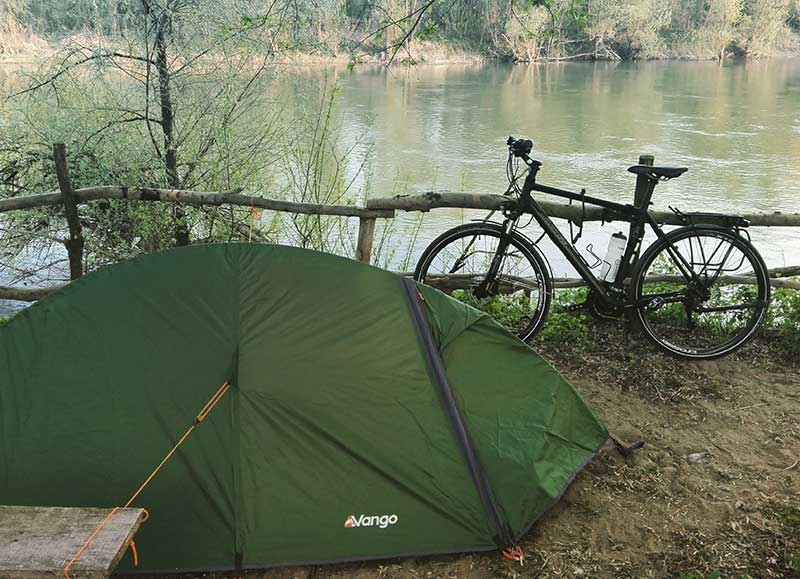
Before you can plan a bicycle road trip any further, you should determine how much free time you have at your disposal and what distance you can ride every day.
The worst thing you can do is plan to cover too many miles, finding yourself in a constant rush, unable to enjoy your vacation. Even worse, you could put too much pressure on your body and cause an injury that would force you to quit.
On average, a fit cycle tourist can ride around 60–80 miles a day comfortably on paved roads. Some do more than that, others less.
Personally, I aim to ride anywhere between 50 and 80 miles, depending on the terrain, how I feel, and my sightseeing plans. One piece of advice I can give you is to always plan for less and then do more if conditions allow for it.
Training for cycle touring is a good idea, but it’s not necessary. Before long cycle tours, it’s advisable to try to emulate the effort you will do while traveling to get your legs used to the mileage and your body used to sitting on a bicycle for hours every day.
It’s much better to deal with sore muscles and saddle sores before your trip than having to suffer through it during the first several days/weeks of your trip.
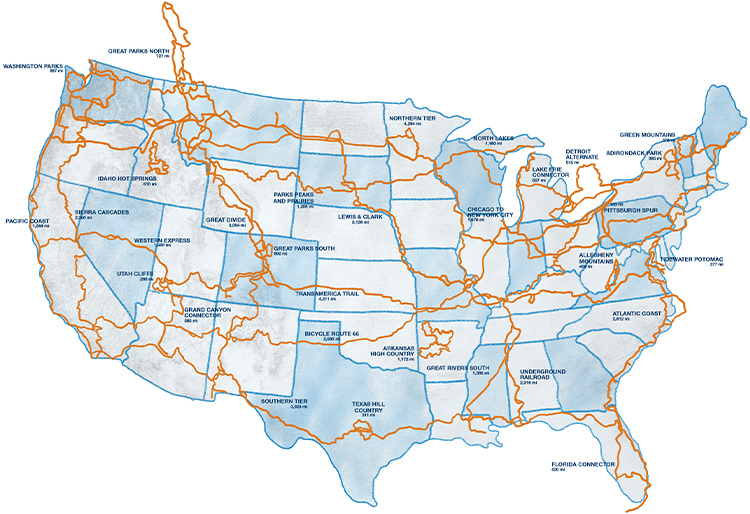
Personally, this is the favorite part of planning a bike trip for me!
If you followed the step above, you now know approximately what distance you can cover on your tour. So let’s research some interesting routes and find the one to follow.
The important thing to keep in mind here is that your home does not need to be the starting point of your cycling adventure.
Related : Best Bike Racks for Cars
Instead of limiting yourself to the area close to where you live, you can hop on a train, bus, or even an airplane and explore another area or another country. Keep in mind that if you plan to transport your bike on an airplane, you will have to pack it properly and make sure not to fit within the bike box dimensions limit.
If you’re planning your first road bike tour, I recommend staying close to home just in case something goes wrong with your bike or gear. The same goes for backroads bike trips.
Follow a Well-Known Cycling Route
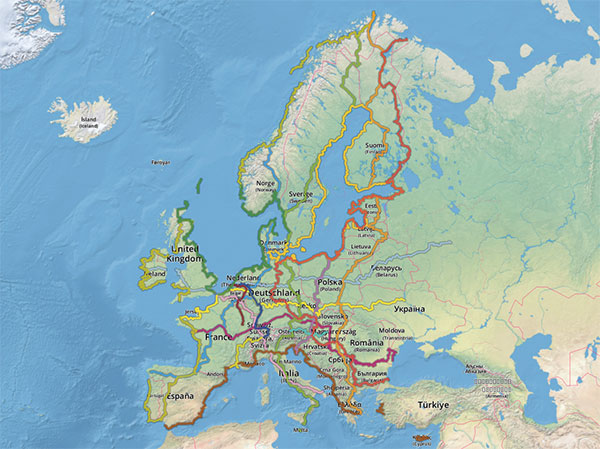
There are numerous popular cycling routes around the world ridden by thousands and even tens of thousands of cyclists every year.
The Eurovelo routes in Europe are a good example. This is a system of 19 routes that traverse the entire continent, navigating all European countries, from Scandinavia to Turkey. This makes bike trips in Europe a lot easier.
Related: Cycling Tour Guide: Across Estonia in a Week
These routes will take you through the most scenic roads in a country, showing you the most important places. They’re also usually nicely marked, so they’re pretty easy to follow. There’s also great infrastructure along these routes, including hotels, camping spots, towns and cities, shops, and more.
That makes them a great choice for touring beginners.

The first thing to remember is to stay off of highways and busy roads with lots of traffic. Ideally, you should aim for side roads and gravel roads, which will have a lot less traffic.
In my experience, such roads are also usually a lot more scenic, even though they are often not the fastest way to get from point A to point B.
There are many different apps you can use to create a route to follow while traveling. Some of the most popular ones include:
- RideWithGPS
Related: Best Cycling Apps
However, my favorite one and the one I use the most is Google Maps. It works both online and offline and has extremely detailed information on roads, topography, satellite imaging, and important places along the way.
The way I go about it is to first roughly decide where I want to start and finish my bike trip. After that, I start researching places that I would love to visit along the way. I bookmark them and create a route by adding checkpoints from one place to another.
Exporting Routes from Google Maps
If you intend to use Google Maps as your main app while traveling, you can just save the link to that route in your smartphone and load it whenever you need to.
However, if you plan to use a different app, you can export that route as a GPX file and then import it into the app that you plan to use. The way to do this is as follows:
- Create a route in Google Maps.
- Click on the Menu button (upper left corner).
- Click on “Share or Embed Map” and then on “Copy Link”.
- Go to MapsToGPX and paste the link from Google Maps.
- Now you should have a GPX file that you can import into your preferred app and start riding.
The reason why you have to follow these steps is that Google does not offer the option to save a route as a GPX file in their app or on their website.
Even when you create a detailed map, I’d advise against following it 100% at any cost. Be prepared to improvise and change your plans if need be.
I’ve done numerous rides without any plans set in stone, just with a rough idea of where I want to get. I would then explore as I go along, asking locals to recommend the best (least busy or most scenic) route that I could take. These trips have been some of my most memorable ones!

Now that you know what kind of a route you want to do, you can figure out if the bicycle you have is suitable for such a trip or if you need to get a different type of touring bike.
When looking for a touring or a bikepacking bicycle, the main characteristics you should focus on are stability, durability, and comfort. In most cases, speed is less relevant.
The reason is that you will be spending hours on the saddle every day, so you need a bicycle that puts your body in a relaxed position that you can easily maintain for a long time.
Depending on what type of cycle adventure you intend to do, there are three types of bicycles you can choose from:
Road Touring Bicycles
These look like standard road bikes, but feature a more upright geometry and typically come with front and rear racks , as well as fenders. They usually roll on 700c wheels that are not too wide, so they are efficient on paved roads.
Related: Different Types of Road Bikes
Adventure Touring Bicycles
This type also looks similar to traditional road bikes but comes with burlier 650b wheels that are more suitable for off-road riding. Lately, many travelers have been choosing gravel bicycles for this purpose, as they check all the necessary boxes.
Bikepacking Bicycles
Lastly, if you plan to do a mountain bike trip, on singletracks or dirt roads, you should get a bikepacking bicycle. Basically, these are mountain bicycles (rigid or hardtail) with numerous eyelets to mount panniers and bags, and with a relaxed geometry.
Main Features of Touring Bicycles

Though touring bicycles look very similar to road bicycles and bikepacking to mountain bicycles, they come with some crucial differences.
Some main characteristics that all touring and bikepacking bicycles should include:
- Long wheelbase for more stability.
- Upright geometry for a relaxed riding position.
- Wider and more durable tires.
- Strong wheels with at least 32 spokes.
- A large number and a wide range of gears.
- Numerous eyelets on both the frame and the fork.
- Accessories such as racks, fenders, a kickstand, frame bags, etc.
Related: Best Touring Bikes
To sum, in theory, you can use any type of bicycle to go on an unforgettable adventure. However, if you want to feel comfortable and get the right tool for the job, you should invest in a bike that is made specifically for this purpose.
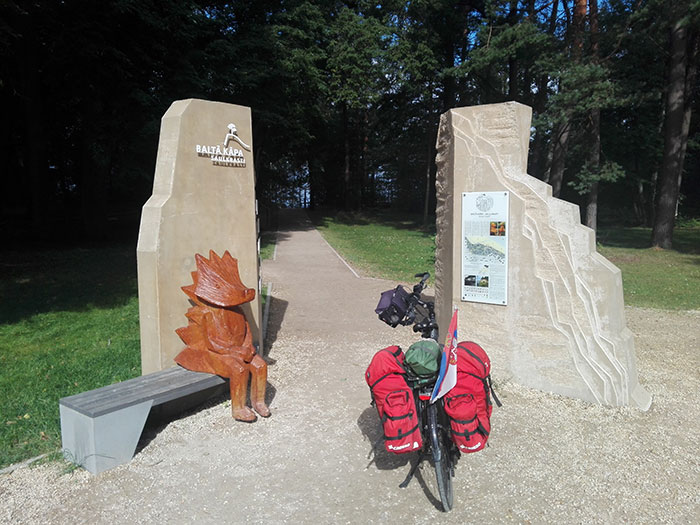
You have a bicycle, you’ve planned your trip, chosen the route, now you need a way to carry all of your necessities on your bike.
There are two options you can go with when it comes to touring bags. Both options have pros and cons and are better or worse for specific types of cycling adventures.
Bicycle Touring Panniers
Bicycle touring panniers are large, bulky, and heavy, but they allow you to carry a lot more gear than frame bags. You can usually carry a total of four panniers on your bicycle at the same time—two on the front and two on the back. This is a great option for road touring, but not so good for off-road tours.
Bikepacking Frame Bags
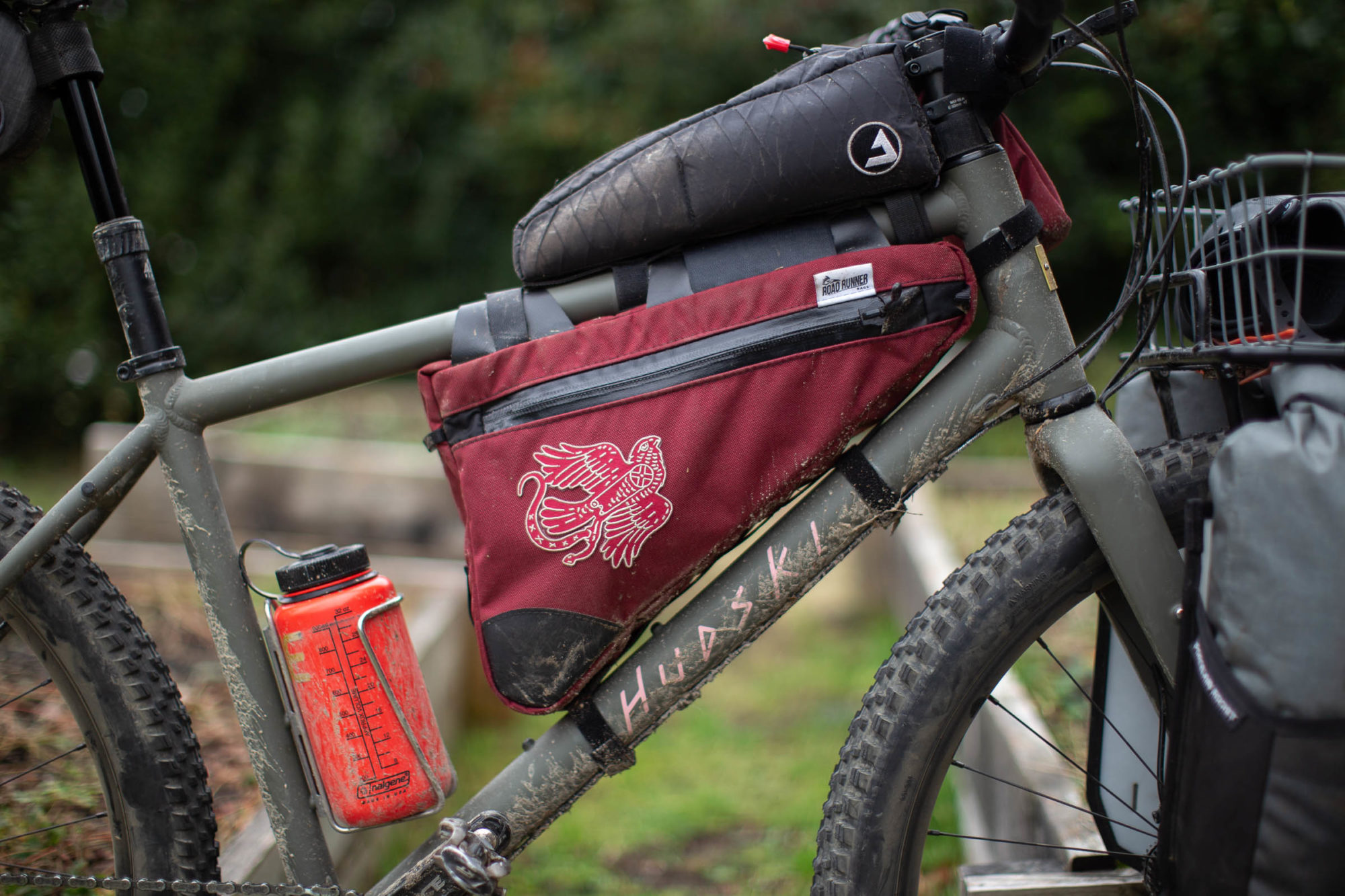
Bikepacking trip frame bags, as the name tells you, fit around the frame of your bicycle. Bike travelers usually go for a saddlebag, a handlebar bag, and a frame bag. Sometimes they even combine this setup with a pair of panniers to maximize their carrying capacity. Frame bags are lighter than panniers, but they are also smaller, so you have to travel lightly. They are the go-to choice for light and ultra-light touring adventures.
Related: Best Bikepacking Bags
After your bicycle, your panniers/frame bags will be the most important piece of equipment on your tour. Therefore, they should be well-built and made from durable materials so they don’t fall apart mid-tour (I’ve had that happen to me, and it’s not fun).
Bicycle bags for long-tour bike trips should meet the following criteria if you want to avoid having headaches:
- They should be 100% waterproof, with sealed seams.
- Easy to fit on and remove from the bicycle.
- A stiff, reinforced backside that rests against the rack.
- Made from durable materials.
- Have great reviews online and a proven track record.
- Don’t have too many zippers and compartments that could break or unstitch. The simpler the better.
There are many different manufacturers out there who specialize in making amazing bicycle panniers and frame bags.
However, there are a few names that you will repeatedly hear world bicycle travelers ramble about with excitement anytime you talk to them on this topic. These are:
- Axiom, and a few others.
If you plan to do long-distance touring, you won’t make a mistake if you get a set of panniers or bags from one of these manufacturers. Their products have been tried and tested time and again, in the harshest of conditions.
Personally, I’ve had a phenomenal experience with Ortlieb and Crosso bike touring panniers and Apidura frame bags. But I’ve heard great things about the other brands as well.
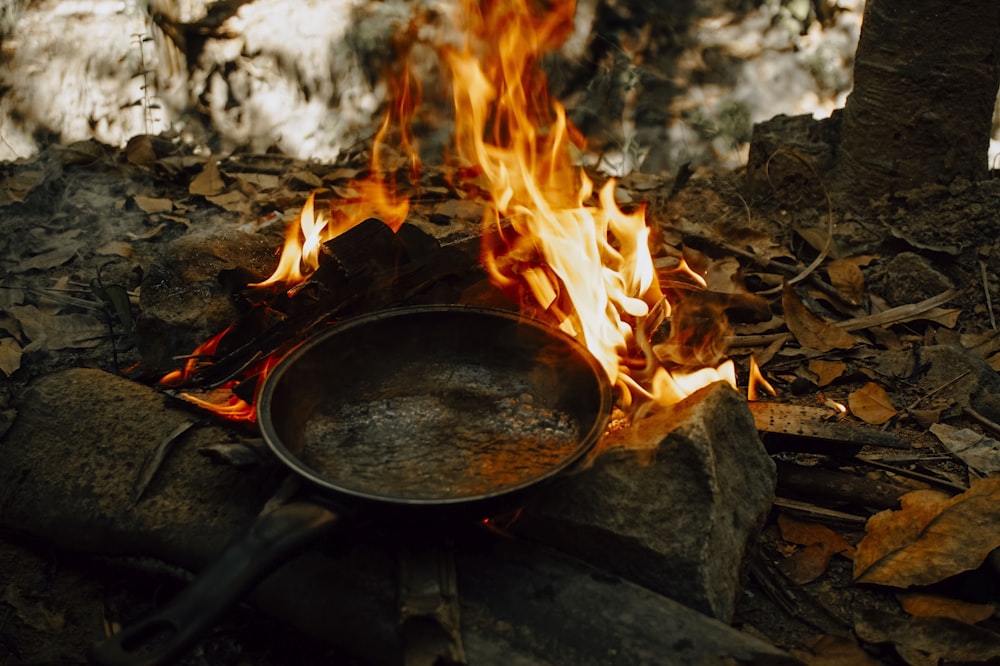
To cook or not to cook, that is the question.
Depending on the type of bicycle trip you want to do and the area in which you plan to ride, you might choose to cook your own food or eat at restaurants or convenience stores.
Your decision about whether or not to cook your own food will be influenced by two main factors: budget and weight.
Cooking your own food is the cheapest option, but you will have to carry a stove, fuel, and cooking equipment, which can add up to 10 lbs. of weight to your gear, or even more.
If you do end up making your own food and/or bonfire make sure to put it out before leaving (and picking up your trash).
The hierarchy of food-related costs for bicycle touring and bikepacking trips goes something like this:
- Eating at restaurants: The most convenient but the most expensive option.
- Eating sandwiches and ready-made meals from supermarkets and convenience stores: Less expensive, but still very convenient. Not as healthy nor as tasty as the next option.
- Buying groceries and cooking: The cheapest option by far. Requires more effort and planning, as well as carrying more weight.
So, if you want to prioritize convenience, bring a credit card or a lot of cash and eat at restaurants. If, however, you want to stretch your budget as much as possible, cooking is the way to go.
There are times when you won’t have a choice but to prepare your own food. If you’re bikepacking in remote areas, you won’t have the option of visiting restaurants or well-stocked supermarkets and stores. The same goes for developing countries with poor infrastructure.
As a general rule of thumb, if you’re not passing through a large village or a town at least once a day or once in two days, it’s advisable to carry cooking equipment.
Types of Camp Stoves

When it comes to cooking equipment for bicycle touring and bikepacking trips, we can classify it into three main groups:
- Canister stoves: These are lightweight and easy-to-use stoves that don’t take too much space. They usually screw on top of gas canisters filled with isobutane or propane.
- Liquid fuel stoves: These stoves connect to refillable bottles that can carry different types of liquid fuels, such as white gas, kerosene, unleaded, etc. They are heavier than canister stoves, but more versatile, especially if you’re traveling in remote areas.
- Alternative-fuel stoves: These stoves use fuel pellets, wood, alcohol, and other types of fuel. They’re very lightweight but not as convenient as the two other types.
In addition to carrying a camp stove and a source of fuel, you need to carry other cooking and eating equipment. Some of the things I always carry that might also work for you include:
- A big pot with a lid (up to 2.5L)
- A metal cup
- Some detergent
- A pocket knife
- Windscreen for your camping stove
Bear in mind, these are just the essentials for me. You might make do without some of these things, or your list of essentials may be twice as long.
When you plan a bike trip for the first time, you’re bound to make mistakes. With each subsequent trip, you’ll find it easier to define your priorities and carry only the essentials.

The next step when planning a bike trip is to create a touring gear checklist.
Traveling on a bicycle is a minimalist undertaking. While on the road, you’ll usually have access only to bare necessities. You need to be able to carry your entire home in a pair of panniers and/or frame bags. That means your list of cycle touring equipment will be quite short.
The good news is that the list of bike touring gear does not get longer with the length of your trip. You’ll need to carry the same amount of stuff for a 7-day trip, as well as for a 7-month trip.
Here are some of the things that you can find on and around my bike and in my panniers when I’m bike touring.
On-Bike Clothes
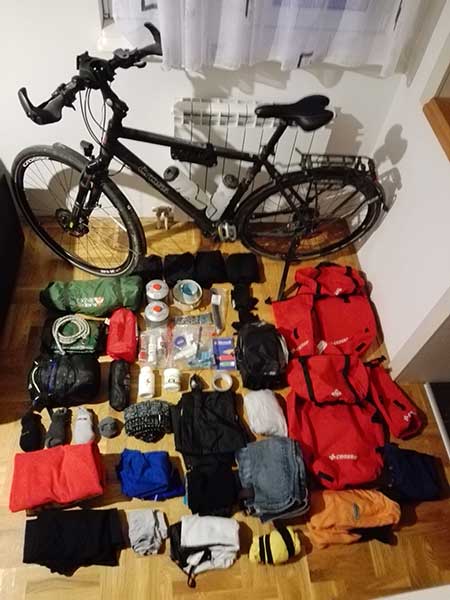
Note: The list can change depending on where I’m riding and the season.
- Two or three pairs of cycling shorts
- A few pairs of wool or synthetic socks
- Two or three pairs of cycling jerseys or dry-fit t-shirts
- Cycling helmet
- Cycling gloves
- Rain jacket and rain pants
- Long-sleeve shirt or a light jacket
- Down jacket
Off-Bike Clothes
- Comfy shorts
- Comfy pants
- Several pairs of underwear
- Sandals or flip-flops
- One or two t-shirts
- A nice shirt for going out
Bike Tools and Spares
Note: Depending on where you ride, you might need to bring more spares.
- Tire patch kit and tire levers
- Spare tube (or two)
Camping Gear
Note: This is just camping gear that works for the majority of my trips. You might use a hammock instead of a tent, or any different type of setup.
- Sleeping bag
- Inflatable sleeping pad
- Ground cloth
- Sleeping bag liner
- Cooking equipment
- Personal eating utensils
Personal Items
- Pocket knife
- Lightweight cable lock (for quick stops)
- First-aid kit
- A pen and a notebook
- Waterproof document sack
This is a list that works for me, that I tailored to fit my needs after years of traveling. When you plan a bike trip for the first time, you’re bound to make mistakes.
Unless you’re perfect, you’ll likely bring too much stuff or forget to bring something that you’ll need frequently. After a few trips, you’ll have a much better idea of what you should pack in your bags and what you should leave at home.
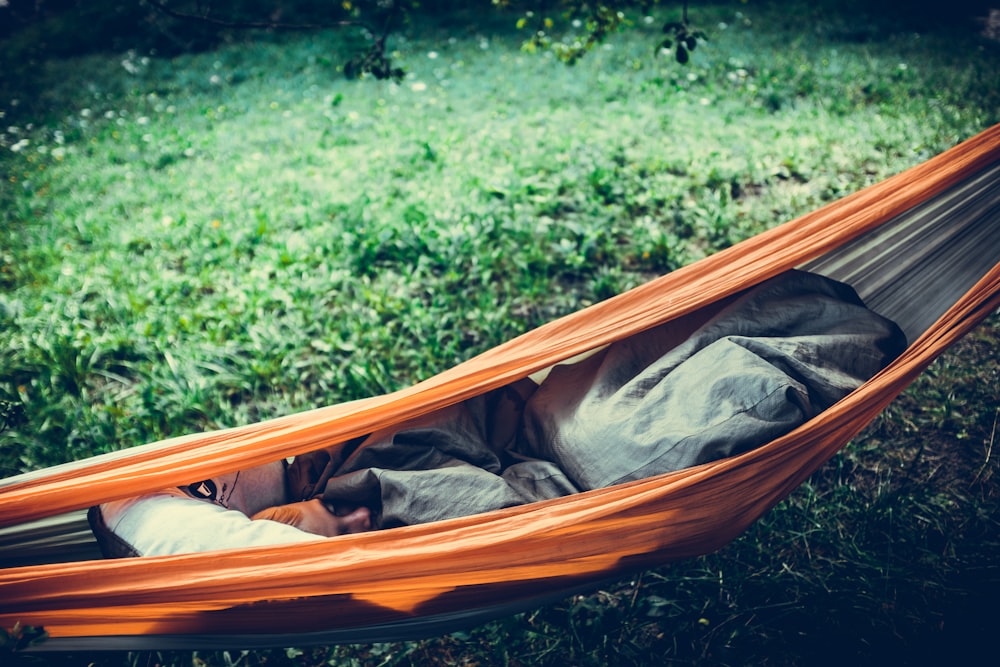
If you plan to camp, you need to get a tent and sleeping gear. Determine what type of camping equipment you need, depending on the season, temperature, rain, duration of the trip, etc. Keep in mind that this is important stuff that you don’t want to skimp on it.
The camping equipment you bring with you will be your home for the remainder of the trip, so you want to feel comfortable and safe.
Camping in a tent is not the only option you have for sleeping outside. There are a few other lighter and just as popular solutions:
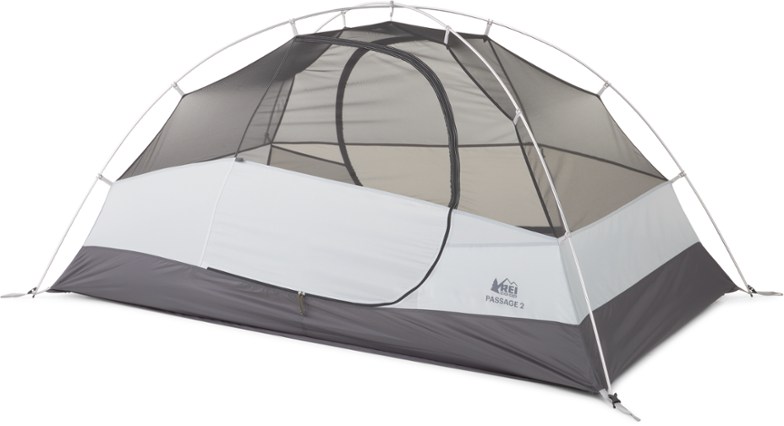
A tent is by far the coziest and the most comfortable way to camp. You get excellent protection from the elements, bugs can’t get in, and in most cases, you have a decent amount of livable space. It’s like a pop-up home!
The only trade-off for bringing a tent with you is the weight and the time you need to set it up. If you’re trying to travel as light as possible, you might not like the additional 1–2kg a one-person or two-person tent adds to your setup. In all other cases, this is completely acceptable.
The price is another potential drawback as tents can get quite pricey. Despite that, it’s the most common choice of bicycle tourers and bikepackers around the world, including me.
Unless you’re traveling in extreme weather (snow blizzards and severe storms), you should be looking at getting a three-season tent. These tents strike a balance between weight, protection, and price. They have an inner mesh construction that will protect you from bugs and keep the tent well ventilated and a rainfly that will protect you from the wind, rain, and snow.
If you don’t mind carrying some additional weight and spending a bit of time to set up the tent in the evening, this is the option I recommend and use the most.

A tarp is one of the most versatile types of camping equipment, but it comes with some drawbacks as well.
It gives you complete freedom to set it up however you want. If there’s a lot of wind and rain, you can slant it right down to the ground and get excellent protection. Otherwise, you can raise it up and get tons of livable space. You can also slant the tarp against the wind and move it around if the wind direction changes.
However, a tarp will not protect you against mozzies and other critters. You’ll be completely exposed, which is a plus for some bike tourers, but a deal-breaker for others.
In general, tarps are relatively lightweight and inexpensive, but it takes some time to figure out how to set them up properly and refine your knot-making skills.

A bivy is by far the most lightweight shelter you can find and my least favorite one. Basically, a bivy is a weatherproof sack that you put over your sleeping bag and crawl into to go to sleep.
One of the things I don’t like about them is the perspiration. If your bivy does not have good breathability, your sleeping bag can get damp in the morning from all the perspiration that had nowhere to go.
However, there’s no doubt that bivy sacks save a lot of weight and give you a unique chance to sleep under the stars.

Last but not least, a hammock is a unique type of shelter that can be the perfect solution in certain cases. A hammock is essentially a hanging bivy, which has its upsides and downsides. If you combine it with a tarp and a bug net, you can get pretty good protection from critters and the elements.
Hammocks keep you up and away from the ground which is a plus if you’re traveling during the rainy season or in areas that are especially damp.
Sleeping above the ground will also keep you away from any animals that roam beneath you. I’ve learned this is especially important in areas with a high wild boar population.
Though, keep in mind that getting a good night’s sleep in a hammock takes some getting used to. And there are some dangers that come with sleeping in a hanging sack—such as injured pride, or worse.
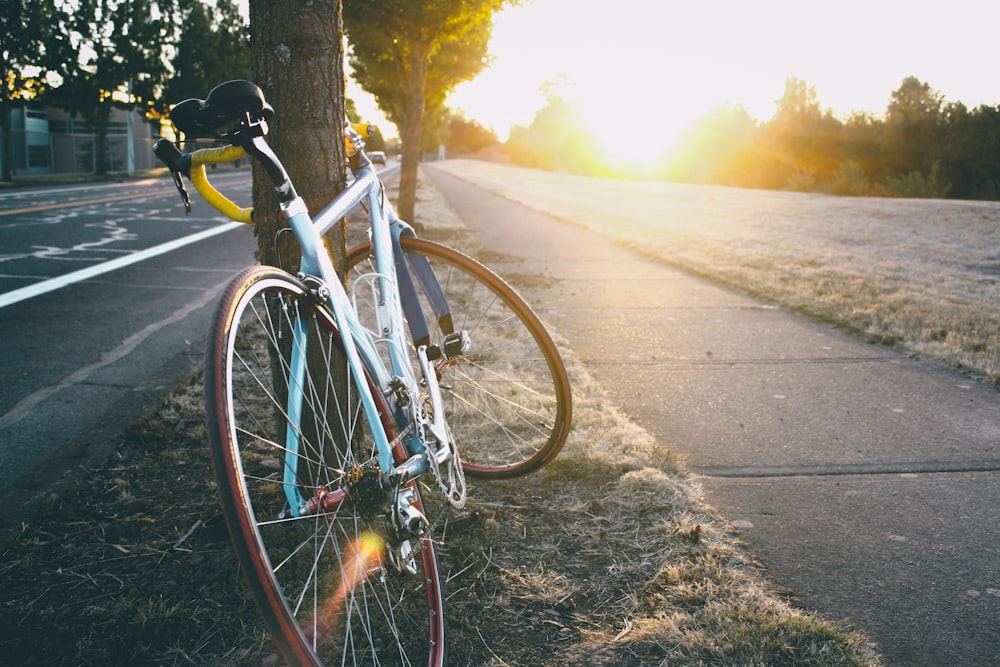
If you’re doing a very long trip or you plan to do a lot of miles every day, consider doing a few shorter tours beforehand or training a few weeks or months before.
You don’t have to do this, you will enjoy the first days/weeks of your trip a lot more if you do. Otherwise, you will feel miserable until your muscles and your bum stop being sore.
This is also a good time to see if you’re happy with the setup you have. That is, if your bike feels good, if your saddle is comfortable, if some of your gear is simply dead weight or if you need to include additional gear.
Most of your days on the road will consist of zone 2 (endurance) riding, so this is the type of riding you should focus on in your training. It’s the type of effort that you can comfortably maintain all day long and then repeat it the day after.
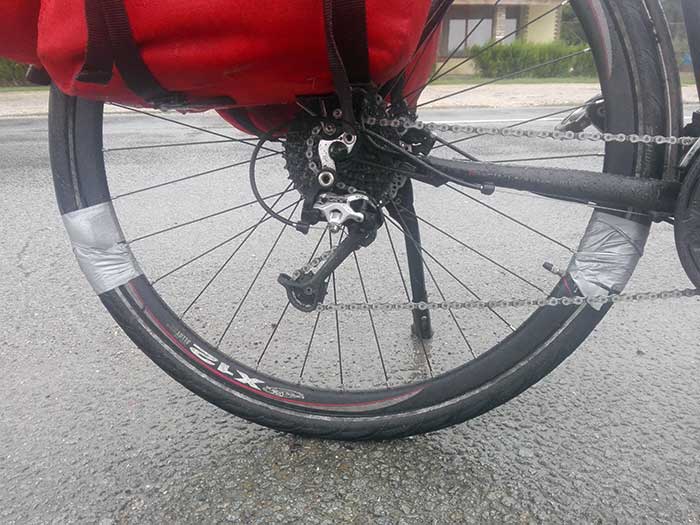
This is a very important step when it comes to planning your bike trip. It can make or break your adventure. You need to be ready to do regular maintenance on your bike and do small repairs when necessary without relying on others.
Some of the most important stuff you should learn how to do include:
- Cleaning and lubing the chain
- Replacing the chain
- Repairing and changing a flat tube
- Adjusting the derailleurs and brakes
- Replacing a derailleur hanger
- Replacing spokes and truing the wheels
This might seem like complicated stuff if you’ve never done it before, but it really isn’t. You can do all of it with very basic tools, such as a high-quality multitool, and you can learn how to do all of it by watching YouTube videos.
Related: Bike Repair Kits (Includes a checklist of must-haves)

Any discomfort you feel on your regular rides will become ten times worse when you’re on a bike trip. All you will do every day is sit on the bike and turn the pedals, so you need to make sure that you’re not doing your body any harm.
Read more about the importance and how to fit the saddle, handlebar, and other aspects of your bike.

Learn how to say “Hello,” “Thank you,” “I’m sorry,” as well as how to ask for directions. The locals will appreciate it, they will usually go out of their way to help you, and you’ll have a much better time not feeling like a complete alien in a new country.
Congrats on coming this far and learning how to plan your own bike trips!
As you can see, even though the whole process seemed complex and daunting in the beginning, you don’t really need much to start traveling on two wheels.
Hopefully, this guide has answered any questions you might have had and cleared any remaining doubts. All there is to do now is get a bike, purchase some gear, pack your stuff, and hit the road with a big smile on your face!
Related Topics:
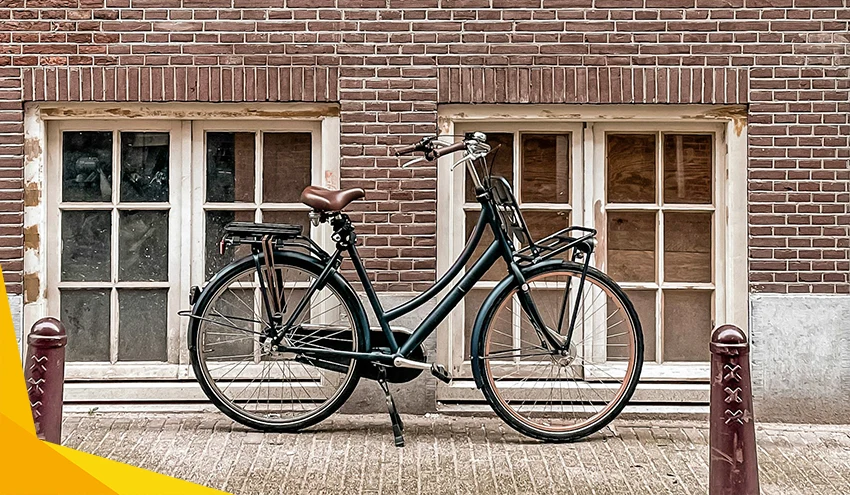
Top Dutch Bikes of 2024: A Comprehensive Buying Guide to Help You Choose
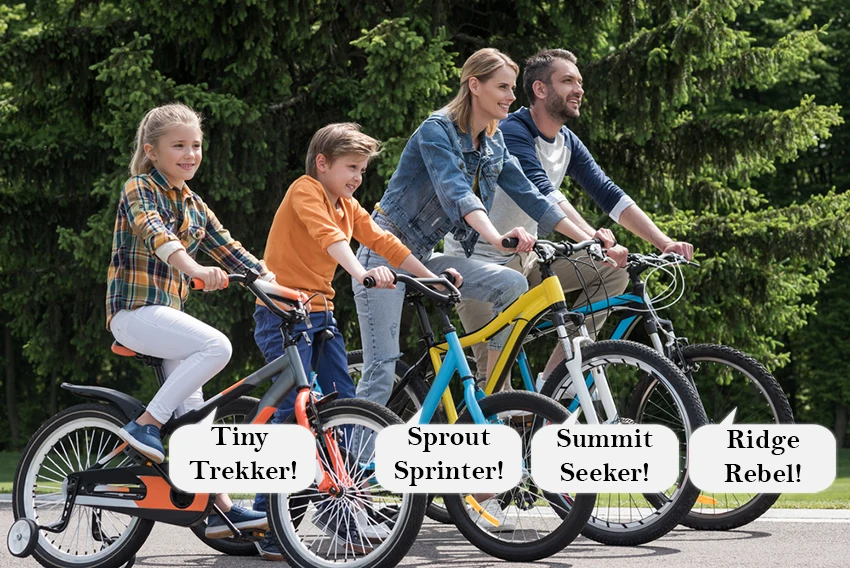
360+ Coolest Bike Names: Creative Ideas for All Bike Types
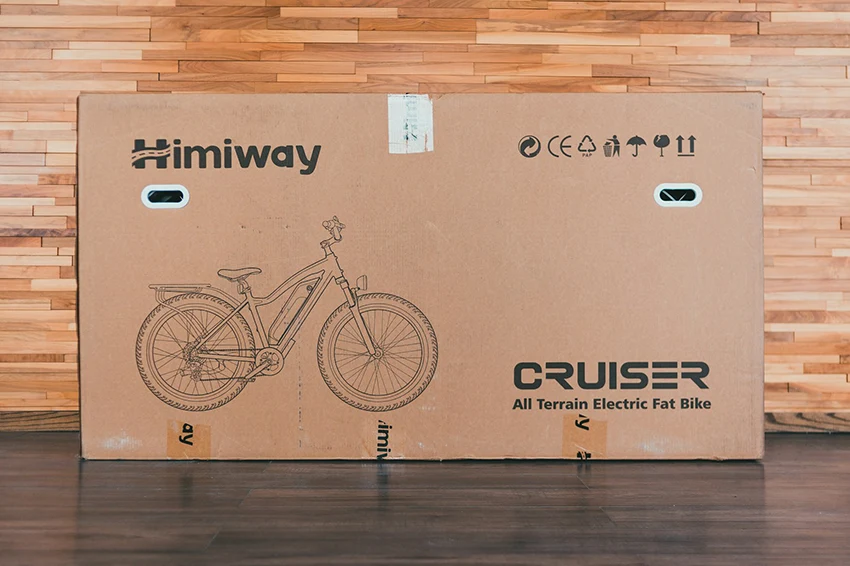
Understanding Bike Box Dimensions: A Guide to Hassle-Free Bicycle Transport
6 thoughts on “ how to prepare for a bike trip: everything to know before your first adventure ”.
Thanks a million. I’ve only been riding my handtrike for about a month but I am itchin to take my first tour. Do you have any additional advise for a handtrikeer? Larry
You’re welcome, Larry!
I don’t have any specific advice for touring on a handtrike, but what I can say is to just give it a try! Prepare, but don’t overthink. Go on a short overnight trip for starters, see what works for you and what doesn’t, and continue from there. And remember to have fun, don’t take it too seriously! Cheers!
Many, many thanks, Dusan. I learned a lot! Mike.
Hi Mike, Thanks for the feedback! Have a great bike trip!
I appreciate this article about bike trips. I am hoping to go on a trip next year. When I go on a bike tour, I’ll be sure to consider these tips.
It was really helpful when you said guided tours will help you with carrying your stuff. My brother wants to go on a bicycle tour. I’ll make sure to pass this information along to him so that he can know more about bike tours.
Leave a Reply Cancel reply
Your email address will not be published. Required fields are marked *
Popular Searches
- Portugal Bike Tours
- Family Trips
- National Parks
- River Cruises
- Women's Adventures
Bike Tours & Guided Cycling Trips
Since 1979, bike tours have been the core of who we are, and we’ve only gotten better with time. From the Rocky Mountains to the Tuscan countryside to Vietnam's Mekong River , our expert Trip Leaders guide you on the most scenic biking routes—far from the crowds and immersed in the region you’ve come to discover. Learn more about what you can expect when joining us on a Bike Tour. Check out our fleet of custom-built titanium bikes as well as our carbon options from Cannondale and Canyon.

A Taste of Camino de Santiago Bike Tour
NEW Couples, Friends & Solos
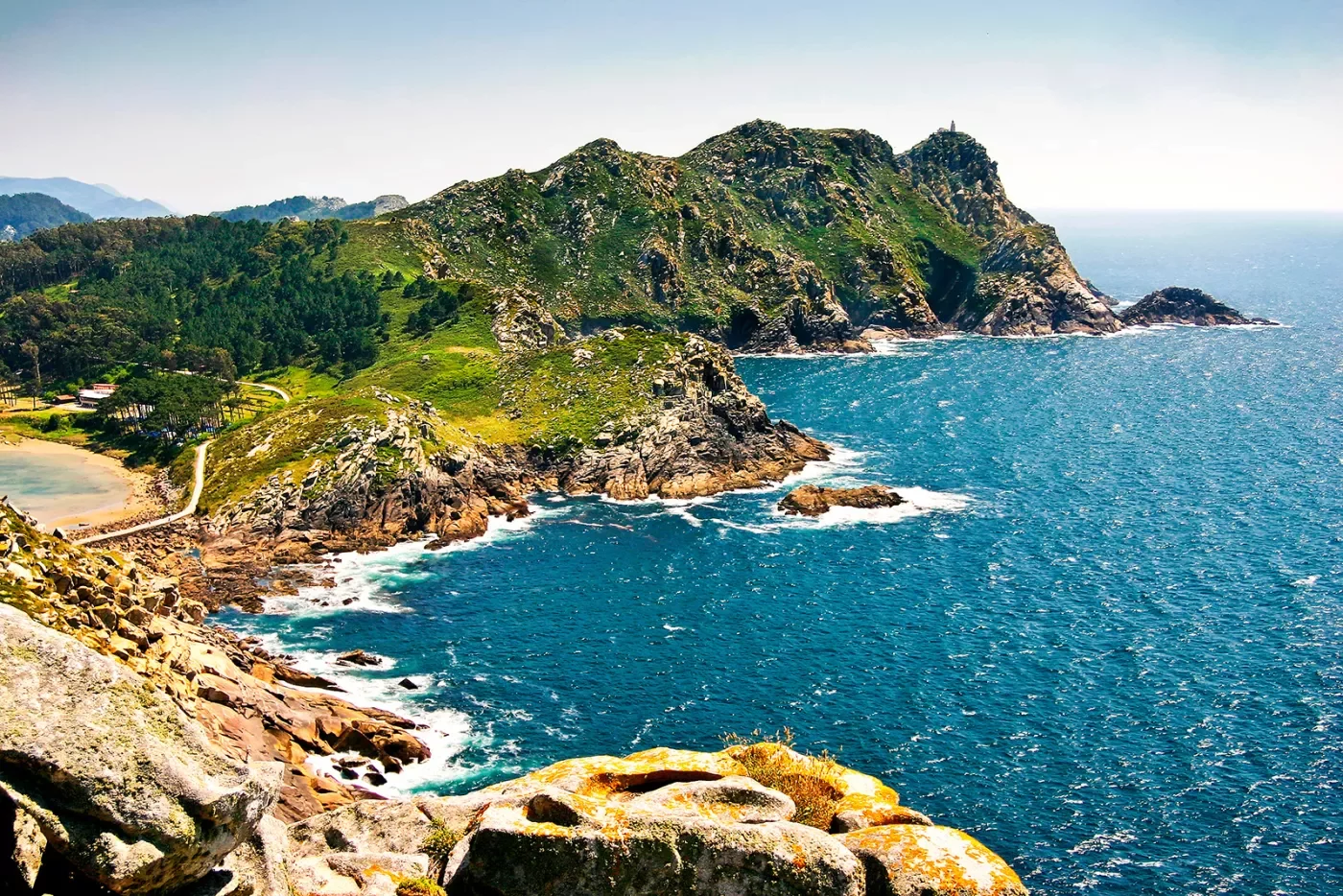
A Taste of Camino de Santiago Family Multi-Adventure Tour
The Way from Portugal to Spain
NEW Families with Older Teens & 20s
NEW Families with 20s & Beyond
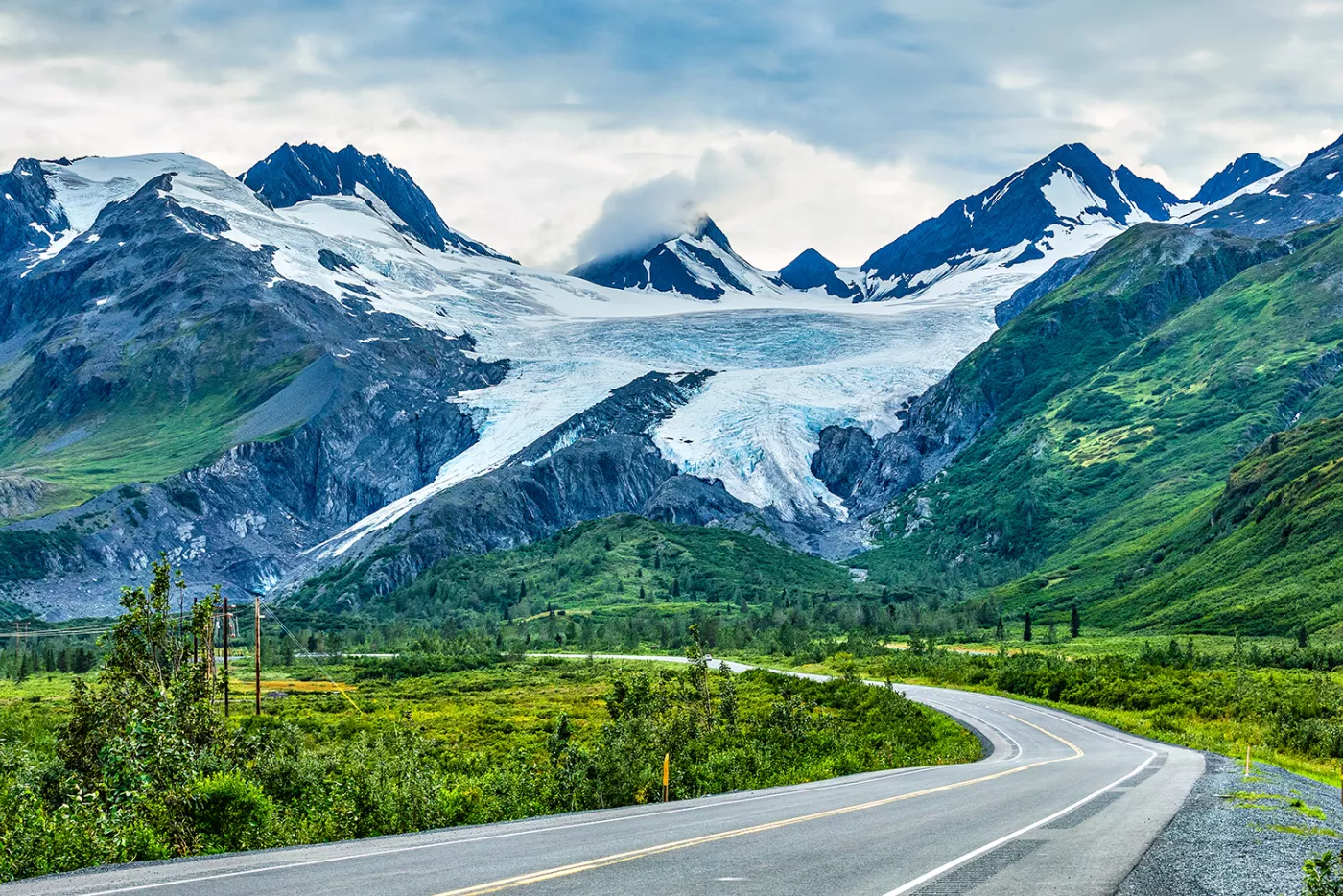
Alaska's Glaciers & Fjords Multi-Adventure Tour

Alaska's Kenai Multi-Adventure Tour
Couples, Friends & Solos
Families with Teens & Kids
Families with Older Teens & 20s
Families with 20s & Beyond
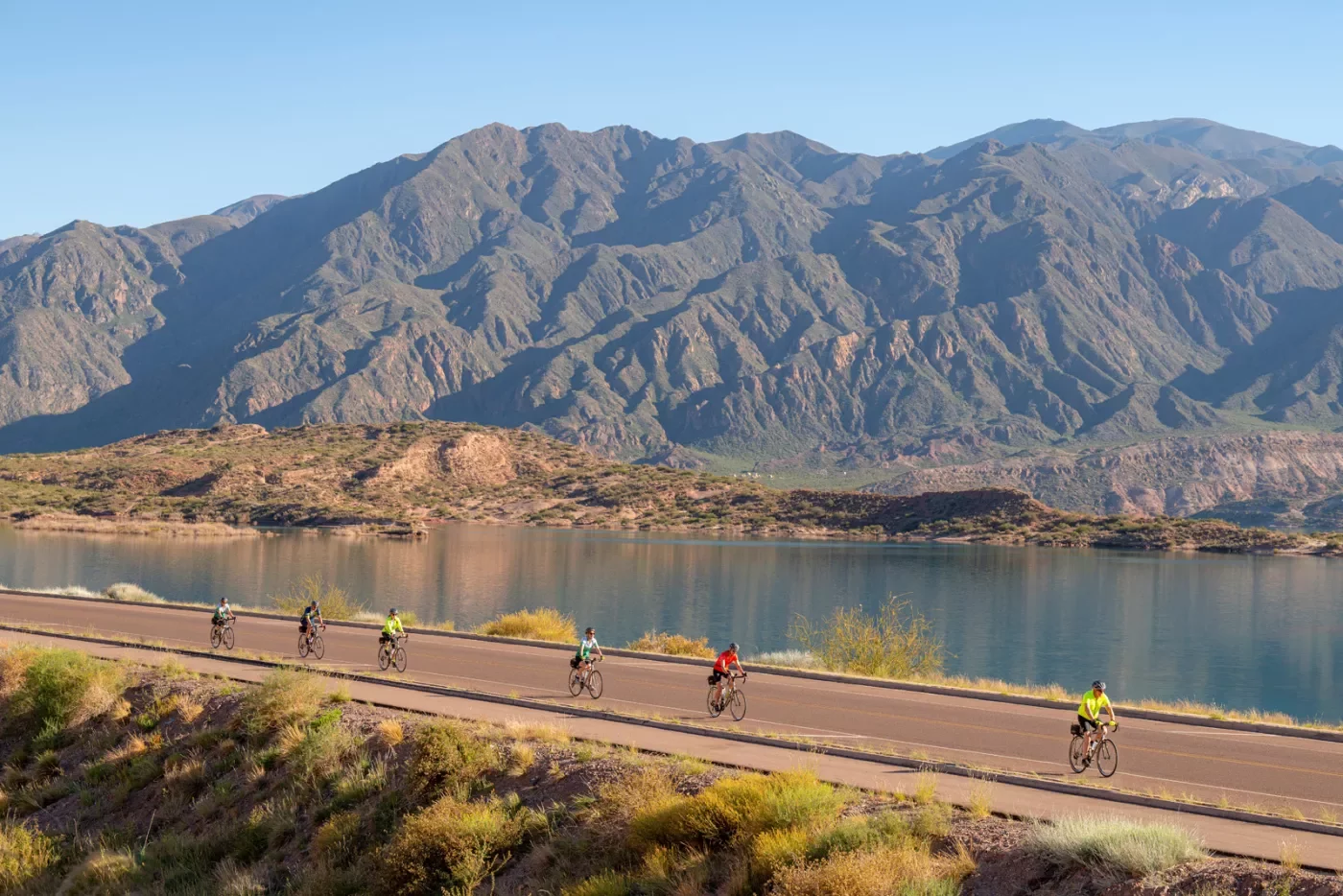
Argentina's Mendoza Multi-Adventure Tour

Argentina's Patagonia Lake District Multi-Adventure Tour

Arizona's Saguaro & Tucson Multi-Adventure Tour - 4-Day Getaway

Aspen's Glacial Valleys Bike Tour - 4-Day Getaway

Australia's Tasmania Multi-Adventure Tour
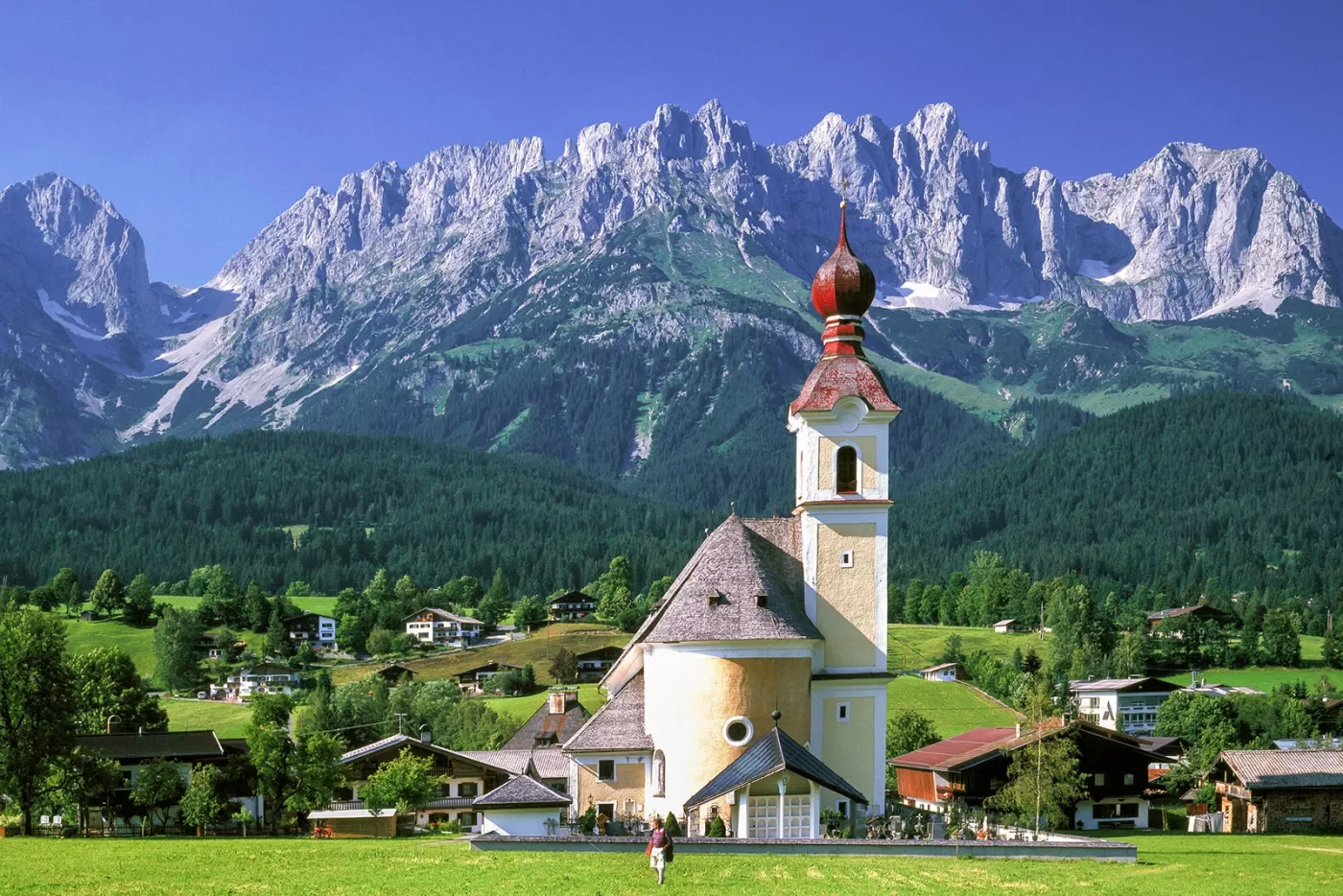
Austria & Germany Bike Tour

Austrian Alps & Italy's Dolomites Bike Tour

Bali Multi-Adventure Tour
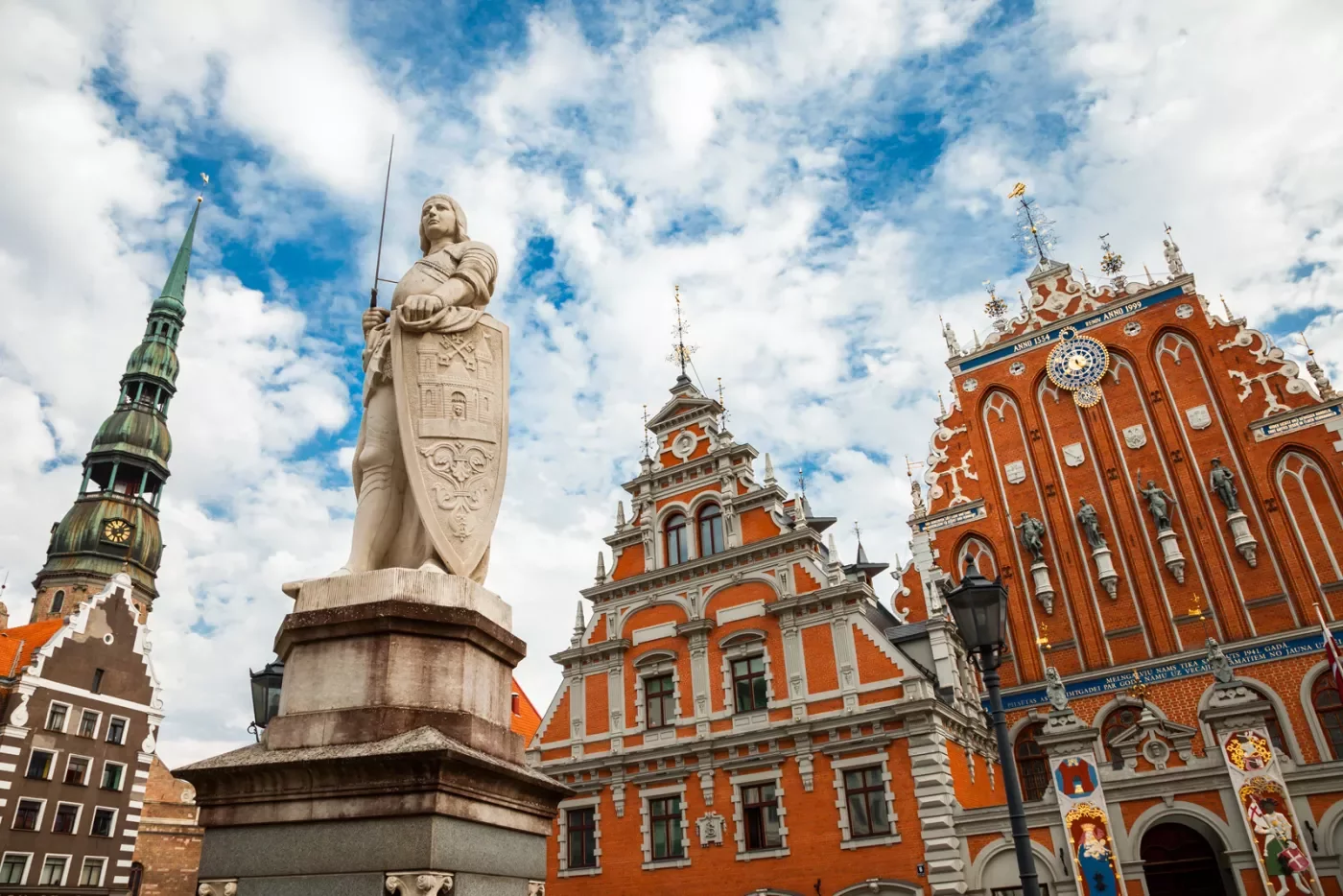
Baltics Bike Tour

Banff to Jasper Multi-Adventure Tour

Basque Country Bike Tour

Basque Country Multi-Adventure Tour

Belize & Guatemala Multi-Adventure Tour

Bend Oregon Multi-Adventure Tour
Crater Lake, Smith Rock & the Deschutes River

Berlin to Prague Bike Tour

Berlin to Prague Easygoing E-bike Tour

Bhutan Multi-Adventure Tour

Black Hills & Badlands National Park Multi-Adventure Tour

Bordeaux & Dordogne Bike Tour
NEW Women's Adventures

Bordeaux River Cruise Bike Tour
Discover your next adventure.
By sharing your email address, you agree to the practices described in our Privacy Policy .
Gear-obsessed editors choose every product we review. We may earn commission if you buy from a link. How we test gear.
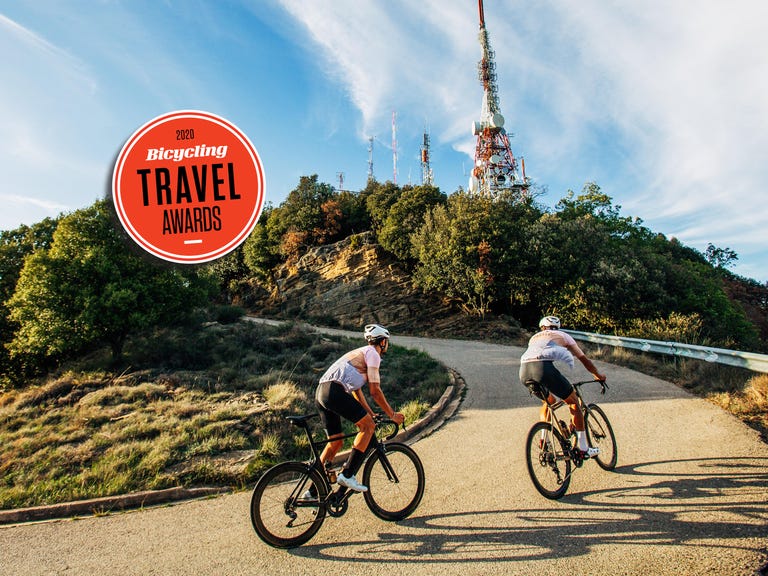
These Are the Best Bike Trips in the World
Where will you ride in 2020?
Every ride has the potential to take you someplace new. And when you devote your vacation days to do nothing but eat, drink, and ride your way around an unfamiliar destination, that experience becomes next level. There’s really no better way to connect with the sights, sounds, and culture of a region than on two wheels.
While there are thousands of outstanding cycling trips to choose from, only some are worthy of a Bicycling Travel Awards designation. Here’s how we determined the winners.
Our well-traveled editors looked at hundreds of bike tour companies from around the world and scrutinized their itineraries for average tour size, traveler reviews, value, custom options, and quality of the rental fleet. We also considered timeless essentials like staff training and logistical expertise that differentiate the best from the rest. We surveyed industry insiders for insight on what’s hot right now—off-the-beaten-track destinations like Slovenia and Colombia , the wild popularity of gravel riding, and a wider range of self-guided trips for intrepid or budget-conscious travelers.
Whether you want to ride the iconic climbs of the Tour de France , catch fall foliage in New England , or whoop it up on unspoiled Arizona gravel, these are the absolute-best, unmissable, bucket-list bike trips on the planet. Get out there!
.css-5mh6xd{--data-embed-display:flex;-webkit-align-items:center;-webkit-box-align:center;-ms-flex-align:center;align-items:center;clear:both;display:-webkit-box;display:-webkit-flex;display:-ms-flexbox;display:flex;margin-bottom:0.9375rem;margin-left:auto;margin-right:auto;width:100%;}@media(min-width: 20rem){.css-5mh6xd{margin:auto calc(50% - 50vw) 0.9375rem;width:100vw;}}@media(min-width: 30rem){.css-5mh6xd{margin:auto calc(50% - 50vw) 0.9375rem;width:100vw;}}@media(min-width: 40.625rem){.css-5mh6xd{margin:auto calc(50% - 50vw) 0.9375rem;width:100vw;}}@media(min-width: 48rem){.css-5mh6xd{margin:auto calc(50% - 50vw) 0.9375rem;width:100vw;}}@media(min-width: 64rem){.css-5mh6xd{margin:auto calc(50% - 50vw) 0.9375rem;width:100vw;}}@media(min-width: 73.75rem){.css-5mh6xd{margin:auto calc(50% - 50vw) 0.9375rem;width:100vw;}}@media(min-width: 75rem){.css-5mh6xd{margin:auto calc(50% - 50vw) 0.9375rem;width:100vw;}}@media(min-width: 90rem){.css-5mh6xd{margin:auto calc(50% - 50vw) 0.9375rem;width:100vw;}}.css-5mh6xd a span{right:1rem;}.css-5mh6xd.size-screenheight img{width:auto;height:85vh;}.css-5mh6xd a{display:-webkit-inline-box;display:-webkit-inline-flex;display:-ms-inline-flexbox;display:inline-flex;position:var(--position, relative);}.css-5mh6xd img:not(.e1mlxuuw1){display:block;width:100%;height:auto;-webkit-align-self:flex-start;-ms-flex-item-align:flex-start;align-self:flex-start;} .css-uwraif{width:100%;display:-webkit-inline-box;display:-webkit-inline-flex;display:-ms-inline-flexbox;display:inline-flex;-webkit-flex-direction:column;-ms-flex-direction:column;flex-direction:column;margin-left:auto;margin-right:auto;-webkit-box-pack:center;-ms-flex-pack:center;-webkit-justify-content:center;justify-content:center;} @media(min-width: 20rem){.css-1gccgwy{padding-left:1rem;}}@media(min-width: 30rem){.css-1gccgwy{padding-left:1rem;}}@media(min-width: 40.625rem){.css-1gccgwy{padding-left:1rem;}}@media(min-width: 48rem){.css-1gccgwy{padding-left:1rem;}}@media(min-width: 64rem){.css-1gccgwy{padding-left:1rem;}}@media(min-width: 73.75rem){.css-1gccgwy{padding-left:1rem;}}@media(min-width: 75rem){.css-1gccgwy{padding-left:1rem;}}@media(min-width: 90rem){.css-1gccgwy{padding-left:1rem;}} Courtesy REI
Best out-there adventure, rei: vietnam cycling.
This 12-day cultural excursion goes from Ho Chi Minh City to Hanoi. Daily rides range from 12 to 40 miles, mostly on quiet country roads that traverse lush jungle, rice paddies, shrimp farms, and rustic seaside villages. The schedule is intentionally loose, with plenty of time for local experiences and exotic sites along the way—you can unclip to snorkel in the South China Sea, wander an 8th-century Cham temple, or explore important Vietnam War sites like My Lai. Though the mileage is modest, some burly dirt climbs will make you extra hungry for the rice noodles and other delicacies that magically integrate flavors from France, China, and Thailand. BYO bike or rent a Trek e-bike or hardtail mountain bike. 12 days / 188 to 191 miles / $3,699 REI members ($4,099 nonmembers) / Recreational-plus
YOU MIGHT ALSO LIKE Butterfield & Robinson: Japan Biking Meander along the Sea of Japan on the rustic Noto Peninsula—expect relaxing hot springs, abundant tea ceremonies, and peaceful ancient shrines . 8 days / 193 miles / $9,495 / Recreational-plus
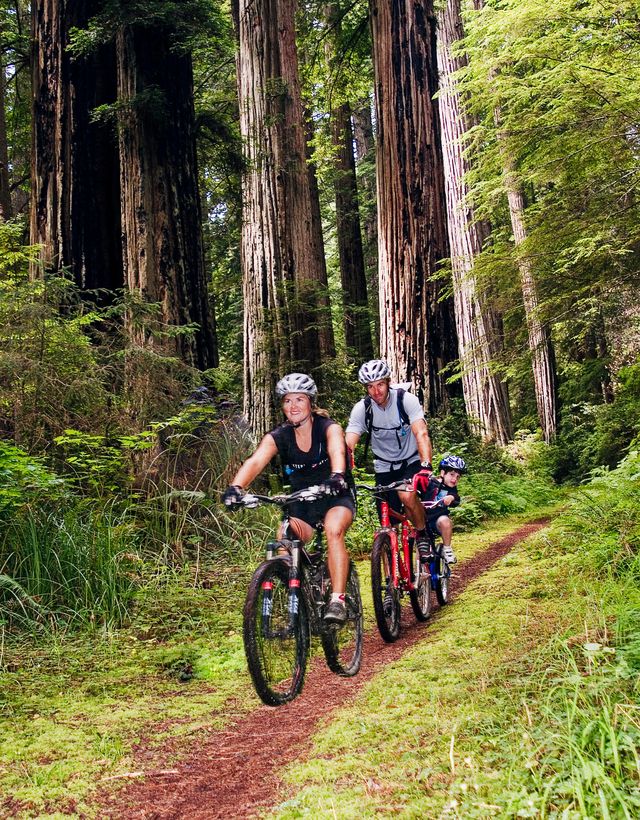
BEST FAMILY TRIP
Western spirit: redwood national park family trip.
Anchored around the world-famous redwood groves in northern California, this excursion offers opportunities for adventure and family bonding that are appropriately larger than life. Much of the riding is on gravel, doubletrack, or car-free roads. Highlights include picnic lunches on seaside bluffs, tidal exploration on remote beaches, swimming in the Smith River, and hikes through the profoundly Instagram-worthy forest. Kids can peel off each day for a cool side activity, giving parents an option to extend their riding. Bring your own bikes or rent from Western Spirit. 5 days / 23 to 75 miles / $1,295 / Recreational
YOU MIGHT ALSO LIKE Backroads: Sweden to Denmark Family Bike Tour Visit castles, fjords, and horse farms; watch the sun set at midnight; and end in one of the greatest cycling cities on earth. 6 days / 33 to 136 miles / $5,499 / Recreational-plus
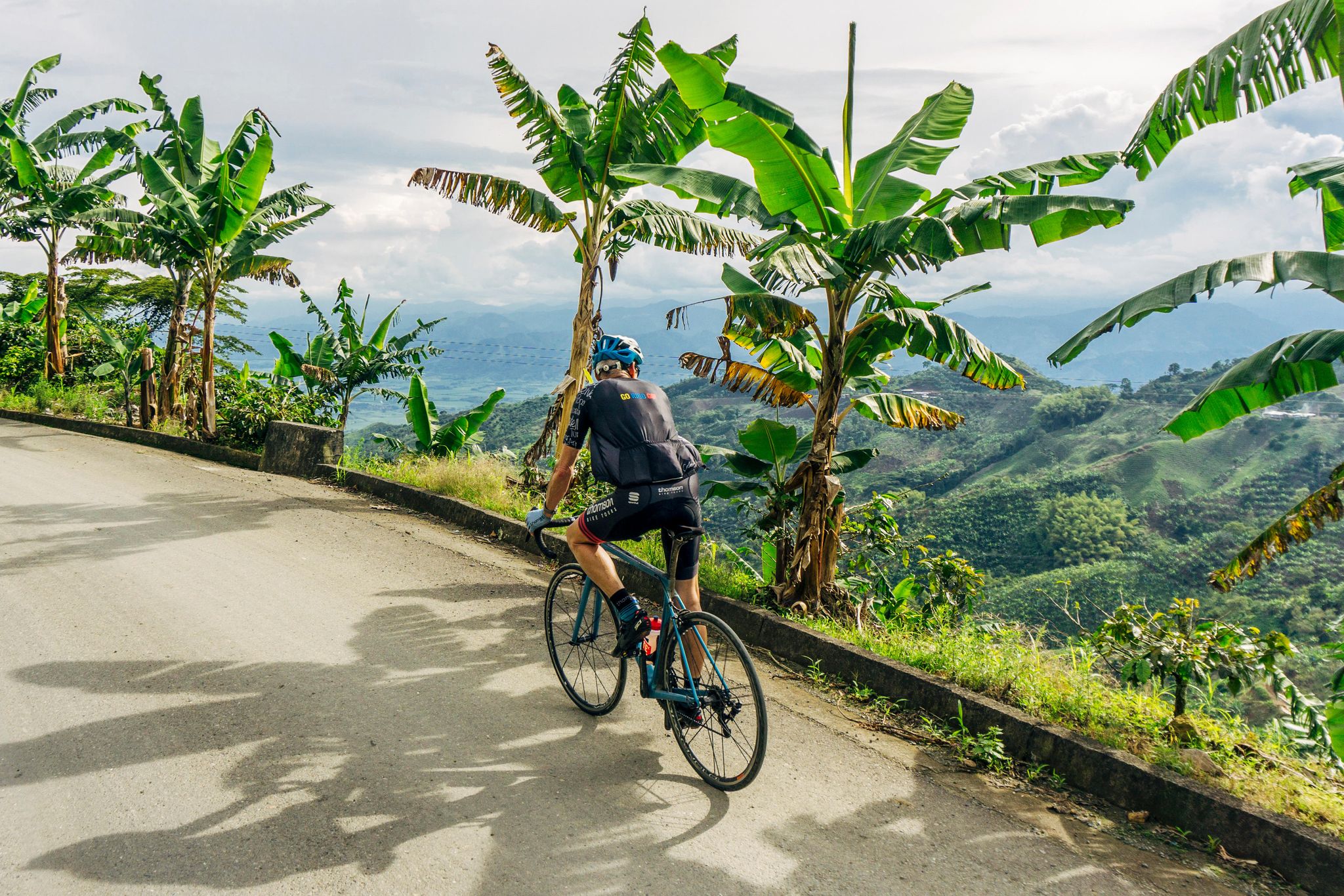
BEST LATIN AMERICA
Thomson Bike Tours: Trans-Colombia Challenge
Ride the home peaks where many of the world’s top Grand Tour riders—mountain goats like Egan Bernal and Nairo Quintana —honed their talents. You’ll crank out more than 70,000 feet of Andes vertical in eight days of riding. And you’ll walk away with bragging rights after conquering what might be the world’s longest paved climb: the famed Alto de Letras , which rises 10,500 feet over 50 miles. In fact, you’ll do it twice—once from each side. It’s not all hardcore climbing: You’ll pedal through coffee plantations and Andean jungle, and get a taste of cycling-crazy Medellín. If you don’t feel like flying with your bike, rent a Canyon Ultimate CF SL with disc brakes and Di2. 8 days / 567 miles / $3,995 / Advanced

YOU MIGHT ALSO LIKE Trek Travel: Colombia Bike Tour Rides range from 16 to 89 miles with a focus on cultural immersion, including visits to coffee roasters and an avocado plantation (and you still get to climb Alto de Letras). 6 days / 305 miles / $3,399 / Intermediate
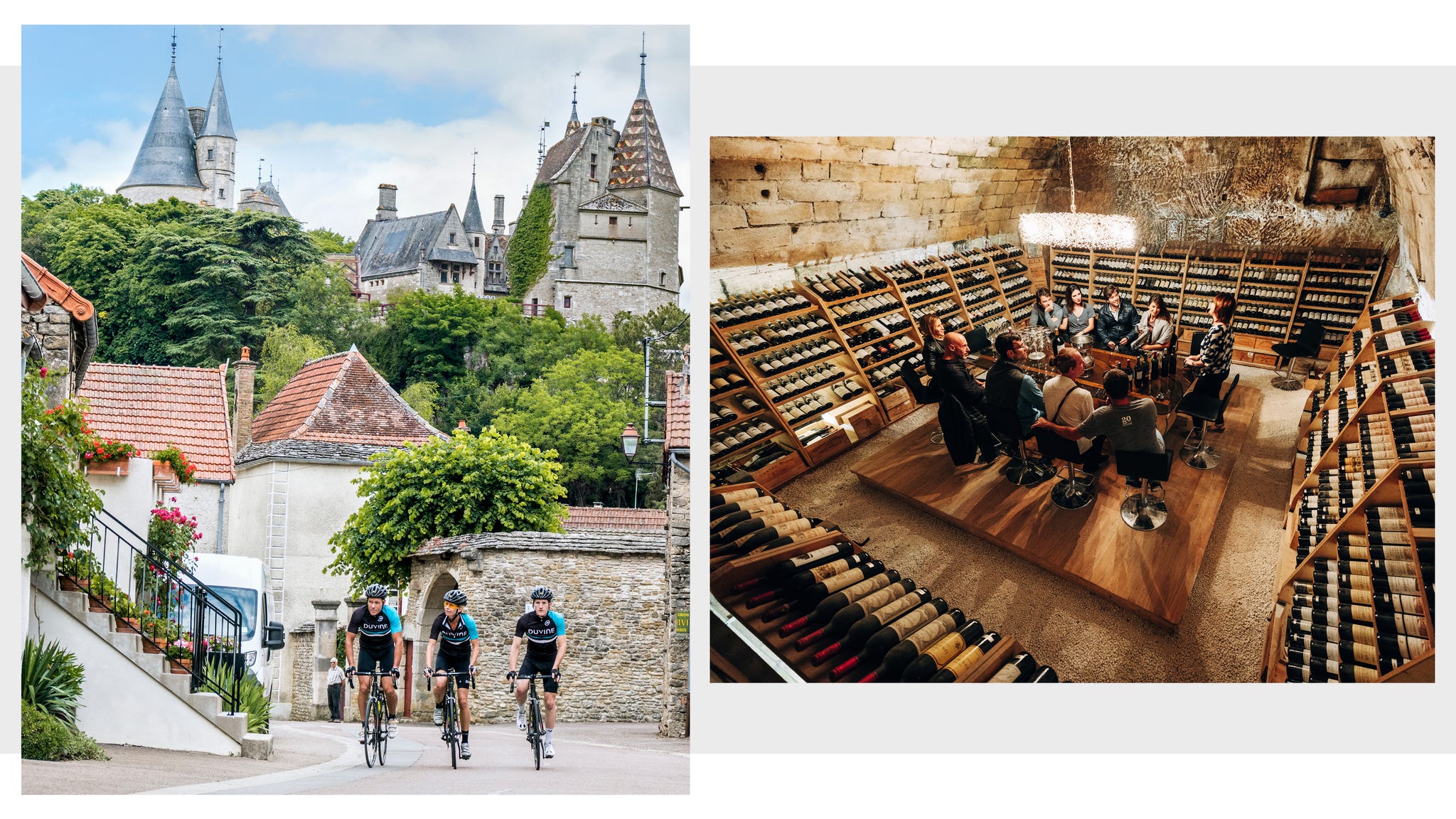
BEST FOOD AND WINE
Duvine: best of bordeaux + burgundy.
This luxury trip hits two of the world’s most legendary wine regions. In Bordeaux, spin through vineyards, stop for lunch at a UNESCO World Heritage site, and enjoy VIP tastings at famed producers like Château Mouton Rothschild and Château Lynch-Bages, where you can blend your own wine. Then it’s on to Burgundy, where you’ll dine in the private wine cellar of a grand cru producer, and get private tastings at boutique pinot noir and chardonnay producers. Along the way enjoy five-star accommodations and work up an appetite as you pedal through bucolic villages and 800-year-old castle ruins. The price includes a rental Cannondale, like a Synapse Carbon Pro Disc or Neo e-bike. 8 days / 104 to 148 miles / from $9,995 / Recreational-plus
YOU MIGHT ALSO LIKE Butterfield & Robinson: Napa & Sonoma Luxe Biking Private Private tastings, gourmet meals, and luxury hotels in America’s most famous wine regions. 5 days / 139 miles / $8,695 / Intermediate

BEST HIDDEN EUROPE
Tourissimo + ride & seek bicycle adventures : friuli venezia giulia and slovenia.
This tour-outfitter collaboration takes you to two exotic and distinctive cultures. Meander north from the Adriatic and explore Friuli—known for producing many of Italy’s best white wines—where locals speak their own language. Cross into Slovenia, a darling of travel hot lists for good reason: In the foothills of the Alps, you’ll enjoy rustic meals, quiet and undulating roads, views of verdant valleys and snowcapped mountains, and a culture that’s exotic without being impenetrable. In six days of riding, you’ll cover 195 miles—leaving plenty of time for immersive sightseeing, long lunches, and multisport diversions like river rafting, hiking, and paragliding. BYO bike or choose from a fleet of Bianchi road, hybrid, or e-bikes. 8 days / 195 miles / $4,195 / Recreational-plus
YOU MIGHT ALSO LIKE Eat Sleep Cycle Tour of Ireland’s West Coast Expect rural roads, seaside villages, emerald hills, and more than a few quality pints. 7 days / 300 miles / $2,775 / Intermediate/advanced

BEST MOUNTAIN BIKING
Sacred rides: wild & sacred seattle.
This week of mountain biking and dirt culture features iconic riding in the Cascades wedged between two local mountain bike festivals (close your eyes and conjure up food trucks, a beer garden, and spirited group rides). For the first half of the trip, you’ll stay in a boutique hotel in downtown Seattle , hit farm-to-table restaurants, and ride singletrack in lush woodland. The second act unfolds in the Teanaway Valley on the east side of the Cascades, where the landscape is drier and more exposed, the downhills rip, and the singletrack will test your technical skills. Decamp at a large mountain cabin (with a pool and hot tub) where the culinary vibe is campfire s’mores and BBQ. 2019 Giant Trances are included. 7 days / 154 miles / $2,695 / Intermediate/advanced
YOU MIGHT ALSO LIKE H+I Adventures: Cairngorms Adventure Scotland Highlands whisky and singletrack in the only Arctic ecosystem in the United Kingdom—keep an eye out for wild reindeer. 8 days / 100 to 115 miles / $1,958 / Intermediate

BEST EUROPEAN BASECAMP
The service course: the grand tour.
There’s something to be said for not having to repack your bag every morning. That’s especially true if your home base is the cycling paradise of Girona, Spain . Owned by retired pro Christian Meier and his wife, Amber, The Service Course offers carefully curated guided rides that will help you understand why so many pros live in this sunny Catalonian gem—empty farm lanes, perfectly twisting climbs, and coastal roads tracing the edge of the turquoise expanse of the Costa Brava. Start each day with an exquisite breakfast at La Fabrica—an eatery owned by the Meiers, and linger over afternoon coffee and pastry at their Espresso Mafia café. You can bring your own bike, but once you examine their rental stable, you might opt to spend your week on a dream bike from OPEN , Argonaut , Speedvagen , or Bastion. The tour includes dinners at some of the city’s best restaurants every night, four-star accommodations, and two massages. 7 days / 258 miles / $3,600 / Advanced
YOU MIGHT ALSO LIKE Eat Sleep Cycle: Classic Climbs of Girona You’re on your own for a few dinners but are otherwise fully supported in this by-cyclists-for-cyclists sampler of the best-known climbs near Girona. 6 days / 283 to 373 miles / $1,532 / Intermediate/advanced
Editors’ Choice Top 10 Favorite Places to Ride in the U.S.

Bentonville, Arkansas
This Ozarks hotspot will surprise you with 40-plus miles of feature-packed trails, an extensive network of family-friendly greenways, and some of the country’s best undiscovered road riding.
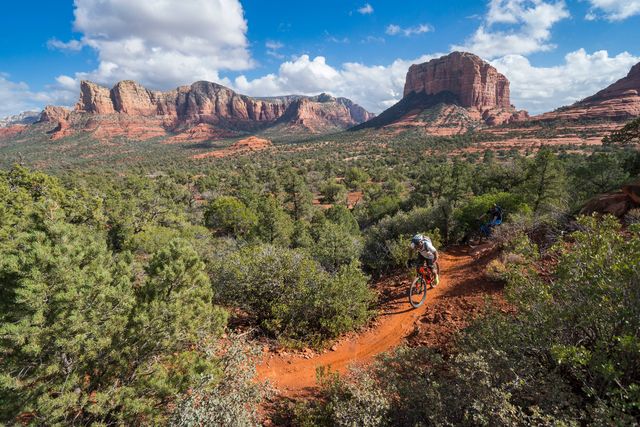
Sedona, Arizona
Pedal more than 250 miles of swoopy singletrack or endless ribbons of smooth pavement through a rugged red-rock landscape.
Find an Airbnb
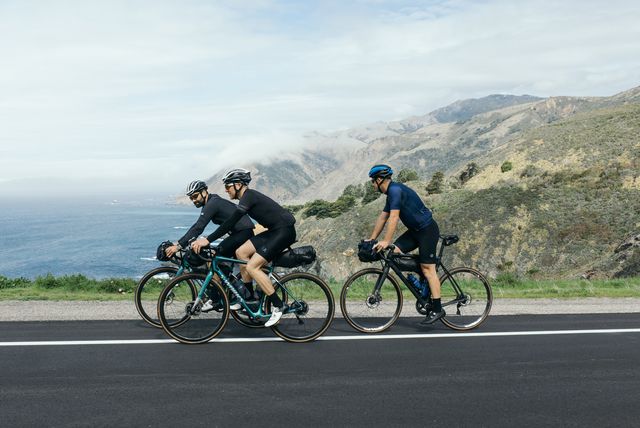
Big Sur to Monterey, California
This stretch of the Pacific Coast Highway offers the most magical 28 miles of coastline, with near-constant views of the shimmering Pacific.
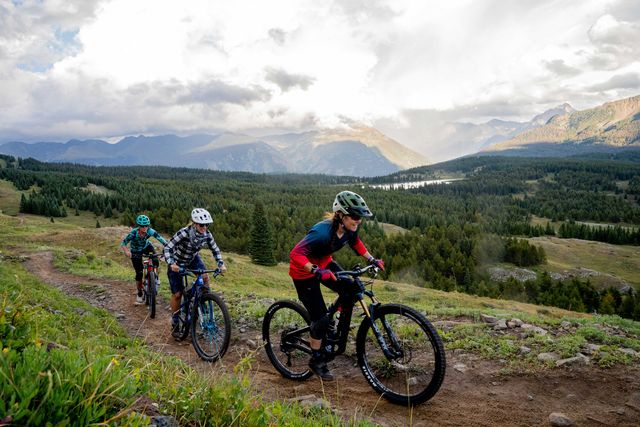
Western Colorado
Climb Pikes Peak or Mount Evans, get sendy above the treeline in Crested Butte, or hit the gravel roads around Steamboat Springs.
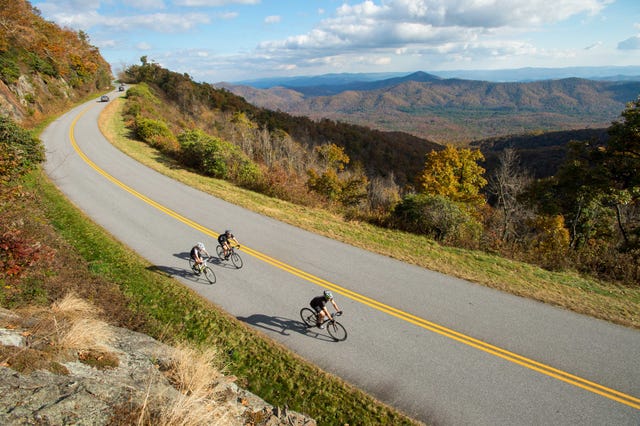
Brevard/Asheville, North Carolina
World-class road and mountain biking tucked away in the peaks and valleys of the Blue Ridge Mountains.
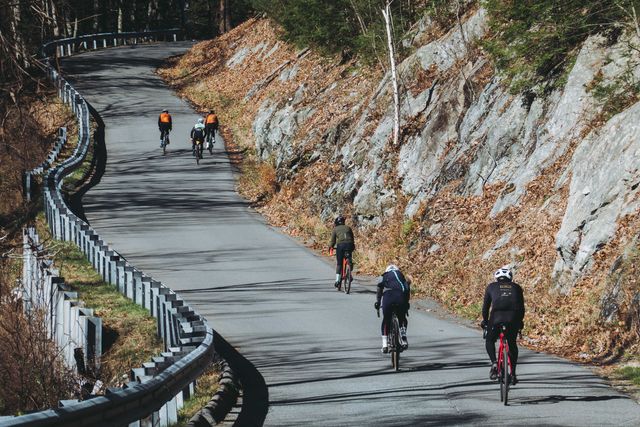
Hudson Valley, New York
Easily accessible from New York City, the Hudson Valley features rolling terrain, spectacular views, and fuel stops in charming river towns.
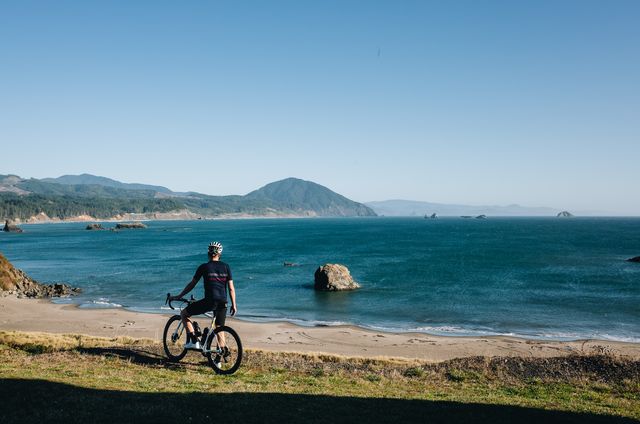
Oregon Coast
Prepare to be gobsmacked by sweeping ocean views as you tackle 16,000-plus feet of elevation change along this 340-mile stretch of Highway 101.
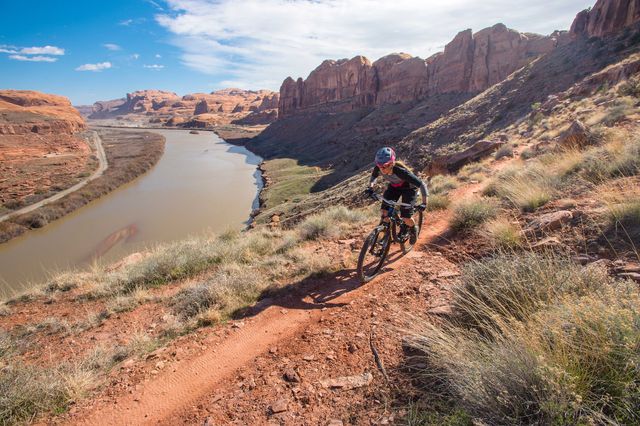
The world-renowned Slickrock Trail offers 11 miles of grippy sandstone with natural adrenaline-pumping features, but Moab has hundreds of miles of trails for riders of all levels.
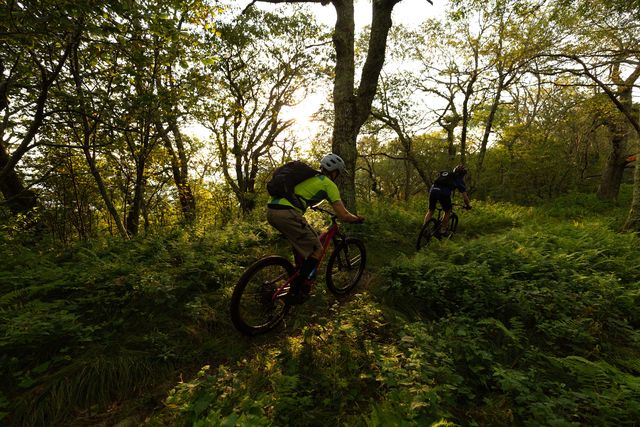
Stokesville, Virginia
Between the George Washington and Jefferson National Forests and the nearby Shenandoah Valley and Blue Ridge Parkway, you’ll find some of the prettiest riding on the East Coast.
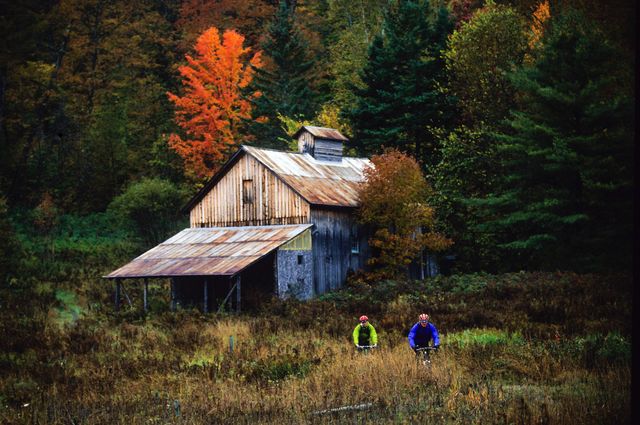
Northeast Kingdom, Vermont
Home to Kingdom Trails, one of the country’s most popular purpose-built networks, with more than 100 miles of flowy singletrack.

BEST FOLIAGE
Backroads: vermont to quebec bike tour.
This part of the world gets magical when the stands of oak, birch, and maple turn color in September and October. This six-day cruise, which winds from Burlington, Vermont, up to Montreal, hits an endless procession of classic New England and French-Canadian highlights: technicolor foliage, covered bridges, cobbled city streets, glacier-carved valleys, small-town antique shops, and craft breweries. Along the way, you’ll have plenty of opportunities to sample such local delicacies as pure maple syrup, homemade sharp cheddar, hot apple cider, and duck foie gras. The mileage isn’t huge, but the terrain is never flat—consider yourself warned before you churn up Smuggler’s Notch. 6 days / 144 to 241 miles / starts at $3,499 / Intermediate
YOU MIGHT ALSO LIKE Pure Adventures: Quebec Bike Tour This self-guided adventure hits a foliage gold mine in late September to early October. 7 days / 175 miles / $1,085 / Intermediate
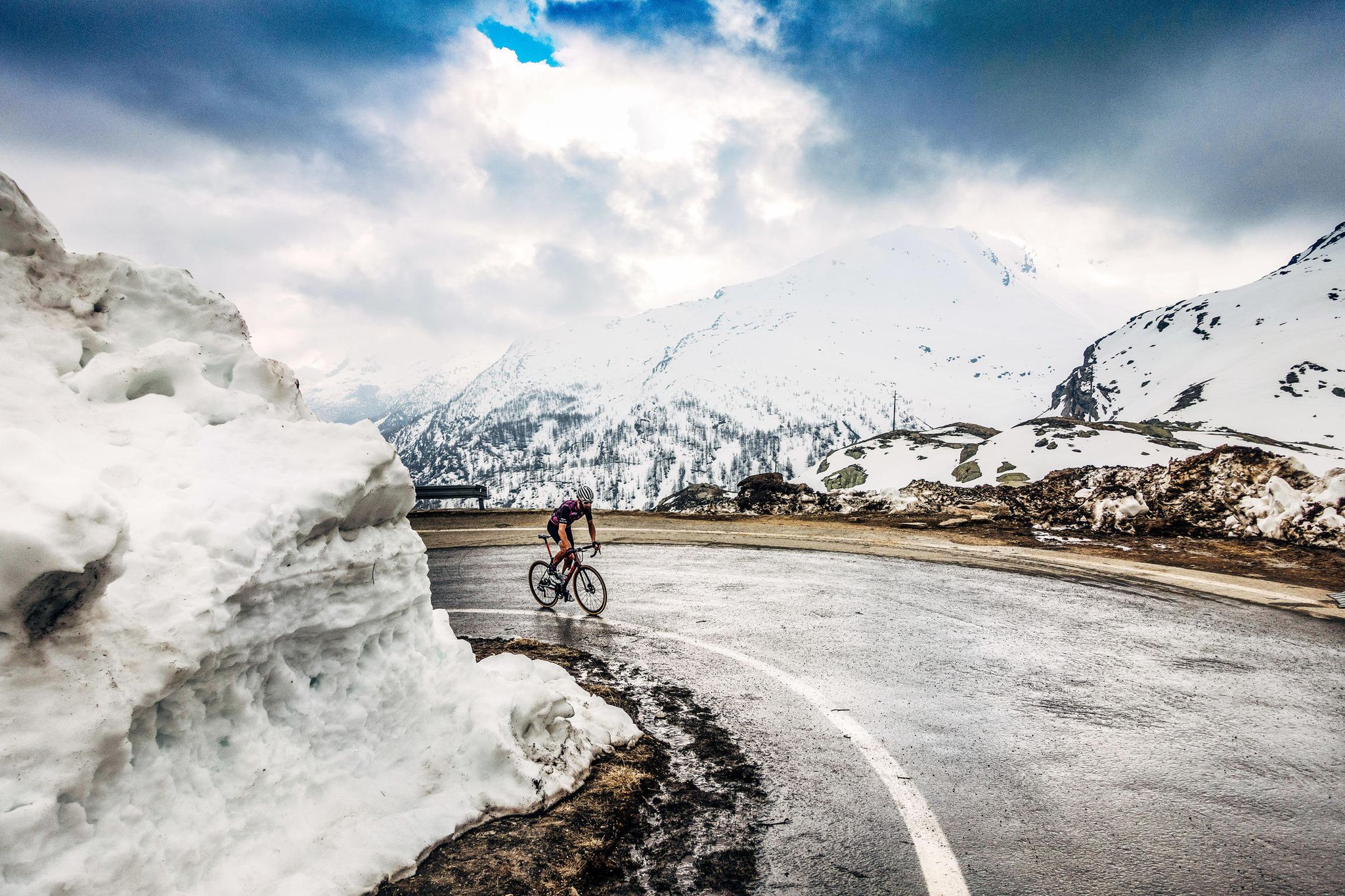
Grand Tours Project: Ride Every Kilometer of the Giro d’Italia
Here’s your chance to ride each stage of the most atmospheric Grand Tour on the same days the pros do. There will be predawn starts and episodes of existential suffering. But there will also be unforgettable moments—grinding up the legendary climbs of the Dolomites with the tifosi cheering you on, crossing all 21 Giro finish lines, an endless string of sublime coffee breaks, and VIP seating. Count on three weeks of full support and hearty Italian meals. For those who lack the time, fitness, or hubris to tackle the entire thing, you can sign up to ride three to nine stages in the same manner. BYO bike or rent a Bianchi Infinito CV Disc with Ultegra Di2. Roughly 2,200 miles total / Up to 24 days / $13,000 / Advanced

YOU MIGHT ALSO LIKE The Cyclist’s Menu: Alps Road This journey through the Alps from Italy into France dishes out 35,000 feet of climbing but a lot of memorable meals, too. 8 days / 373 miles / $3,850 / Advanced
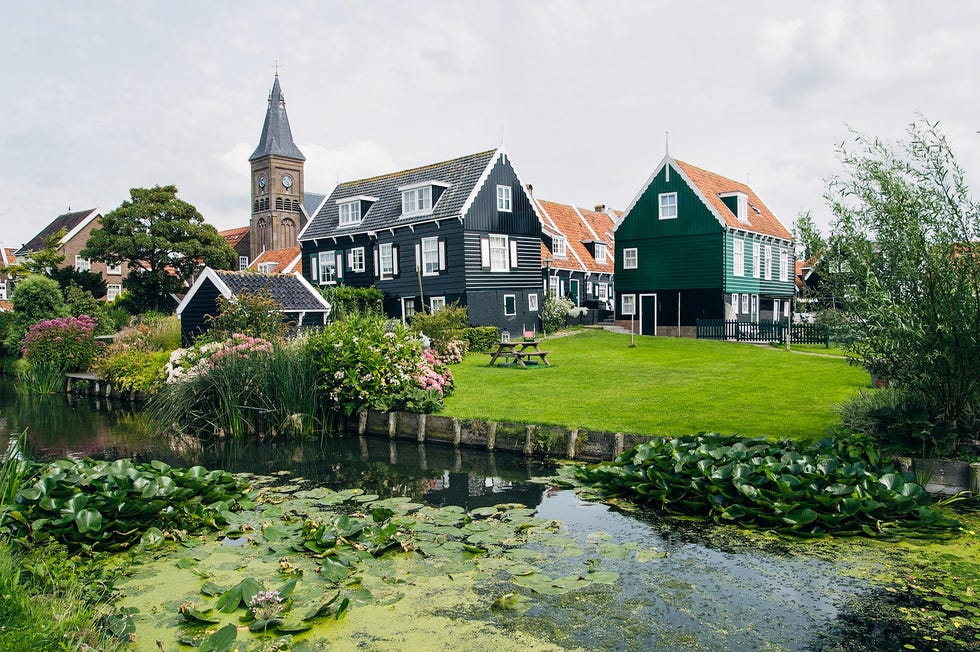
Van Gogh Tours: Edam to Amsterdam
This leisurely, self-guided tour through the Netherlands will have you meandering on flat terrain along canals, through charming fishing villages, and into the friendly chaos of Amsterdam. The trip is based in the famous “cheese city” of Edam, where riders who feel comfortable navigating from detailed maps and daily directions are set up with charming hotel accommodations, a daily breakfast buffet, and a sweet Dutch city bike with gears and panniers. There’s plenty of time to linger over coffee, sample witbier from the vibrant Dutch craft beer scene, and eat enough Edam and Gouda to reach a rapturously semi-soft place. 3 days / ~80 miles / $635 / Recreational
YOU MIGHT ALSO LIKE Western Spirit: Bryce to Zion A fully supported trip that visits two iconic national parks and traverses single- and doubletrack in the scenic Southwest. 5 days / 111 miles / $1,495 / Intermediate
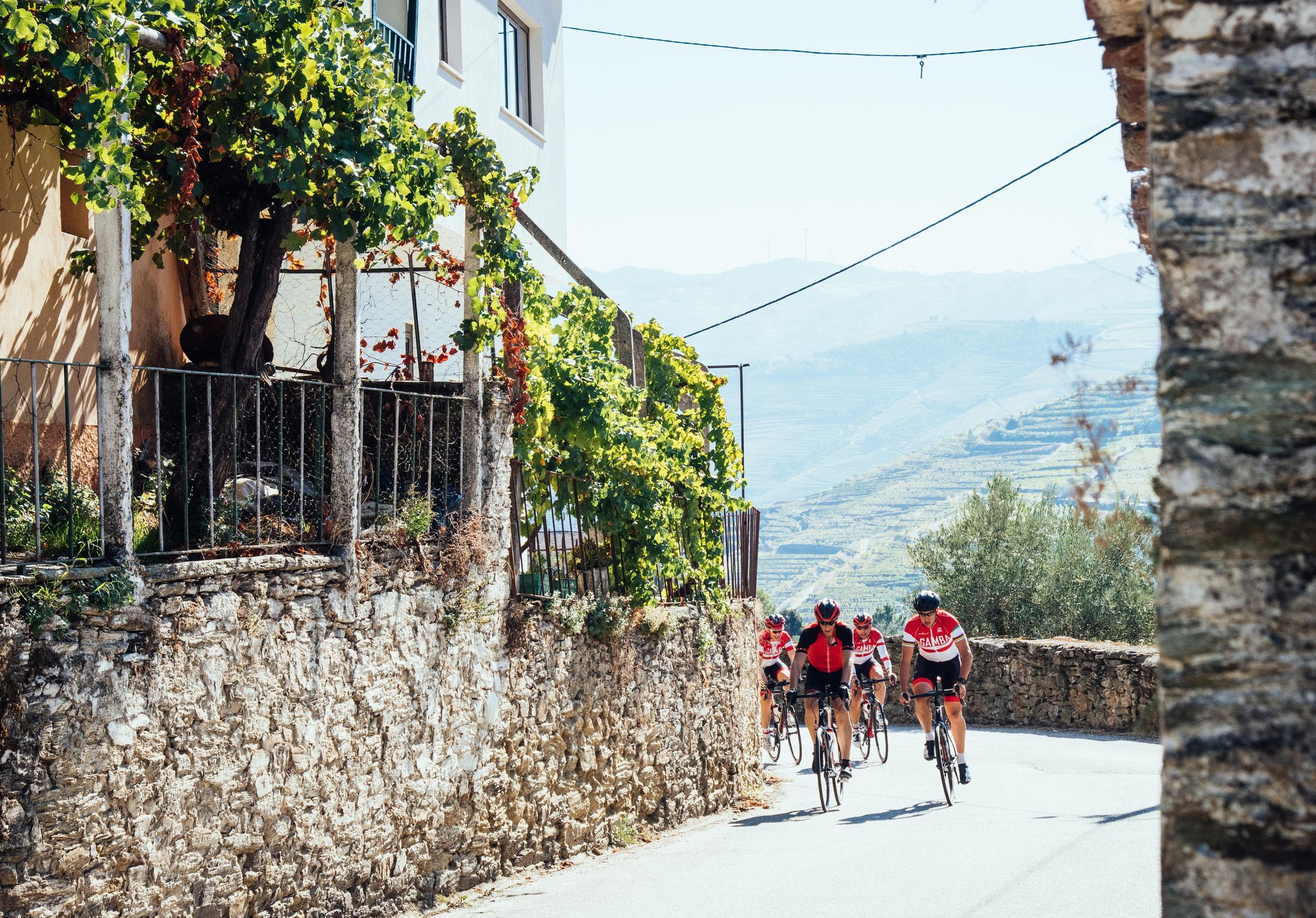
BEST PRO-LEVEL TREATMENT
In gamba: portugal—lisbon & the north.
Though In Gamba is known for unparalleled cycling experiences in Italy, there’s no getting around the company’s Portuguese roots—more than 80 percent of the staff come from Portugal, including the founder, João Correia (former pro racer and Bicycling publisher). And this trip—which heads north on quiet roads from Lisbon, through the wine lovers’ Douro Valley, and ends in Port—taps that native brain trust to show riders a side of the country that is at once authentic and luxurious. Everyone gets pro-style perks like a Pinarello Dogma F12 with eTap, daily bike wash , kit laundry, and massage from a real soigneur. And with more than 35,000 feet of climbing on the itinerary, that massage might be a lifesaver. 7 days / 380 miles / $7,950 / Advanced
YOU MIGHT ALSO LIKE In Gamba: Chianti Classico Nobody does pro-style pampering like In Gamba does, and this is the company’s most classic offering—a unique blend of exquisite riding, food, wine, and atmosphere. 7 days / 262 miles / $4,950+ / Intermediate/advanced
Editors’ Choice Top 10 Favorite Places to Ride Outside the U.S.
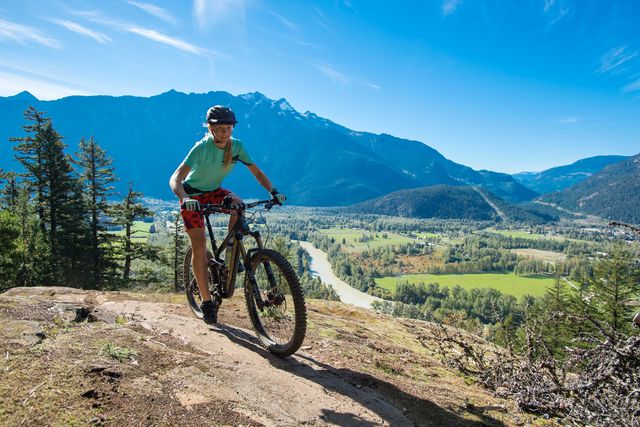
Whistler, British Columbia
Epic cross-country trail riding and a world-renowned bike park make this a bucket-list destination for mountain bikers.
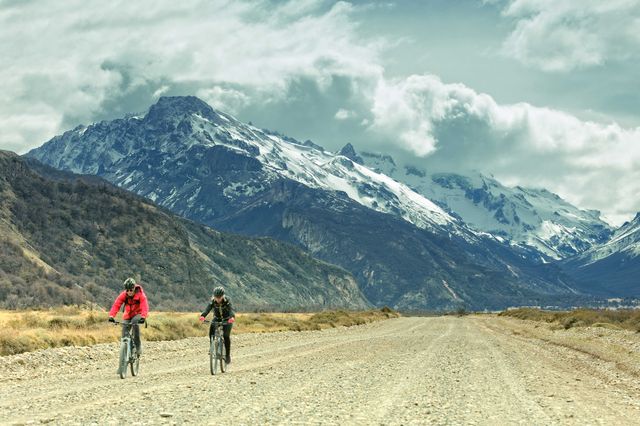
Patagonia, Chile
Miles of challenging singletrack around glacial peaks in Torres del Paine National Park attract trail riders from all over the world.
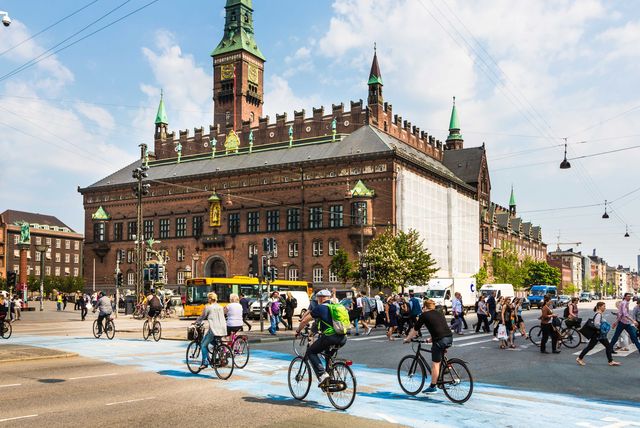
Copenhagen, Denmark
Every rider should visit this cycling-mad city, where eight cycle superhighways connect 19 municipalities in the Capital Region.

Pyrenees, France
Less traveled (and less expensive) than the Alps, with as much Tour de France history.

Tuscany, Italy
Rolling hills, pastoral vistas, a laid-back ethos, and wine—lots of wine.
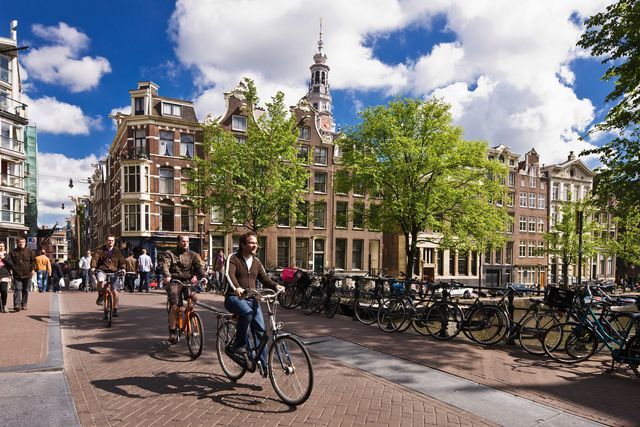
Amsterdam, The Netherlands
Biking is the preferred way of life here, thanks to an extensive network of cycling tracks.

New Zealand
Karangahake Gorge or Puketapu Loop on the North Island; Roxburgh Gorge or the Great Taste Trail on the South.

Highlights include majestic waterfalls, jagged glacial peaks, and emerald-green valleys—and of course, dramatic fjord vistas nearly everywhere you look.
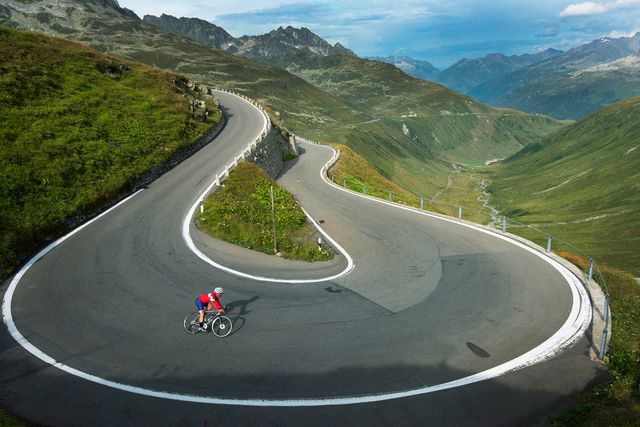
Andermatt, Switzerland
The epicenter of Transalp MTB routes, with access to eight major Alpine passes, including the Furka, Gotthard, and Grimsel.
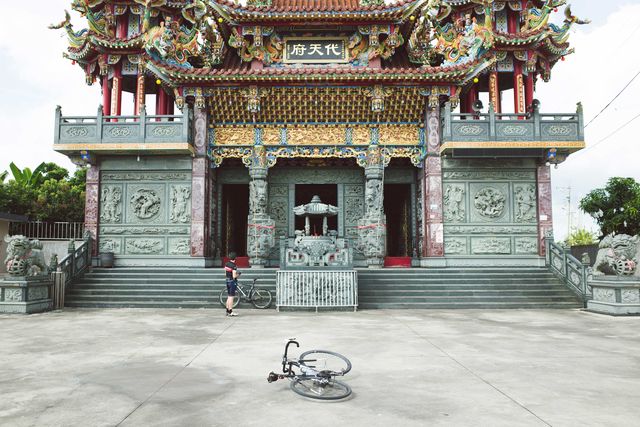
Navigate a dramatic 602 miles around the island on Cycle Route No. 1 past deep green rice paddies, tea plantations, and the breathtaking Taroko Gorge.

BEST GRAVEL
The cyclist’s menu: arizona gravel camp.
What do you get when a retired pro mountain biker and a professional chef pair up, hire some gregarious endurance cyclists (like Lael Wilcox ) as guides, and decamp to a tiny town nestled at 4,000 feet near the Mexican border? You get something resembling unpaved paradise—especially since the expansive public lands surrounding aptly named Patagonia, Arizona, are laced with empty gravel roads. Trade stories over farm-to-table meals (think traditional borderlands fare such as mole, Pozole, and fresh street tacos) at the unpretentiously rustic hotel where you’ll stay in downtown Patagonia. And with a pro photographer present, you’ll go home with better-than-Instagram mementos. 5 days / 175 to 250 miles / $2,420 / Recreational-plus

YOU MIGHT ALSO LIKE DZ Nuthouse Ride with retired racer Dave Zabriskie on secret Malibu gravel. 4 days / Mileage varies / $2,500 / Advanced

BEST RACE-ADJACENT
Trek travel: spring classics ultimate experience.
This 11-day VIP tour in Belgium and northern France is one of the most storied pilgrimages that bike-racing fans can make. After all, the eight days that bridge the Tour of Flanders and Paris-Roubaix comprise cycling’s Holy Week. Tackle the short but jarring segments on these bucket-list monuments, like the Paterberg and the Arenberg Forest, then watch Peter Sagan, Philippe Gilbert, and other legends crush the cobbles from exclusive seating on the Kwaremont and the Roubaix velodrome. In between, take in more iconic races and faith-testing rumbles through the stark beauty of Flanders. There will be hard days that you’ll remember for years, but there also will be Trappist beer, crispy pommes frites , and Belgian chocolate. 8 days / 354 to 451 miles / $7,099 / Advanced
YOU MIGHT ALSO LIKE Thomson Bike Tours: Tour de France Alps & Paris KOM Challenge Ride the iconic Alpe d’Huez, Col de la Madeleine, and Col du Galibier, and enjoy VIP access and hospitality along the way. 8 days / 124 to 315 miles / $8,495 / Intermediate/advanced
Editors’ Choice photo credits: Trevor Raab (Bentonville); Scott Markewitz (Sedona, Asheville, Moab, Vermont, Whistler, New Zealand); Jake Szymanski (Big Sur, Oregon Coast, Taiwan); Natalie R. Starr (Western Colorado); Donalrey Nieva (Hudson Valley); Jess Daddio (Stokesville); espiegle/Getty Images (Patagonia); AsianDream/Getty Images (Copenhagen); Augustus Farmer (Pyrenees, Switzerland ); Chiara Redaschi (Tuscany); Atlantide Phototravel/Getty Images (Amsterdam); Lars Schneider (Norway)
PETER FLAX is based in Los Angeles and writes about sports, adventure, and culture; his book Live to Ride: Finding Joy and Meaning on a Bicycle is out in March 2024.

.css-1t6om3g:before{width:1.75rem;height:1.75rem;margin:0 0.625rem -0.125rem 0;content:'';display:inline-block;-webkit-background-size:1.25rem;background-size:1.25rem;background-color:#F8D811;color:#000;background-repeat:no-repeat;-webkit-background-position:center;background-position:center;}.loaded .css-1t6om3g:before{background-image:url(/_assets/design-tokens/bicycling/static/images/chevron-design-element.c42d609.svg);} Rides

A Gravel Race Like No Other
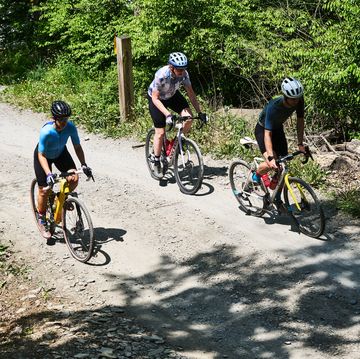
How to Plan a Century Ride Route

How to Tell if You’re Ready for a Century Ride

6 Reasons to Try Fat Biking This Winter
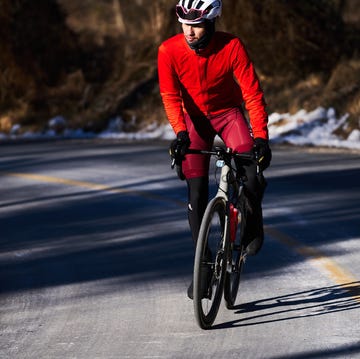
How to Conquer Rapha Festive 500 This Year
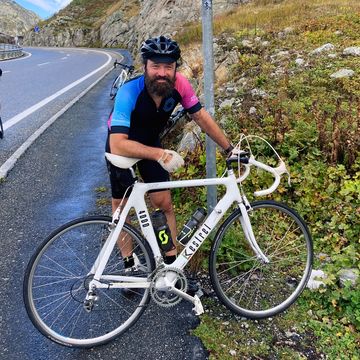
Chasing Tadej Pogačar Through the Swiss Alps

My One-Day Ride Between Santa Fe and Albuquerque
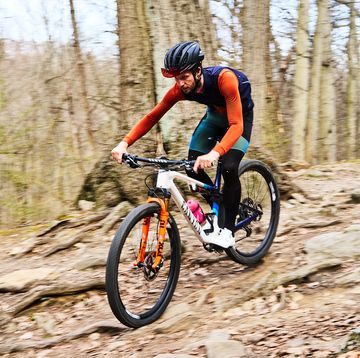
Your Guide to All the Types of Rides
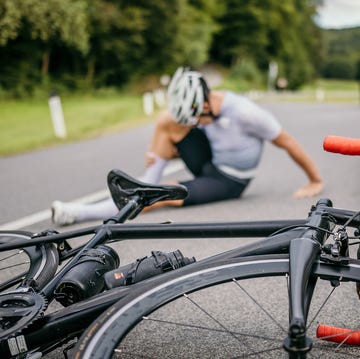
What to Do After a Bike Crash
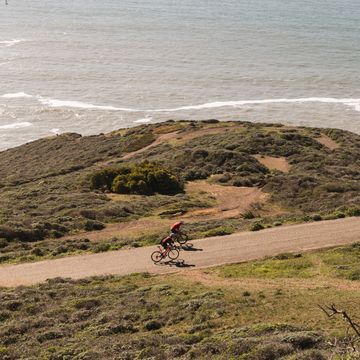
Century Ride Tips for Success

Martijn van Strien Shares How He Enjoys Every Ride
10 best places for a cycling vacation in 2022
Jan 19, 2022 • 6 min read
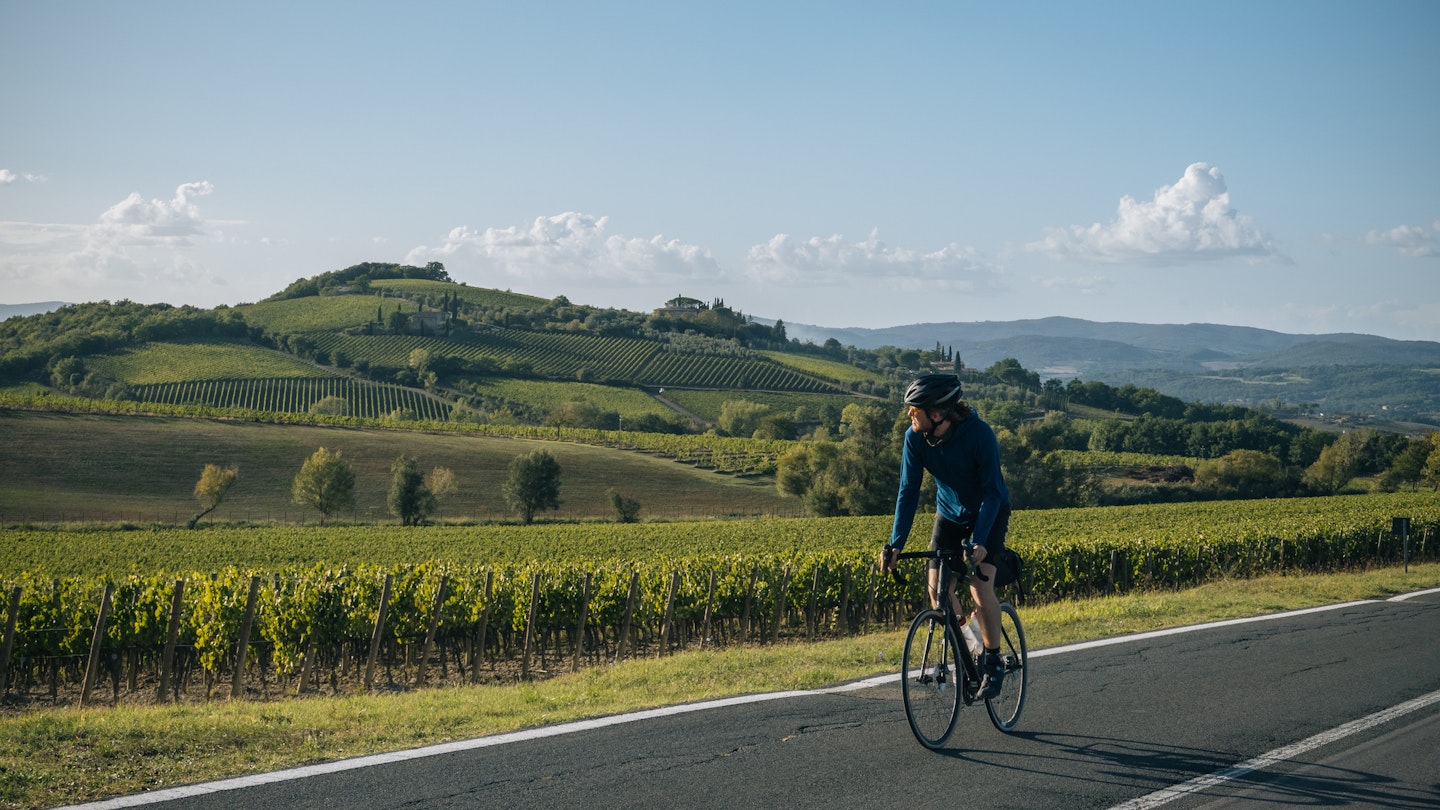
The rolling hills and cypress-lined roads of Tuscany around Siena are sublime for cycling © SimonSkafar/Getty Images
Some of the most beautiful places on earth are best explored on two wheels. You can go at your own pace and stray far from the tourist trail. After a good pedal, local dishes taste so much better. Here are some of the best places to go on a cycling vacation in 2022.
1. Siena, Italy
In the cycling world, Siena is famous for the Strade Bianche , an early-season race that twists and turns over the surrounding region’s hilly, white gravel roads, before arriving at the finish on the Piazza del Campo . Riding those same roads at an easier clip is about as fun as cycling gets. It’s like being on a cypress-lined rollercoaster through vineyards and olive groves. You will want a bike with wider tires, so you can enjoy the views and worry less about keeping the rubber on the dirt. After exploring the countryside, enjoy a hearty Tuscan meal and a few glasses of Brunello.
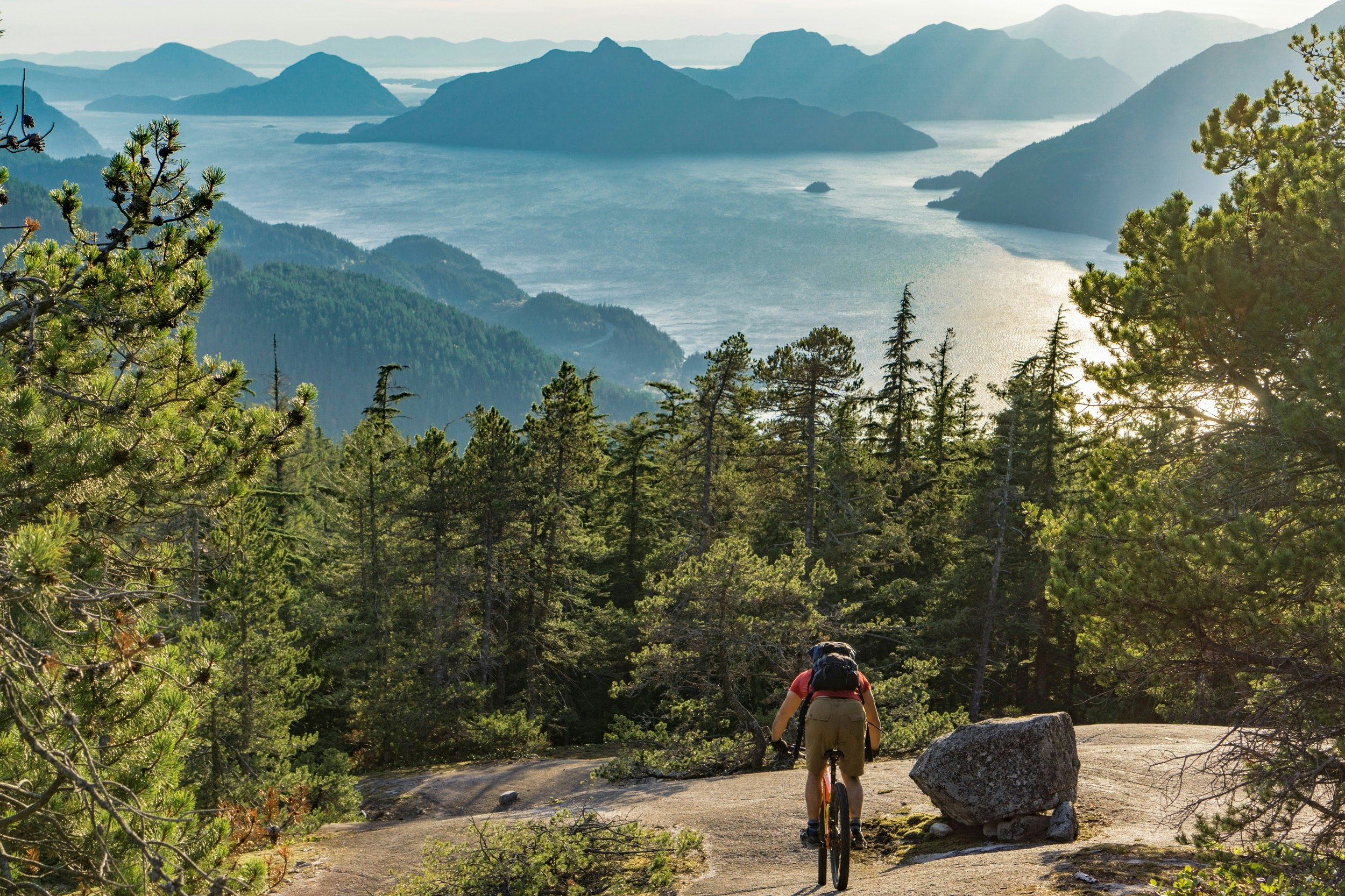
2. Vancouver
Vancouver ’s North Shore is a legendary place to ride mountain bikes. Situated a short drive from the city center, steep tracks twist down through old-growth red cedars, aided by a range of man-made bridges and teeter-totters (see-saws). The riding there will leave you giddy with laughter if your skills are up to it. Mt Fromme and Mt Seymour are home to the most renowned and difficult trails. For those looking for gentler rides, don’t worry; there are lots of cross-country trails about as well.
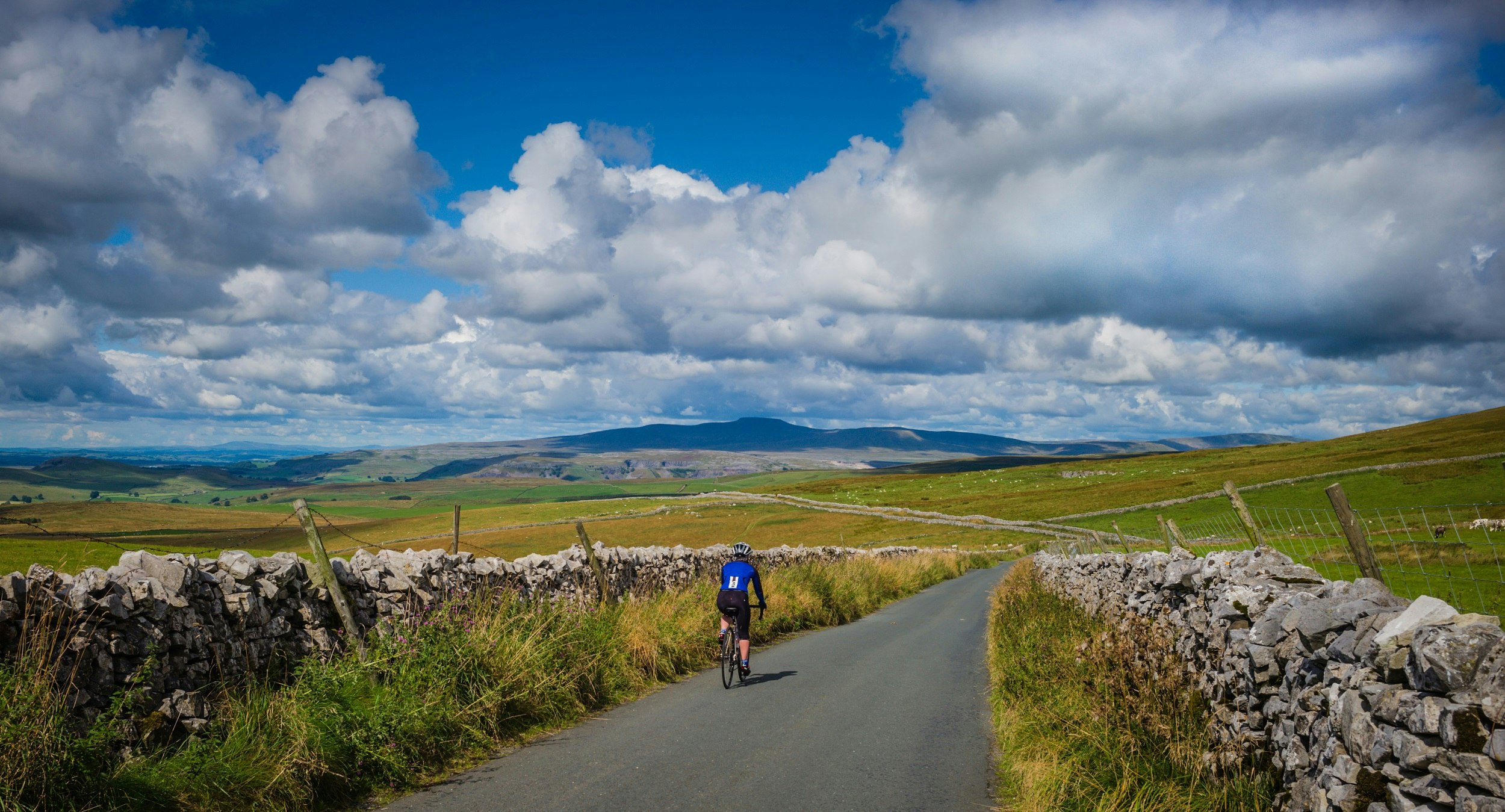
3. Yorkshire, England
The likes of Bradley Wiggins, Lizzie Deignan and Chris Froome have inspired hundreds of thousands of Brits to take up cycling over the past decade. The UK still isn’t well known as a cycling destination though. That should change soon. Quiet country lanes in places like Yorkshire are as enjoyable for riding as Europe’s more famous roads. Up in the Dales, the hills might not be as long as grand tour cols, but they are as steep as heck and come one after the other. After an hour or two, you will want to stop for tea and scones. The spa town of Harrogate, which hosted the 2019 world championships, is a great place to stay.
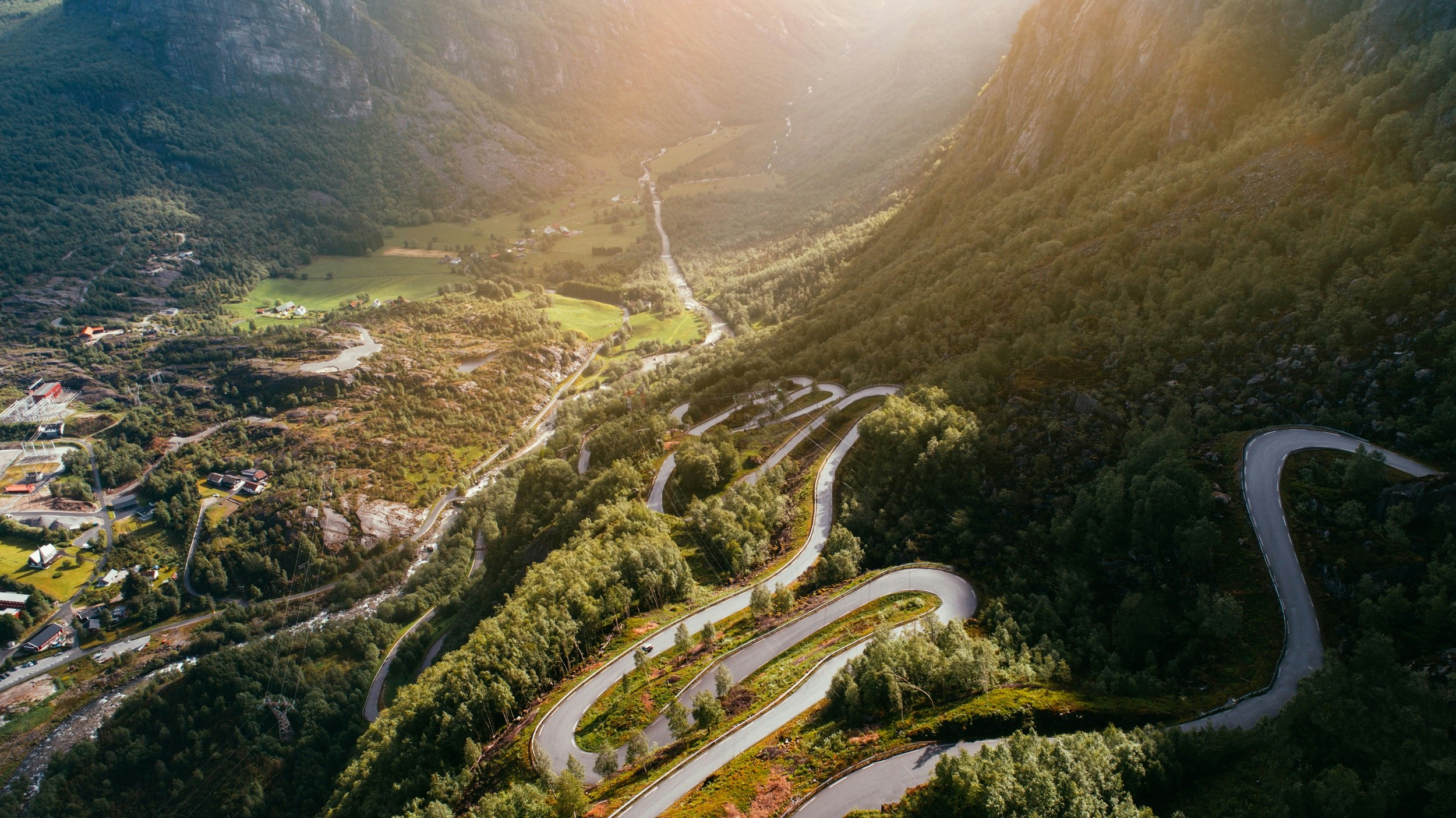
4. Stavanger, Norway
Riding amid Norway ’s rocky, windswept mountains, waterfalls, forests and cavernous fjords will leave you humbled by nature’s sheer scale and power. Perhaps that is why Norwegians are so friendly. Stavanger , a prosperous mid-sized city located on the southwest coast, is a great place to start a Norwegian cycling adventure. The surrounding countryside is magnificent. From its tidy harbor, lined with colorful wooden buildings, you can even take a ferry to the bottom of Lysebotn, a wonderful switchbacked climb that rises for 9km from the sea up onto a rugged plateau. From there, it is about a 120km loop around the fjord back to the city.
Moving mountains: Norway’s top 9 hikes
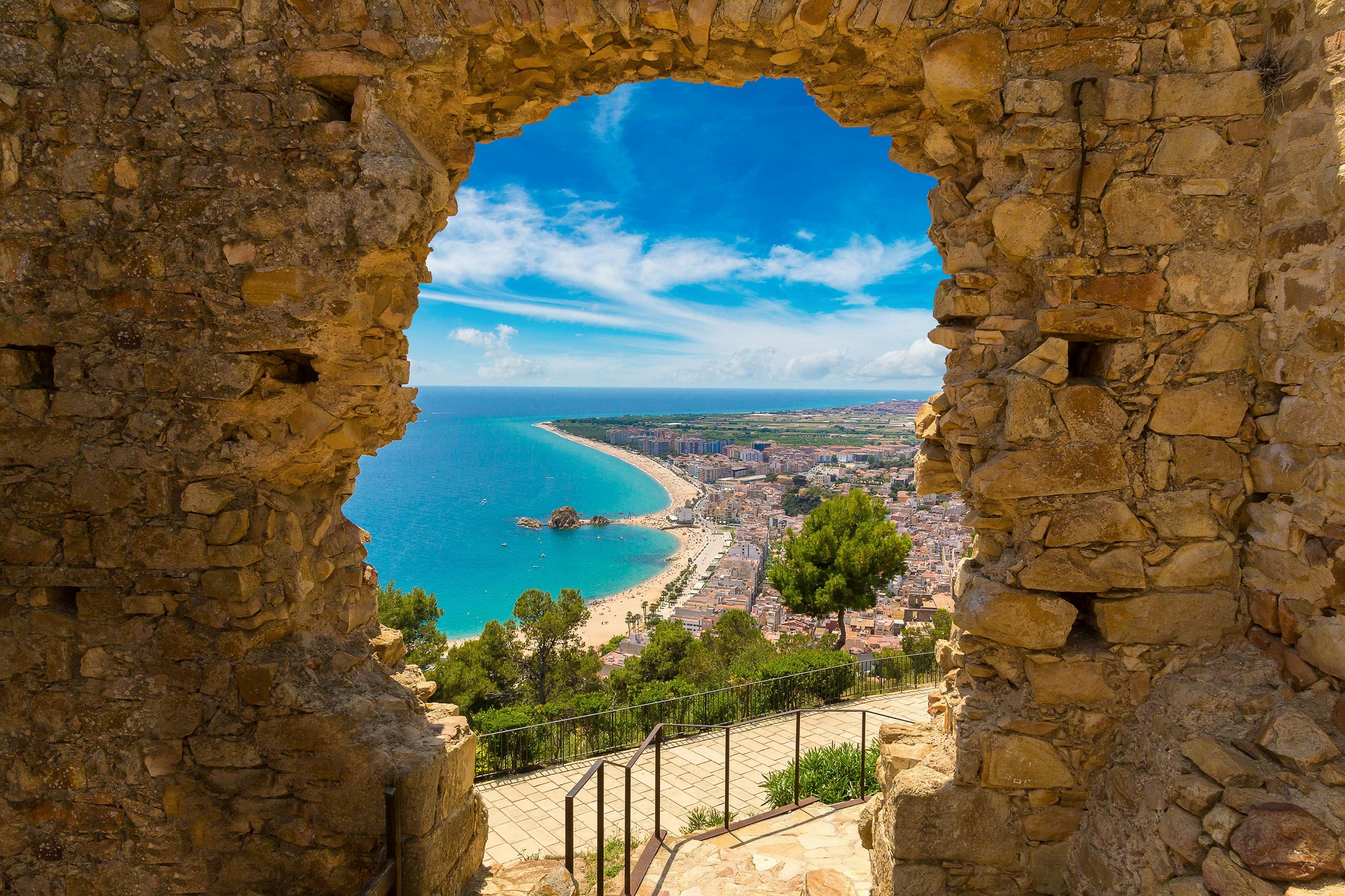
5. Girona, Spain
Good year-round weather, quiet roads, nearby mountains, not far from the Mediterranean coast – it’s no wonder so many professional cyclists call Girona home. The colorful Catalan city sometimes feels as if it's a cycling resort; there are so many top-notch bike shops, tour companies and cafes that cater specifically to cyclists in town, not to mention the grand tour riders who will race past you on climbs such as Els Angels and Rocacorba. There is a tonne of local heritage to discover as well though. After your rides, go for a walk around the old city walls, visit the cathedral or one of the museums or have a soak in the Roman baths, before heading out for a good meal and night on the town.
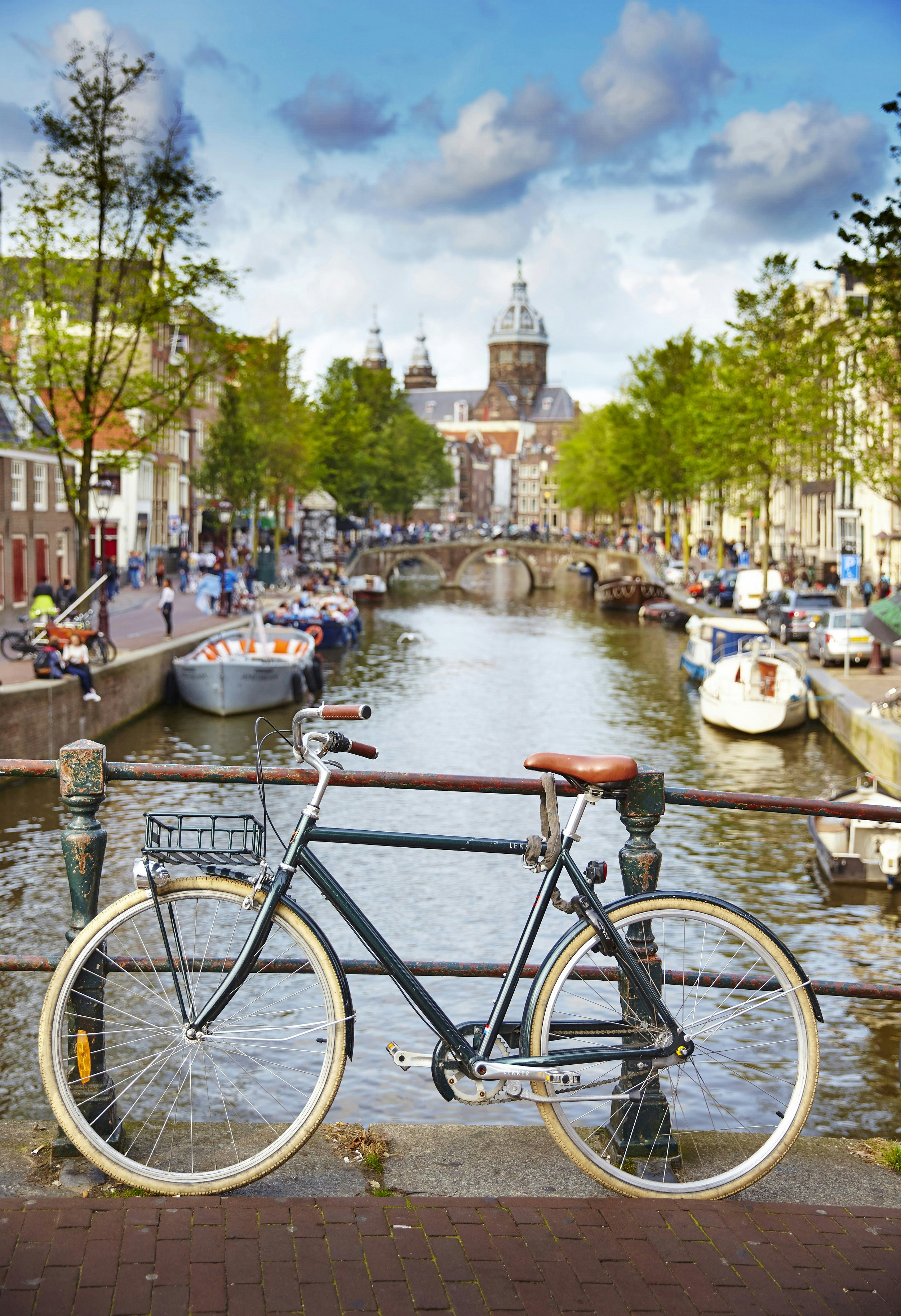
6. Amsterdam, The Netherlands
Visit Amsterdam , and you’ll be stunned by the number of bikes you see on the streets. Bankers in expensive suits, clattering over the Dam square on rusty rattletraps; students carrying crates of beer on their handlebars and girlfriends on their rear racks; grandmas doing their shopping on e-bikes; whole families traveling together on cargo bikes – every day, hundreds of thousands of Amsterdammers pedal wherever they want to go. Join them. A day touring the canals and Vondelpark , perhaps visiting a couple of the city’s excellent art museums and then cycling from restaurant to bar (or coffee shop) will give you a respectable number of kilometers. Stay sharp though. Navigating Amsterdam’s busy bike paths can be like riding in a peloton.
How to spend a perfect weekend in Amsterdam
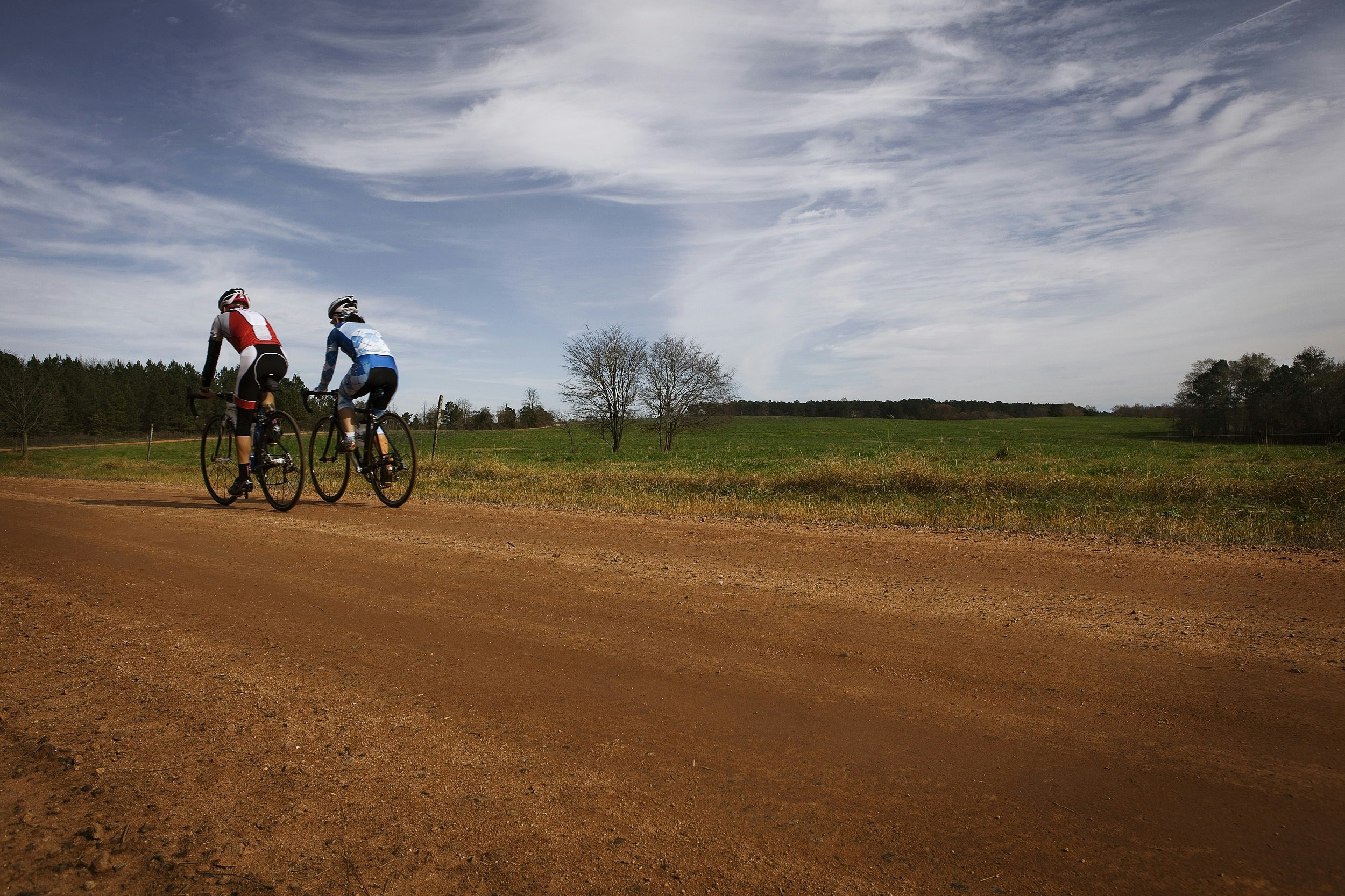
7. Athens, USA
A southern college town with one of the best music scenes in the United States , Athens, Georgia is nestled at the center of an awesome array of roads, which get even better when you stray onto dirt. The local cycling community is as friendly and welcoming as can be. Keen riders head there in December, January and February to enjoy the pleasant weather and build fitness for spring. Join them for a segment or two of the Winter Bike League , a series of Saturday group rides that take in the best routes and gas-station stops in the region. Or just head out and enjoy the beautiful countryside at your own pace.
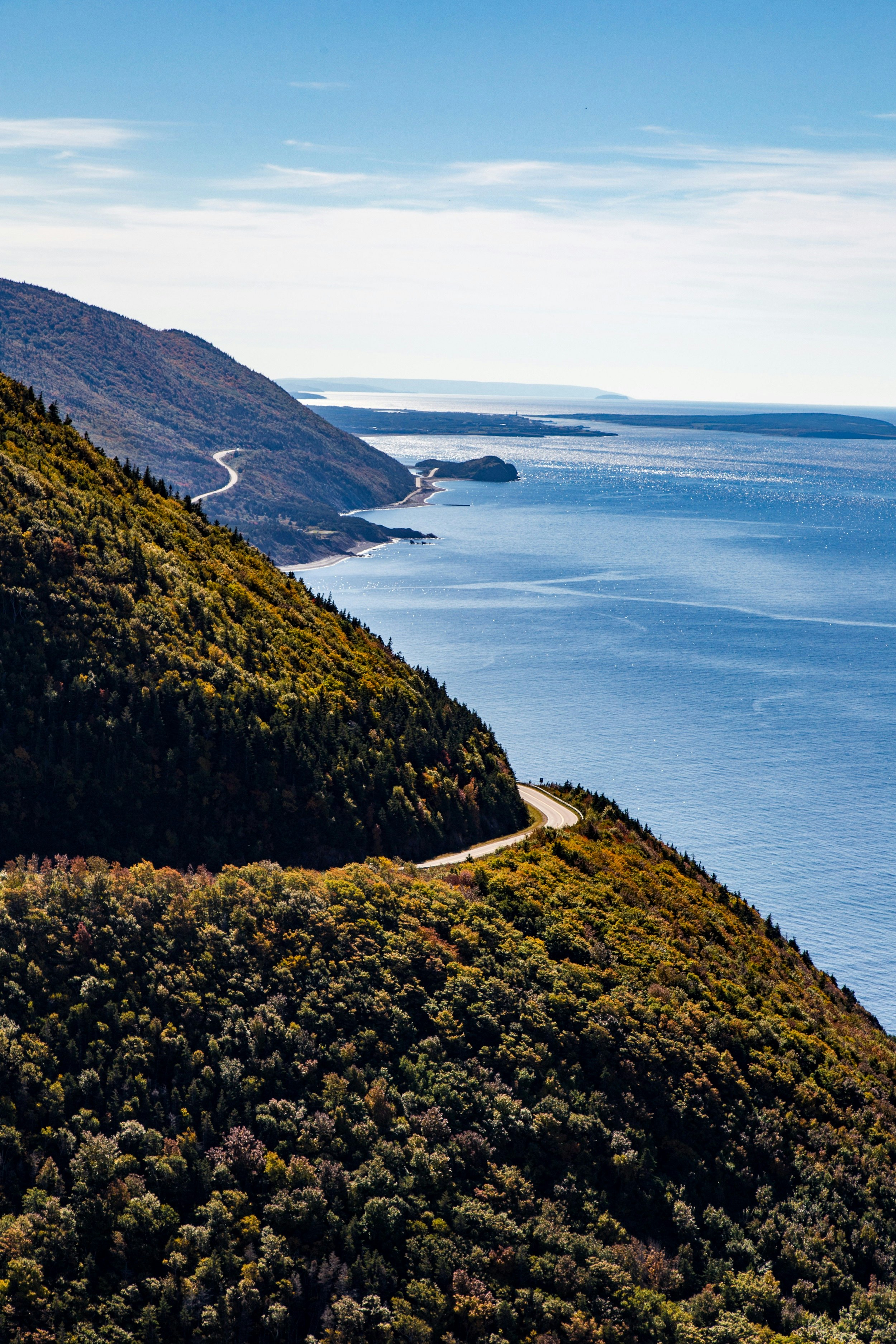
8. Cape Breton, Canada
Circling Cape Breton Island , off Canada’s Atlantic coast, the Cabot Trail passes through fishing villages where Gaelic is still spoken, Miꞌkmaq reserves and Acadian towns. It winds through old-growth forest to the edge of rust-colored bluffs, before dropping hundreds of meters to sandy beaches and picturesque ports, where the locals sell fresh lobster and chowder. Whether you do the 300km loop in a day or a week, the Cabot Trail is one of the best bike rides in North America . Go in the spring or fall. It can get very busy in summer, and winter is, well, winter in Canada .
On Québec’s Route Verte, not knowing what I was getting myself into was the best part

9. Boulder, USA
Locals call it the People’s Republic of Boulder . In many ways, it is a place unto itself. Located 50km northwest of Denver , in the foothills of the Rocky Mountains , the home of the University of Colorado is a haven for tech types, academic hippies and Bobo athletes. On its bike paths, you’ll come across Olympians and Ironman champions, though you likely won’t be able to distinguish them from the other locals, as Boulderites are about the fittest people on the planet. Pros and faux pros alike have been coming to the city for decades for its altitude and college-town vibe. For a real challenge, take on the Fearsome Foursome, climbing Flagstaff, Sugarloaf, Magnolia and Sunshine for 2600m of climbing in 80km. There is plenty of pleasant riding around too.
A beginner's guide to hiking in Boulder
10. Chihuahua
If you want to experience the real Wild West, head to Chihuahua, Mexico. Cowboys on horseback outnumber bike riders by far in the rugged, mountainous state. Nevertheless, it is a spectacular place for a cycling adventure. Long climbs rise past scrubby pines and desert to well over 2000m, before plunging down switchbacks and back into forests. Make sure you visit Copper Canyon , which is larger and deeper than America’s Grand Canyon, and sample all of the street food when you do come across a town or village.
Related articles: In Iceland’s remote Westfjords region, a new bicycle route takes shape These are the world's best cities for cycling The best cycling tours in India
Safety recommendations and restrictions during a pandemic can change rapidly. Lonely Planet recommends that travelers always check with local authorities for up-to-date guidance before traveling during Covid-19 .
This article was first published Dec 2, 2019 and updated Jan 19, 2022.
Explore related stories
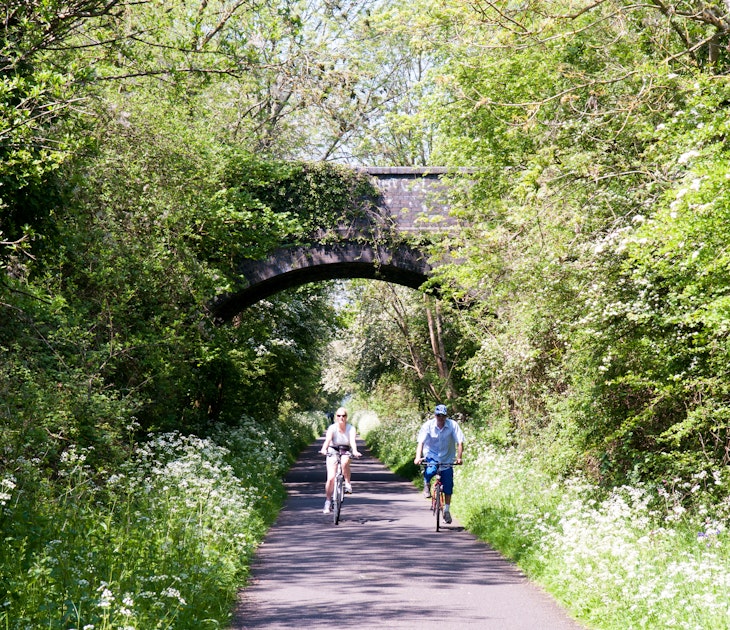
Jul 26, 2020 • 4 min read
The lush, open countryside that makes up much of the UK is best enjoyed on two wheels. Here are 10 of the best cycling routes in the United Kingdom.
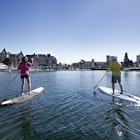
May 8, 2024 • 11 min read
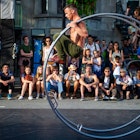
May 7, 2024 • 8 min read
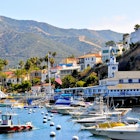
May 7, 2024 • 7 min read
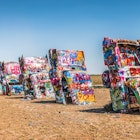
May 5, 2024 • 5 min read
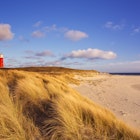
May 3, 2024 • 7 min read
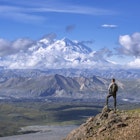
May 1, 2024 • 12 min read

May 1, 2024 • 6 min read
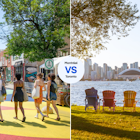
Apr 25, 2024 • 7 min read
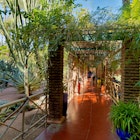
Apr 24, 2024 • 11 min read

Bicycle Touring Guide for Beginners: Everything You Need To Know

The idea of planning and preparing for your first-ever bike tour might seem a little intimidating at first. I completely understand — I was very intimidated when I left for my first-ever tour ( from London to Istanbul ), but I quickly discovered that I needn’t have been worried!
In this bicycle touring guide, I’ll cover everything you need to know in order to plan and prepare for your first cycle tour, including how to choose a bike for touring, what gear you’ll need, how to budget, ideas on where to go, tips for life on the road and more.
I’ll also be responding to worries that novice cycle tourists often have, such as whether you need to be really fit and whether you need to know a lot about bikes in order to tour.
Let’s dive in!
What is bicycle touring?
Simply put, bicycle touring is travelling by bicycle.
It’s a type of adventure travel that combines cycling with backpacking. You’ll cycle for days, weeks, months or even years, with your luggage attached to your bike. In doing so, you are self-sufficient and your journey is self-powered.
Cycle touring vs bikepacking
The phrases “cycle touring” and “bikepacking” are often used interchangeably. Both refer to travelling by bike, but it’s the terrain and type of bike used that sets them apart.
Cycle touring is typically done on-road or along bike paths, using a touring, hybrid, or even a road bike.
Bikepacking refers to off-road adventures along dirt roads and/or in the mountains, on a bike with fatter tyres, such as a mountain or fat bike.
For the purpose of this guide, we will focus on cycle touring , but a lot of the information here will also be useful to those who are interested in bikepacking.
Why should you go on a bicycle tour?
There are few better ways to explore the world than by bicycle.
Most tourists will travel from hotspot to hotspot, but on a bike, you’ll get to uncover things that most people miss. You’ll really connect with your surroundings and notice the fine details of the region you’re travelling through.
In a car, you see so much yet experience so little. There’s no real connection to what’s just outside of your window; you’ll see but a timelapse of the world around you. On foot, you soak up each individual step, but with this comes confinement and small distances covered each day.
That’s where bicycle touring, for me, wins every time. On a bicycle, you’ll cover substantial distances, yet you’ll still be slow enough to really see and experience everything around you. If it’s raining, you’re soaked. If it’s hot, you’re sweating. There’s no AC to turn on, no roof over your head. Dirt, dust and insects will stick to your sweat-clad skin. You must grind up the hills, but then you’ll have the joy of coasting down them.
Not only this but bicycle touring is a cheap way and eco-friendly way to travel!
READ MORE: 10 Reasons Why You Should Try Bicycle Touring

How to choose a bike for touring
Touring bikes are specifically designed for long-distance, weight-bearing cycling. They have a longer wheelbase than regular bikes, providing more stability and comfort while carrying a load, and have several attachment points for racks and bags.
When choosing a touring bike , think about the demands of your ride:
Duration : For short tours — perhaps a week or two — just about any bike will do. If you’re planning a longer trip, there’s a stronger case for using a higher quality bike that won’t fail under strain.
Location : If you are touring in a remote location, where access to bike repair is infrequent, it’s a good idea to invest in a quality bike that is unlikely to break down and leave you stranded in the middle of nowhere.
Terrain : If you’ll be sticking mostly to roads, you can really use any bike, although skinnier tyres will enable you to go faster. If you’re planning on going off-road and riding over dirt paths and mountainous terrain, you’ll want a bike with wide tyres and good suspension.
That being said, you don’t need a touring bike. A nice bike is just that: nice but not essential. People have toured great distances on bikes that didn’t look up to the job. I cycled across Europe using a second-hand bike from a charity shop, and Thomas Stevens cycled the world on a penny-farthing in the 1800s!
Your budget needn’t hold you back . You really don’t need to splurge on an expensive new bike, unless you want to. As long as your bike has fitment points so you can attach a rack and panniers, decent gears and tyres and a comfortable saddle, there’s no reason why you can’t tour on it. Just keep in mind that long rides over challenging terrain may be a strain on your cheaper, older bike.
If you’re planning on a long tour over challenging terrain and want to invest in something designed for such an expedition, take a look at the following touring bikes:
- Fuji Touring
- Cube Touring Bike
- Trek 520 Disc
- Kona Sutra Adventure Road Bike
- Ridgeback Panorama

What gear and equipment do you need for a bicycle tour?
At its heart, bike touring is all about minimalism and simplicity. The mantra of “it’s better to have it and not need it” is not the way to go. You need to be selective with what you bring as you’re the one who must grind the weight of your luggage up those hills!
Here is what I recommend you bring with you on your bicycle tour:
- Panniers — I love these ones
- Inner tubes
- Tail lights
- 2 cycling shorts
- Non-cycling pants
- Long sleeve layer
- Jumper/fleece
- Waterproof jacket
- 5 pairs of underwear
- 5 pairs of socks
Camping gear
- Sleeping bag
- Sleeping mat — I love this Forclaz mat
- Travel pillow
- Gas cylinder
- Portable stove
- Plates/cutlery
- Matches/lighter
Miscellaneous
- Wallet and money
- Refillable water bottle
- Soap & shampoo
- Toothbrush & paste
- Hairbrush & hair ties
- Travel towel
- Battery packs
(A side note: you don’t need all of this stuff. You can pick and choose what would provide comfort and value to you during your tour.)
READ MORE: A Complete Bike Touring Gear Guide and Kit List

How do I carry all my gear?
Panniers are a type of bag that sit on your bike and store all your stuff. They’ll mount over your wheels, either at the front, back, or both. You’ll need to fit racks onto your bike, and then clip the panniers onto these racks.
Pannier racks
Choosing a pannier rack for your bicycle is about as exciting as watching paint dry, but strong racks are essential when preparing for a long-distance bicycle tour. You’ll be clipping your panniers and bike bags onto them so they need to be hard-wearing and capable of carrying your luggage.
Every bike is different and there are many variables to consider when choosing your racks:
- Does your bike have disc brakes or rim brakes? Your rack might need extra clearance if you have disc brakes.
- Does your bike have mounts to attach the back rack to, or will you need to use clips?
- Does the rack give you plenty of heel clearance? Essential if you actually want to be able to pedal when the panniers are attached!
You’ll also want to consider the material your racks are made from:
- Aluminium: very lightweight but less durable.
- Chromoly: heavier than aluminium but durable and strong.
- Steel: heavier than chromoly but very durable and can be welded if they break.
- Titanium: lightweight but expensive.
Make sure to check your wheel size and dimensions to get the one best suited to your bike. If you don’t know much about bikes, I’d advise getting racks fitted at your local bicycle shop.
Panniers and bike bags
Panniers/bike bags are where you’re going to store all your gear, and they’ll clip onto your pannier racks.
Ortlieb is one of the most popular panniers and bike bag brands as their bags are known for being waterproof and durable. That being said, Ortlieb isn’t the cheapest at £100+. You certainly don’t need to fork out for Ortliebs, unless you want a really great pair that’ll last you a long time, but it’s worth getting good quality, waterproof panniers that will last.
If you’ll be camping on your tour, you’ll likely need front panniers as well as back panniers, as camping and cooking gear can take up a lot of space. If you’ll be staying in hotels or similar on your tour, you may well be able to get away with back panniers only. It all depends on how much gear you’ll be carrying!
I use these back panniers from BTWIN and they serve me very well. They’re waterproof, durable and have plenty of space.
I had some cheap front panniers which, quite frankly, sucked, and they broke quickly. This is why I advise investing in some good quality panniers.
Some great options for panniers include:
- Ortlieb 20L Back Roller Classic
- Arkel 22.5L Panniers
- Thule Shield 25L Pannier Pair
READ MORE: The 8 Best Panniers For Touring in 2022

How to pick a destination for your first bike trip
It seems that many people think that travelling by bike needs to be adventurous. Sure, there are particularly intrepid individuals out there who are enthused about navigating the steppes of Central Asia or sweating their way across the Sahara desert, but these are far and few between.
Bicycle touring can be thought of as a “cycling holiday” — you’re doing this to enjoy yourself, after all!
When deciding where to go for a bicycle tour, you’ll want to consider the following:
Time: Most of us can only take a short while out of work at a time, or have commitments that can’t be abandoned for too long. If you don’t have much time, why not start local? Just get out of your house and start cycling — a weekend tour can still be a great adventure! If you have two weeks or longer, you have a lot more choice on where to go.
Season: The weather can have a massive impact on how much you enjoy your tour. Choosing to cycle across Asia during the monsoon season or northern Canada during winter could be miserable.
Style: Does your chosen destination fit your cycling and travel style? Think about what you want to get out of your cycle tour, what sights you want to see and how comfortable you are cycling in remote places.
Experience: When planning a bike tour, you should use your previous riding experience to figure out how much distance and how much incline you’re capable of covering. For example, if you’re not in the best shape, touring the steep inclines of the Pyrenees might not be such a fun experience for you.
Ideas on where to go bicycle touring
Here are some great destination ideas for first-time bike tourers:
Western Europe
Many first-time bike tourers select Europe as their first adventure. It’s a great continent to cycle in: bike paths are decent, amenities are great and distances between cities and towns are much smaller than in other parts of the world. Not only this, but Europe is diverse with beautiful scenery and fascinating cultures, and is home to a great community of cycle tourists.
There’s a huge network of dedicated bicycle routes that span across Europe, known as the EuroVelo routes. These are perfect for first-time cycle tourists, as they make planning easy. Just pick a route and follow it!
I would say that Western Europe is more beginner-friendly than Eastern Europe, as (typically) bike paths are better maintained, infrastructure is more set up for cyclists and campsites are everywhere.
I personally cycled EuroVelo 6 one summer and had a fantastic time pedalling along rivers and visiting capital cities. If you’d like to cycle along the Mediterranean coast, taking in Spanish beaches, the canals of Venice, beautiful Croatia and more, have a look into EuroVelo 8.
If you’ve got a week for your cycle tour, Passau to Vienna is a great choice.
If you have 2-3 weeks, I would recommend following the Loire River in France (the Loire a Velo ), or the EuroVelo 15 , which follows the Rhine River through Switzerland, Germany and the Netherlands.

South Korea
The South Korean government has invested massively in cycling, meaning the country now has thousands of kilometres of dedicated bicycle paths. The most famous of their bike routes is the 4 Rivers Path , a 633 km-long path connecting the major Korean cities of Seoul and Busan. It’s an ideal option for a beginner’s bicycle tour.
If you want to see more of the country, you could even make up your own route, as South Korea has an excellent road network with many secondary roads that usually see little traffic.
Camping culture in South Korea is huge and there are lots of free campsites scattered everywhere, usually in scenic areas, such as by the beach or a lake. South Korea is also one of the safest countries in Asia, making it ideal for solo cyclists who might worry about cycling alone.
Japan is a dream destination for many, but many people are put off from visiting due to the high costs. However, there is a budget way to explore Japan, and this is — you guessed it — by bicycle touring.
Wild camping is legal in Japan, meaning you can pitch your tent for free as your travel around the country. Public baths are everywhere and cheap, meaning you can wash easily on the road, too.
Roads in Japan are generally well-maintained, aside from the occasional pothole. Long cycling paths are not as common as in South Korea, but it’s possible to cycle on minor roads, which are usually very beautiful and not too heavily trafficked.
Like South Korea, Japan is also incredibly safe, making it a great option for solo cyclists.
Southeast Asia
Southeast Asia is a very popular destination for cycle tourists; it has a warm climate, there’s so much to see and do, and it’s very budget-friendly . It’s feasible for you to eat out every day and stay in guesthouses, rather than camp and cook your own meals. With this in mind, you could think of Southeast Asia as a luxury destination for touring!
The landscapes are spectacular in this part of the world. You could cycle down the coast of Vietnam, tour through peaceful Laos or pedal along the mighty Mekong River.

How to budget for a bicycle tour
One of the perks of cycle touring is that it’s typically cheaper than your average getaway. Your cooking and camping gear have you covered for food and accommodation, and your bicycle is your transport.
That being said, your daily bicycle touring costs will vary massively depending on your touring style and which part of the world you’re in.
Cycle touring is doable on any budget, but if you’re cycling on a shoestring, it may require a strong sense of adventure and the will to adapt to some discomfort.
If you choose to wild camp, cook your own meals and skip paid attractions, you could potentially tour on a mere $5-10 per day.
On the other hand, you could easily burn through over $100 a day if you choose to eat out and stay in hotels while touring expensive places like West Europe, North America and Australia.
Most tourers’ daily budget falls somewhere in the middle. For example, I prefer to tour by staying at campsites and cooking my own meals. This way, I always have a place to pitch my tent with access to toilet and shower facilities. I also allow myself some luxuries, such as the occasional meal out, fancy coffee from cafes, and some paid attractions. Touring this way, I spent roughly €30 per day while cycling across Europe.
If you’re someone who doesn’t want to camp but is worried about the costs of staying in hotels, consider touring somewhere like Southeast Asia, where accommodation and eating out are super cheap. You could expect to pay roughly $20-30 per day in Southeast Asia by eating delicious street food and staying in budget guesthouses.
As well as your daily touring costs of food, accommodation etc, you’ll want to factor in potential bike repairs and kit replacements. Leave yourself a buffer, in case a hole rips into your tent or your bike needs professional repair.
Finding bike-friendly accommodation
Unless you’re planning a short trip, it’s not practical to plan accommodation in advance. Weather, equipment, your energy levels and other factors can all influence the distance you cover each day. You might also find an unexpectedly nice town and want to spend some time there. With this in mind, it’s best to remain as flexible as possible when it comes to where you lay your head at night.
Campgrounds
Campgrounds offer a safe place to pitch your tent, along with a toilet and shower, and usually WiFi and electrical outlets, too. They’ll even sometimes have laundry facilities, cooking stations and more. Campgrounds can be a great place to stay at a really reasonable price.
In Europe, Australia and New Zealand, you’ll find that campgrounds are everywhere and usually good value for money. In Japan and South Korea, there are many free campgrounds where you can stay.
Watch out for privately-run campsites in the US, as they can charge a lot of money for a small patch of grass. They usually prioritise RVs and may even turn cyclists away!
You won’t really find campgrounds in developing countries, such as in the Middle East or South Asia.

Sometimes you just need a break from camping! Hostels are generally the cheapest way to get a bed for the night, if you don’t mind sharing a room with other people. They’re most commonly found in cities or larger tourist towns — it’s unlikely you’ll find hostels in super rural areas.
In expensive places, such as West Europe or Australia, hostels can be as low as $10, although they’re usually closer to $20. In cheaper places, like Southeast Asia, they can be as low as $4 per night (yes, really)!
If you’re touring in places like Western Europe, the USA or Australia, then nothing will blow your budget faster than staying in hotels. However, if you’re sick or have been riding in bad weather for a few days, a hotel room with an actual bed and a private bathroom can be a real morale booster.
If you do stay in hotels, make sure there is somewhere secure to lock your bike up. Cycle tourists are not usually well catered for at hotels — I had to lock my bike to the fence in a hotel garden in Austria as there was nowhere else to put it.
In continental Europe, you might spot a type of hotel called a pension . Pensions are usually much more budget-friendly than a full-scale hotel and are more like a guesthouse or bed and breakfast. Pensions near bike paths in Germany and Austria often have signs outside to let cyclists know their bikes are welcome: “Radfahrer Wilkommen.”
In less expensive places, such as India or Southeast Asia, it’s affordable to stay in budget hotels every night.
Wild camping
Wild camping is a great way to save money and enjoy nature. It also offers complete flexibility, as you can pitch your tent just about anywhere — a real lifesaver in areas where tourism isn’t common.
You’ll want to find a secluded spot if you choose to wild camp, away from roads and out of sight of people.
Bear in mind that wild camping is prohibited in many countries, although many cyclists do it anyway and don’t get caught. Most people have a relatively relaxed attitude to wild campers, and so may or may not ask you to move on if you’re caught. Just make sure to be discrete: find a secluded spot, wait until dusk to set up camp and be gone by early morning.
If you’re new to wild camping, it’s normal to have some worries at first. I used to be afraid that an unpleasant stranger would come by or the police would show up to ask me to move on. However, as long as you remain hidden and are discrete, it’s unlikely you’ll encounter any problems.
WarmShowers
If you’re not familiar, Warm Showers is a free worldwide hospitality exchange for touring cyclists. It’s a fantastic community — cyclists offer to host other cyclists for a night. You’ll be given a place to sleep and a shower, but it’s likely you’ll also be given food and a beer. Warm Showers states that they have hosts in over 160 countries!
Unconventional options
Churches, police stations, gas stations, farmer’s fields and more are often viable options when looking for somewhere to spend the night. It depends on the country and the laws they have on camping, but in many places, people will be happy to help cyclists and provide somewhere for them to pitch their tent.
People across the world are hospitable and kind — particularly when they see a weary-looking cyclist with lots of gear strapped to their bike!
As an example, myself and two other cyclists pitched our tents next to a gas station in Turkey one night. The security guard gave us coffee and snacks, and a passing farmer even gifted us some watermelon and tomatoes.

Overcoming worries and doubts
If you’ve never been on a cycle tour, you may feel overwhelmed and have doubts about whether you’re capable or not.
Let me tell you: if I can do it, then so can you. With no touring experience, little knowledge of bike mechanics and a not-so-great level of fitness, I cycled from London to Istanbul over the course of 3 months.
I am not particularly brave or strong-willed. I just took it one day at a time.
What if I know NOTHING about bike mechanics?
Don’t worry! I didn’t know much about bike mechanics before committing to my first 3-month cycle tour.
That being said, it would be extremely helpful to know a few basics in case of a breakdown. At a minimum, you should know how to pump your tyres and how to repair a flat tyre.
If you really do know nothing about bike repair, it would be wise to choose a destination where you’re not going to become stuck if your bike breaks down. A popular route like the western part of EuroVelo 6 is dotted with bike repair shops, as well as other bike tourists who would probably be happy to help if you’re in a tough spot.
How do I train for a bicycle tour? Do I need to be really fit?
As the saying goes, “train for the tour or let the tour train you.”
You do not need to be really fit. Training can be done on the road, as long as you’re willing to take things slowly at first. You don’t need to cover massive distances each day if you don’t want to, and no one will judge you if you need to get off your bike and push sometimes.
Ignore the self-important types who think you’re not a proper cyclist just because you only cycled 30km and pushed your bike up that hill.
That being said, having good fitness will make your bike tour much more enjoyable.
Try to cycle 3 or 4 times a week, including one whole day of cycling over varied terrain. This will help to improve your fitness, as well as prepare your body for long days in the saddle.
I’m still not sure if bicycle touring is for me…
If you’re nervous about committing to a big tour, why not have a practice run? You could head out somewhere local one morning, camp that night and then head home the next day. This will give you a feel of what bicycle touring is like.
Alternatively, there are companies such as Spice Roads , Grasshopper Adventures and Bike Adventures that offer fully supported, guided cycle tours. All the logistics will be taken care of for you, so you can enjoy cycling without worrying about getting lost or finding places to stay. This is also a great option if you simply don’t feel comfortable touring on your own due to safety concerns.
What’s the best travel insurance for a bicycle tour?
It’s harder than you would expect to find a decent travel insurance policy that covers bicycle touring. And, unfortunately, most policies that do cover bicycle touring do not cover damage to or theft of your bike.
If you’re a UK resident, Adventures Insurance is probably the best option.
As the name would suggest, they specialise in insurance for more adventurous pursuits — including cycle touring. They cover personal liability and medical expenses while cycle touring, and even allow equipment up to £1,000 to be covered, with a single item limit of £600. However, the maximum duration of your cycle tour must be 3 months.
If you’re not a UK resident or will be touring for longer than 3 months on one continent , I would recommend World Nomads , whom I personally use for most backpacking and general long-term trips.
You can read World Nomads’ policy on cycling-related travel h e re , but here are the basics:
- Cycle touring is covered but the tour must be on one continent only — no cover is available for intercontinental cycle touring.
- You’ll need to tick ‘cycling / biking – independent cycle touring’ when buying your policy. This is an optional extra, so be sure to select it.

READ MORE: 5 Best Cycle Touring Insurance Providers
Tips for life on the road
1) Take every opportunity to refill your water bottles.
2) Drink before you are thirsty and eat before you are hungry.
3) Carrying your own toilet roll is essential. Trust me.
4) Double-check your camping spot before you head off for the day. Cycling back for something you’ve forgotten is the worst!
5) Especially for longer tours, build in a luxury day every so often. A nice hotel room and a warm bath are so welcome after weeks of camping.
6) Be sure to take rest days and make time for sightseeing.
7) Be conservative with the mileage at first; no amount of training can adequately train you for hours in the saddle day after day.
8) Find the little roads. They’re usually much nicer to cycle on than the more direct but busier roads.
9) Stock cubes can add flavour to almost anything and are great to mix into a perhaps otherwise flavourless camp meal.
10) Be prepared to get dirty! Sweat + sunscreen + cycling is an unpleasant combination. Tiny insects and layers of dust/dirt will stick to your skin.
11) Learn the mistakes drivers make, and assume everyone is going to make them every time.
12) Numbness in any part of your body should be treated as a warning sign that something needs to change in your bike fit or cycling posture. Numbness can lead to serious problems and should be treated seriously.
13) It’s not a race. Who cares if you only cycle 10km a day? As long as you’re enjoying yourself, that’s all that matters. As Jimmy Buffett said, “go fast enough to get there but slow enough to see.”
14) A lot of the challenges are mental. The going can get tough at times, but the pros of touring have always outweighed the cons for me.
15) The most important bike touring tip of all: have fun!
READ MORE: 40 Random Yet Helpful Bike Touring Tips

I hope this bicycle touring guide for beginners has been useful and has provided a good foundation of knowledge to help you plan and prepare for your first cycle tour.
Please feel free to post any questions you may have in the comments section below; I’ll be more than happy to answer!
Happy cycling, Lauren


About The Author
Lauren Pears is a freelance travel writer and blogger based in London. She writes about active adventure travel, aiming to encourage and inspire travellers to make the most of the great outdoors.
Thank you for reading! If you found this post useful, I’d be grateful if you would consider using the affiliate links below when planning your travels. I’ll make a small commission at no extra cost to you. This will help me to keep this blog running. Thanks for your support – Lauren. Hotels – Booking.com Hostels – Hostelworld Cheap flights – Skyscanner Travel insurance – World Nomads Outdoor gear – Decathlon / GO Outdoors Cycling gear – Chain Reaction Cycles Alternatively, you could buy me a coffee to say thanks!

Similar Posts

40 Random Yet Helpful Bike Touring Tips

An Ode to Bicycle Touring
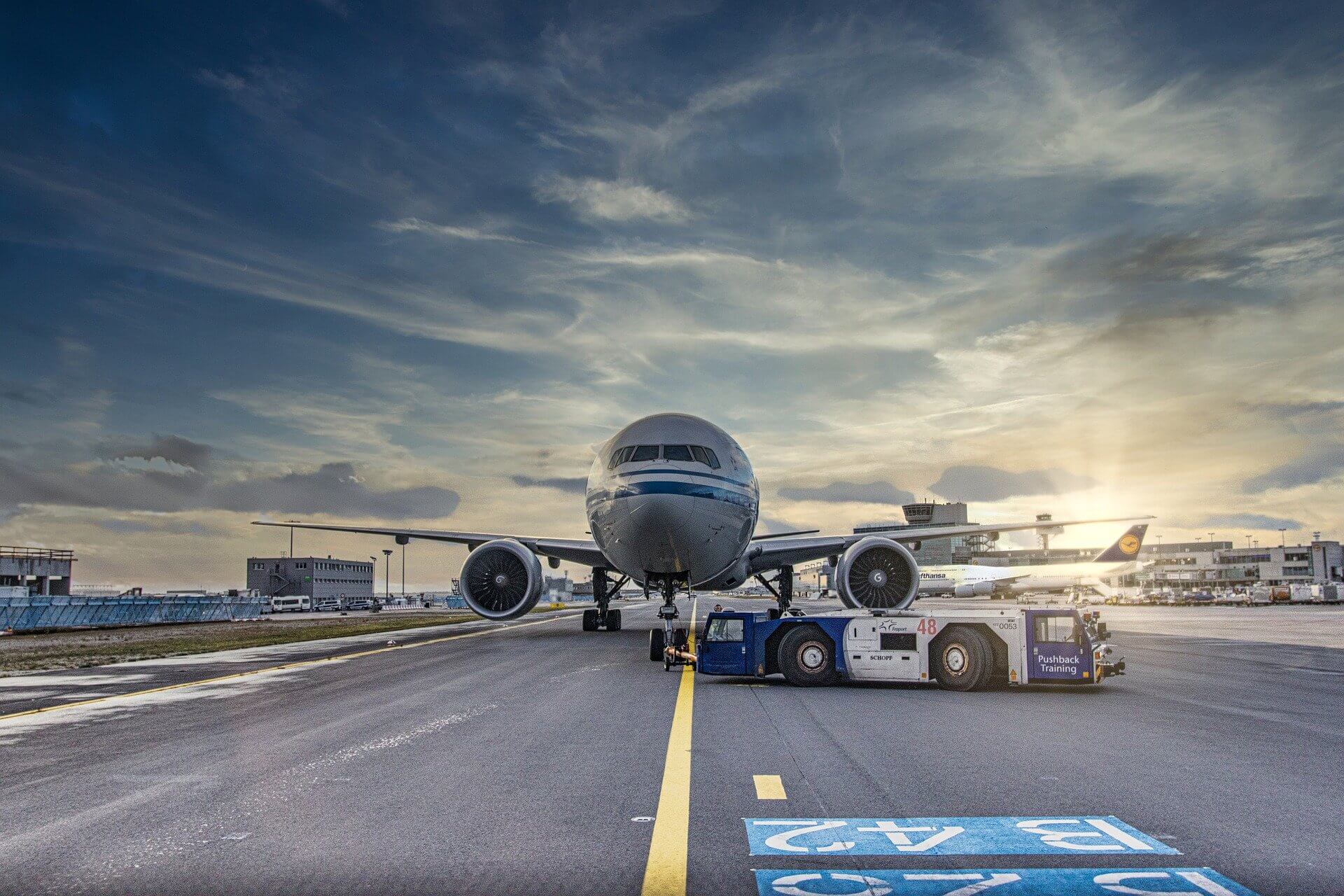
Flying With A Bike: How To Take Your Bicycle on a Plane

Cycle Touring Insurance: What You Need To Know and the 6 Best Insurance Providers

How to Prevent Numb Hands on Long-Distance Bike Tours

10 Great Reasons Why You Should Try Bicycle Touring
Really great info here, thank you!
You’re welcome!
Leave a Reply Cancel reply
Your email address will not be published. Required fields are marked *

So You Want to Plan a Cycling Vacation?
There are more cyclists on the road than ever before. here’s what you need to know before you roll..
- Copy Link copied

The Biking Boom
As we cycled through a year of pandemic living, one silver lining emerged: the freedom two wheels provided..
Sure, we might’ve been stuck in a world without travel, but a bike could offer fresh air, social distancing, and much-needed endorphins to ward off the pandemic blues (some of them, anyway). Suddenly, it seemed, everyone was buying a bike. Bike sales increased 200 percent in just the first few months of the pandemic, with “anything under $600 . . . just flying out,” Outside reported in January 2021. (Even more than a year after the first shelter-in-place orders were initiated, bikes, and bike parts, are still in short supply.) As we begin to emerge from our collective cocoons, interest in taking those bikes on longer journeys is also spiking—outfitters we interviewed are reporting record increases in cycling trips (and hiking trips, natch), especially U.S.- based routes.
This boom comes on the heels of more than three decades of investment in rails-to-trails throughout the United States, which means there are more possibilities than ever for multiday trips, whether you want to tackle a short overnight or a months-long, cross-country trail. Wondering where to start? You don’t have to be a spandex-clad, Tour de France type to enjoy the freedom of the open road. Here, everything to know about planning a cycling trip, whether you want to plan your own or turn over the reins, whether you’re a first-timer who wants to crash in cushy hotels or an experienced bike-packer looking for a new challenge.
How to Prep

Photo by David Marcu/Unsplash
First step? Just get out there.
It’s easy to fall into a rabbit hole of route planning and gear buying when it comes to bike touring. One thing all the experts agree on? Don’t overthink it.
You want to be adequately prepared—see below—and have a general sense of what you might encounter along the way, but “just taking that first multiday trip or even really long one-day ride will open up so much opportunity,” says Ted King , a retired pro cyclist. “It is a fun adventure just waiting to happen and you’re going to learn so quickly. Just start doing it.”
How do I decide on the trip and route that are right for me?
First, decide if you want to plan your own trip or if you’d like to join a guided trip. (If you’re interested in the latter, check out our guide to the best cycling outfitters .) If you want to go your own way, consider your fitness and experience levels, as well as the season and amount of time you want to devote to the trip.
Never done a multiday ride before? Start super small. Book a hotel or an Airbnb in a destination 10 to 20 miles away, pack a small bag, and cycle to your overnight .
Interested in camping—and therefore carrying the necessary gear (also known also bike-packing)? Or would you prefer to pack a little lighter and stay in hotels, inns, and Airbnbs along the way? If you’re not a camper, or don’t want to deal with carrying so much gear, choose a route that passes through more civilization. The Eastern Seaboard is a great place for this—especially Maine and Vermont—given the density, you can’t throw a bike shoe without hitting a cute little town with all the amenities you need. Socially inclined cyclists can also check out Warmshowers , a community of touring cyclists who act as hosts to other touring cyclists.

Rest days are crucial when bike-touring.
Photo by Sunrise Hunter/Shutterstock
How many miles a day should I ride?
Daily mileage depends on many factors, including your fitness and experience levels, the terrain (are there mad hills, or is it relatively flat?), and how much weight you’re carrying. If you’re new to bike touring, even if you’re a fairly experienced cyclist, consider trips that average no more than 30 to 40 miles per day so as to preserve your most critical resource: your body.
And don’t forget to take rest days! This is vacation, after all. In addition to giving your body—especially your legs—a break, rest days offer time to explore your destination, rather than just pedal past it. Park yourself in a campsite or hotel for a day or two and explore the city or town or take shorter daily rides.
“Distance is not as important as the journey,” says Analise Cleopatra, a filmmaker and relatively new mountain biker who made a documentary of her first bike-packing trip in 2019. “You don’t need to compete—just make sure you’re with people who are on the same wavelength and, you know, explore!”
How do I get my bike there?
Getting wheels where they need to go boils down to three options.
RENTING A BIKE This works well for first-timers, those who aren’t picky about their bikes, and/or those who choose a route in a cycling center such as Colorado or Northern California where there are high-end bike shops with decent rentals. It’s easier, too (no need to break down, ship, and rebuild your bike) though it can be more expensive. Rates vary, but a road bike rental can run you anywhere from $300 to $600 (or more) for a week in popular cycling states like California, Colorado, and Vermont.
SHIPPING YOUR BIKE This is the most popular option, currently, among cyclists we interviewed. BikeFlights has become the go-to company for all bikes, including e-bikes. Rates vary widely based on box size, weight, distance, and shipping speed, but if you shipped your bike from San Francisco to New York City, for example, in one of BikeFlights’ medium boxes, which fit most road and gravel bikes, you’d likely pay $83, excluding protection. (The company recommends buying protection to cover the market value of your bike.) You can also ship through Overnight Bikes , ShipBikes , as well as directly through FedEx and UPS, though you will likely pay more booking directly through the latter two.
The main challenge? You need to plan for this as it can take up to six days to ship a bike cross-country , though BikeFlights recommends building in extra time in the COVID era. Plus, you need to have somewhere to ship it. The pros recommend shipping your wheels to a bike shop in your destination (make sure you call to let them know in advance) and paying them to build your bike for you. Expect to pay at least $50 for this service. You can also take your wheels to a local bike shop and have them disassemble and pack it—BikeFlights can pick up directly from the shop.
FLYING WITH YOUR BIKE Alaska and Delta are among the most bike-friendly airlines. Alaska waives the oversize baggage fee and allows bikes to be checked as standard baggage . Delta also counts bikes as standard baggage . Southwest and United, however, charge higher fees: Southwest charges a bike fee of $75 each way , while JetBlue charges $100 each way, and United charges a flat bike fee of $150 each way for domestic flights. Keep in mind that e-bikes, which are powered by lithium batteries, are prohibited on all airlines.

Photo by Coen van de Broek/Unsplash
How should I train?
It depends on the length and nature of your trip. If you’re doing a short trip (less than three days) through terrain that’s not hugely demanding, there’s no need to map out an arduous training plan, pretrip. In fact, if you’re cycling regularly—at least two or three days a week—and can ride for an hour or more, you’re ready for a low-mileage overnight trip. In addition to building endurance, the most important thing to do is “condition” your butt to prevent saddle sore.
If you’re ramping up for a multiweek or multimonth trip that doesn’t take place on extreme terrain—and have been riding your bike regularly—you can use your trip to train, says Dan Meyer, deputy editor for Adventure Cyclist magazine. For example, ride 10 to 20 miles the first day and see how you feel. Ride 30 miles the next day and 35 to 40 the following day. “That requires some planning ahead of time to make sure that you have facilities and campsites and hotels that are at those distances along the way, ” Meyer says, “but it helps you get in shape more, instead of trying to go 80 miles on the first day and wearing yourself out.” (If you’re tackling an intense trail or just want more structure, Adventure Cycling has put together a 12-week training program .)
The more critical part of preparation is to understand how your bike handles when you’re carrying gear.
“A lot of people get to the start of their big route—this bike trip they’ve been dreaming of doing for years and they start pedaling and they’re like, ‘Holy crap, I’ve never ridden my bike with all this weight on it before,’ ” Meyer says.
He recommends practicing packing your bike , to make sure you’re packing efficiently, that the weight is balanced, and you can get to essential things (maps, food, water, etc.) quickly. Once you’ve done that, “take it out for a quick little 5- to 10-mile ride and just get used to how it handles, because it will handle quite a bit differently,” he says.
Essential Gear

Photo by Skylines/Shutterstock
Bike camping gear
Big Agnes Tiger Wall Bikepacking Tent The Big Agnes Tiger Wall tent is designed for bike-packing. Weighing in at just under three pounds, it’s super lightweight yet still provides protection and warmth when you’re out in the elements. The tent also includes tent poles that are shorter (12 inches) than normal, which makes them easier to attach to your handlebars, frame, or elsewhere on your bike. The stuff sack includes straps that are technically designed to attach to your handlebar bag, though using the recommended setup can be a little cramped on narrower, designed-for-women handlebars—most women should be able to move the poles to their frame.
It also includes loops to hang wet clothes on the outer rainfly, a generous vestibule area, and lots of pockets so you don’t have to sleep on top of your bike bags. Lastly, Big Agnes uses an ecofriendly dye process to reduce the amount of water that goes into making these tents.
>>>Buy now: $450 (two people), backcountry.com ; $499 (three people), backcountry.com
Snow Peak LiteMax Stove You have to pack light while bike-packing, which is why the compact, 1.9 ounce, Snow Peak LiteMax Stove is one of the best options for your bike-camping kitchen kit. It’s tiny but mighty and will last for years. Pair with an MSR Alpine StowAway pot (the stove fits inside even the smallest pot), a good knife, fuel, and a spork to complete your kit.
>>>Buy now: $60, amazon.com

Cotopaxi’s Bataan is an affordable fanny pack option.
Photo courtesy of Cotopaxi
Bags and carrying
Outer Shell bags The bike-obsessed team behind Outer Shell makes a variety of high-quality bike bags—handmade in San Francisco—for all types of cycling adventures, whether you’re roughing it on a backcountry gravel ride or trying to cart a bottle of pinot noir back to your hotel room after a day of riding in Napa. Almost all of its bags are designed to expand for optimal versatility and are either waterproof or water resistant.
For shorter rides, or for those who are embarking on a supported ride and don’t need to carry a lot, the Stem Caddy ($60) is a great choice. It can comfortably fit your phone, wallet, and all your essentials, or an entire bottle of wine. For longer rides or if you just want more space, Outer Shell’s seatpacks ($145–$150) can fit just about everything you’d need for an overnight. They’re also a nice alternative to panniers, since they won’t create an imbalance and can fit on any bike, no bike rack required.
>>>Buy now: Stem caddy, ($60 outershell.com ); Seatpacks ($145-$150, outershell.com )
Fanny/hip bag Skip the backpack (it’ll make you sweat like crazy) and, instead, use a fanny/hip bag while you ride (all the cool kids are doing it). Outer Shell has an excellent waterproof and expandable one, but I also like the compact Axis bag by Mission Workshop ($130, missionworkshop.com ), which was made with cyclists in mind. Cotopaxi’s Bataan ($30, cotopaxi.com ) is another, more affordable option, packed with organizational features and made from fabric remnants.
>>>Buy now: Cotopaxi Battan, ($30 cotopaxi.com ); Axis bag ($130, missionworkshop.com )

Photo courtesy of Velocio
Bike shorts by Velocio Padded bike shorts are essential on any long bike ride, but bike bibs—which are essentially padded, bike short “overalls” that don’t cut into your waist the way regular shorts would—are extra comfortable. There are tons of great brands in the world of cycling clothing, but Velocio is an AFAR favorite. Not only does it excel at making high-quality bike clothes with simple-yet-stylish designs, but its bike bibs also come with one crucial, lady-friendly feature: Its patent- pending FlyFree design means their bike bibs are stretchy enough to pull down for a pee-break, without having to remove your jersey, helmet, glasses . . . basically getting naked.
>>>Buy now: Signature Bike Short, $229, velocio.cc
Other great brands to check out for bike shorts, jerseys, and jackets include Machines for Freedom (ladies only), Castelli , and Rapha .
A bike computer is an essential part of a bike-touring.

A bike computer is an essential part of a bike-touring kit.
Photo by fotoliza/Shutterstock
Tools and other bike essentials
Paceline Products Chamois Butt’r Her’ There’s no way around it: If you’re spending several long days in the saddle, you need to take care of your butt. A good bike seat and shorts are the foundation of butt-on-bike-comfort, but consider packing some chamois cream, which soothes chaffed or irritated skin, as well. We like Butt’r Her’, a non-greasy formula made from natural ingredients like aloe vera and shea butter and designed and pH-balanced with female cyclists in mind.
>>>Buy now: $18, rei.com
Wahoo Elemnt Bolt bike computer One word: reliable. The Wahoo Elemnt Bolt is GPS-powered and can display maps for directions along with helpful data like the gradient of the road and weather and wind conditions. It has all the features to connect to your heart monitor and power meter, and it can sync with tracking apps like Strava so you can monitor your performance as well.
>>>Buy now: $230, backcountry.com
Bike tools (and skills) You’ll want to carry some basic tools and know how to change a tire and how to adjust your brakes. Park Tool makes a great hex wrench set and offers detailed videos on everything from how to change a tire to how to adjust your shifting.
>>>Buy now: Park hex wrench set, $24, backcountry.com
Bike pump When it comes to portable bike pumps, cyclists were once limited to CO2 or hand pumps. A CO2 pump is small, fast, and compact, but single use. (It uses a cartridge attached to the head of a small nozzle to quickly inflate a tire.) Though reliable and reusable, hand pumps can be a 15-minute arm workout as your friends wait impatiently for you, and they’re not as compact. But what about a hand pump that can also use a CO2 cartridge, offering both speed and reliability? Well, it’s 2021 and that now exists with a few brands.
>>>Buy now: Silca Tattico Mini Pump ($65, competitivecyclist.com ); PDW Ninja pump ($35, ridepdw.com )
Bike lights Although you may not be doing much riding after dark, lights can help you see and be seen—whether it’s on a foggy morning or helping drivers spot you as you move in and out of shadows. For lights, you want 500+ lumens for front and 50–100 lumens in the rear. Different blink patterns are a plus as well to help drivers see you.
>>>Buy now: Vis 360 Pro Helmet light by Light & Motion ($130, lightandmotion.com , rei.com ); Vis 1000 Trooper handlebar light by Light & Motion ($90, lightandmotion.com , amazon.com )
Snacks! A lot of new cyclists forget: You have to eat to avoid “bonking,” (the sudden loss of energy that can occur following a long ride). Pack an RX bar or two, or even a plain ol’ banana, to keep your energy up for several hours on the road.
Products we write about are independently vetted and recommended by our editors. AFAR may earn a commission if you buy through our links, which helps support our independent publication.
U.S. Routes

Great Divide photo by Jacinta Creten/Adventure Cycling Association
There are thousands upon thousands of bike trails in the United States with more, it seems, being added each year.
One big route in the works: The Great American Rail-Trail , which when completed, will stretch 3,700 miles from coast to coast. This list is by no means extensive—but it is a place to begin. For a look at more U.S. long-distance routes, check out the interactive map from Adventure Cycling Association, the 45-year-old organization responsible for some of the country’s greatest routes.
The Olympic Discovery Trail , Washington 130 miles
Washington’s Olympic Peninsula is the stuff of legends: Just west of Seattle, the stretch of land (home to Olympic National Park) offers quaint seaside towns, ethereal rain forest, waterfalls, and at the far western edge, the wild Pacific Ocean. On the 130-mile Olympic Discovery Trail—half of which is a dedicated multiuse path—cyclists can see, smell, and hear it all. The route begins in Port Townsend at the northeastern tip of the peninsula and ends at the coastal town of La Push. Camp or stay in lodges and hotels along the way.
Natchez Trace Parkway , Mississippi and Tennessee 444 miles
This National Park Service–designated trail stretches from Nashville, Tennessee, to Natchez, Mississippi, roughly tracing a 10,000-year-old route originally used by Native Americans ( the path once connected the Chickasaw, Choctaw, and Natchez tribes ). Travelers will pass through forests and farmland, witnessing creeks and numerous historical markers along the way. While cyclists do share the road with cars, speeds are low and traffic is relatively light. The route is great for cyclists looking for relatively flat terrain and cozy inns, but there are also more than a dozen campgrounds along the route, for those who prefer the freedom of a tent.
The Underground Railroad , Alabama to Ontario, Canada 1,997 miles
Beginning in Mobile, Alabama, and ending in Owen Sound, Ontario, the Underground Railroad follows the eponymous route used by freedom seekers from the late 18th century until the Civil War. Cyclists can tackle sections of the route or the entire length . The route traces rivers, winds through sleepy towns, and passes by numerous historical markers and sites that honor Black Americans’ struggles for freedom.
The Great Divide , Canada to New Mexico 2,696 miles
Don’t be alarmed by the sheer mileage of this route, which traces the Continental Divide and takes place primarily on dirt or gravel roads and trails—a playground for mountain bikers. Most cyclists tackle sections of the Great Divide, with the 700-mile Montana section among the most popular. Expect solitude, wildlife, and epic runs through pristine forest. Although the trail does pass through small towns, it’s best for those who are interested in camping for at least part of the route.
The East Coast Greenway , Maine to Florida 3,000 miles
Once the entire 3,000-mile route is completed, you’ll be able to hike or bike on protected paths through 15 states and 450 cities and towns, which is the entire point: to connect the nation’s “most populated corridor.” Launched by the nonprofit East Coast Greenway Alliance in 1991, the corridor is 35 percent complete , with 1,000 miles of protected paths between Maine and Florida. The remainder of the trail is on-road (so yes, you could complete the entire route now ). Some campgrounds are available, but the route is best for those who want to crash in hotels, motels, or in homes via Warmshowers.
The Southern Tier , California to Florida 3,022 miles
Tour the entirety of the southern section of the United States—passing through such states as Arizona, Texas, Louisiana, and Florida—or just tackle a section of the fascinating route. The Southern Tier begins in San Diego, winding through desert and the Algodones Dunes Wilderness Area, and ends in the 400-year-old town of St. Augustine, Florida. Ideal for those who prefer motels and hotels to camping.
Guided Trips

Photos courtesy of Backroads and Lamar Sellers/Shutterstock
For those who want the thrill of the open road without the headache of planning their own trip—and hauling their own gear—here are some of AFAR’s favorite cycling outfitters.
Many of these companies now offer e-bikes, making cycling tours more accessible
BACKROADS Berkeley-based Backroads has been leading fantastic small-group hiking, cycling, and other adventure-oriented tours since 1979. Cycling trips take place on custom-built titanium bikes, lodging ranges from small luxury ships (imagine cycling beside and sailing down the Danube ) to five-star hotels, and the food is as finely crafted as the routes. This year, watch for new U.S.-based trips like a five-day cycling tour of the Hudson River Valley, as well as weekend or long weekend getaways in Aspen’s glacial valleys and Texas Hill Country .
ADVENTURE CYCLING ASSOCIATION Long known for its stellar long-distance routes, the nonprofit Adventure Cycling Association , which began in 1976, is responsible for mapping out some of the country’s quintessential bike routes, including the 4,218-mile TransAmerica Trail . During the pandemic, the organization launched its Short Trips Initiative , a series of shorter guided trips in eight metropolitan areas, including Boston, San Francisco, Seattle, and Atlanta. Adventure Cycling expects to release route maps for self-guided versions of the tours in summer 2021.
VBT BICYCLING VACATIONS A two-time AFAR Travelers’ Awards winner , Vermont-based VBT Bicycling Vacations has crafted cycling trips for more than 50 years that include accommodations, luggage transfer, and most meals. It also offers self-guided trips. Pick from one of many New England–based tours or VBT’s national park tours, including a six-day Grand Teton and Yellowstone route .
WOMANTOURS Run by women and geared toward women, WomanTours has been leading cycling trips since 1995. Accommodations focus on smaller inns, bed-and-breakfasts, and in national parks, cabins and lodges. New U.S. routes include an eight-day tour of Alaska’s Inside Passage and a six-day tour of Oregon’s Roses, Rivers, and Rail Trails . Also new for 2021: a 25-day ride along section three (Kansas to Kentucky) of the cross-county TransAmerica route.
DUVINE With its focus on luxury and tapping into the local flavor of a destination, DuVine takes travelers into the heart of a place. The company’s trips range from those geared to avid cyclists looking for a new adventure to family-friendly to rides tailored to all ages. And, like many other outfitters, it offers several new domestic adventures, including a five-day art- and food-focused cycling tour of Santa Fe and Taos .
REI ADVENTURES Another AFAR Travelers’ Awards winner , REI Adventures recently discontinued its international trips to focus on building U.S.-based itineraries. No surprise, then, that the company will offer a bevy of national park trips with varied activities: rafting, kayaking, hiking, and yes, cycling. Cyclists, check out the new Joshua Tree weekend trip or a seven-day tour of Moab, Arches, and Grand Junction .
Notes From the Road
A little inspiration to hit the road, from those who have been there..
We spoke to variety of cyclists—from a relative newbie to people who make their living on two wheels—to share the wonders of exploring the world via your own power.

Photos by Alisa Geiser
Analise Cleopatra on the thrill of her first-ever bike-packing trip
“I’ve never done anything like that—I’d never even camped before that trip [along the Three Sisters, Three Rivers route in Oregon]. Just being out in the woods and open . . . you’re definitely at the mercy of the elements. But being there with Dej’uanae [Toliver], who I had known for a while, and Brooklyn [Bell, a pro mountain biker] who I had just met, definitely made a difference. I was anxious about ‘completing’ the ride, which is not something that I felt like I needed to do, but it felt like to some people the value of the ride was how far you could go. Later, I realized I’m not this person, I just want to bike and see these waterfalls and paint pictures and get to know these girls , you know? There’s so much elitism in the sport, but I think there’s definitely space for people who just want to explore and yes, challenge and push our bodies, but the point is not the pain.
“The terrain was very, very diverse the first couple of days. In the beginning, where we started near Caldera [Springs], it was very redwood-y with mulchy ground, but once we went past Suttle Lodge , it got really arid and there were a lot of dead trees. And then it got really lush around Big Lake. . . . Then it got very, very sandy. Once we got through the desert-like part, once we got to the Mackenzie River Trail it was so beautiful, just riverside the whole time. There were so many waterfalls. We [followed the Mackenzie River Trail] until we got to Oakridge and then there was a lot of climbing. That felt more hardcore: The last couple of days it was very rainy so it was pretty wet and muddy, which was fine—it was just a little cold and a little scary going downhill.
“[I have so much] gratitude for the opportunity to enter this world, because people don’t knowwhat they are missing out on. Hopefully the film inspires people who, like me, never would have gone camping by themselves. Find a buddy to go with and enter this world because it’s incredibly nourishing and healing just to be able to go out in nature to learn what your body is capable of and see the stars in their full capacity.”
Analise Cleopatra is a Florida-based filmmaker who made a documentary, Pedal Through, of her first-ever bike-packing trip in 2019 to inspire other newcomers to pick up a bike. Her next trip? The backroads of Georgia.

Photo by Mike Dicken/Adventure Cycling Association
Adventure Cycling Association’s Dan Meyer on the wildness of the Great Divide
“I’ve been dying to ride the entire Great Divide route for a while now, and I still hope to do it soon. A couple of years ago, I rode a [Montana] section of the Great Divide from Whitefish to Missoula. I did it by myself—it was a quick three-day thing. My now-wife and I had done a weekend loop north of Whitefish, and then she had to get back to work. She left me in Whitefish and I just rode myself back to Missoula. It was everything I was hoping for. It was gorgeous, it was quiet, there was nobody around. It’s just such beautiful terrain up there.
“You ride through a lot of dense forest on these rocky dirt roads—motorized vehicles are allowed but you don’t really see them for the most part. It’s just you spinning along, catching glimpses of wildlife. You get that nice, piney, fresh mountain air, you see a lot of alpine lakes and snow-covered peaks. I was going southbound and I did run into a few people riding northbound, but it was less than a handful. It’s the route for people who want to experience solitude in nature. There are other routes you can do where you’ll get to meet a lot of new people and have a lot of social interaction, but the Great Divide route, for the most part, is not going to be like that. It does pass through small towns and you’ll get to meet people in grocery stores and markets and campgrounds, but when you’re out on the road, it’s probably going to be just you, which I really enjoyed.”
Utah-based Dan Meyer, an avid mountain biker, is deputy editor of Adventure Cyclist magazine , published nine times a year as part of the nonprofit Adventure Cycling Association.

Photos by Rolf_52/Shutterstock and courtesy of Pete Stetina
Pro cyclist Pete Stetina on the beauty of Sonoma County’s endless backroads
“Sonoma County has a pretty storied cycling history. This is a place that a lot of the pro teams would have their early season camps in the earlier days. It’s unique because there are so many little backroads that twist and turn and snake—for every main artery that a lot of people drive to commute, there are four or five alternative options.
“As a pro, when I am here training, preparing for the world’s biggest races, I can pick and choose any direction pretty much and always keep it fresh. There are hundreds of thousands of possibilities. I can hit those rolling pastureland Petaluma hills toward the south and hit the coast. In West County you’re talking Jurassic Park–size redwood trees and ferns and just deep woods, moist redwood forest groves and then [you’ll reach] the coast. Up north, you even start to get into Lake County and that’s more like a dry alpine feeling, almost a Colorado feeling, with a lot more pine trees. Then you have all the vineyards and you have a whole big mountain range called the Mayacamas that borders Sonoma and Napa County [and it has] a bunch of huge climbs.
“If you are an advanced enough rider, one quintessential rugged Sonoma County route is the West County Highlight. It’s a very hard ride that includes some very tough climbs, [but also] some amazing vistas, some rugged backroads. You’re gonna hit every microclimate you can think of in one four- to five-hour ride. I’m talking urban and then redwoods and then riverfront and then coastal and then redwoods again and then oak forest, all of that. If you’re passing through the vineyards, a lot of the time, you’ll smell the fermentation, you’re going to smell the grapes being crushed and a little bit of that alcoholic perfume in the air and then you’re going to get into the redwoods and that deep mossy moist air. The coast is real stinky in a good way. And then there are all these little eclectic artist communities that have bakeries and coffee shops.
“There’s not a lot of fake [in Sonoma County]. Everyone’s kind of content doing them and you’re doing you and we’re a part of this community together, which is really nice. It’s definitely the people and the extracurricular possibilities outside of cycling that have kept me there and kept me happy. It’s one of the easiest places in the world to do my job.”
Pete Stetina is a pro cyclist based in Sonoma County who switched to gravel and adventure racing in 2019. In March 2021, he partnered with the Sonoma-based Piazza Hospitality to offer cycling packages to hotel guests at Hotel Healdsburg , h2hotel , and Harmon Guest House that range from customized routes to the Pro Cycling Experience package , which includes a private, guided ride with Pete. For each package booking, the partnership will provide a bicycle, helmet, lock, and (when they’re happening again) a bike camp adventure to an at-risk kid through the B-Rad Foundation , a Sonoma-based nonprofit.

Photo by Felix Lipov/Shutterstock
Pro cyclist Ted King on Vermont’s picturesque 200-on-100 route
“I’m in Vermont and there’s a cool route called the 200-on-100 and that refers to the 200 miles that spans the length of Vermont, from Canada to Massachusetts, and the route is entirely on Route 100. A lot of people will do it in one day . That said, it would also make for a really nice two-day trip or stretch it out and make it a three-day trip.
“At the beginning, you are literally at the Canadian border and that portion of Vermont is called the Northeast Kingdom. It’s just out there, it is rural, it is rolling pastureland, you can see mountains in the distance. The route is entirely paved and sort of inadvertently becomes a tour of Vermont’s ski towns. You’re going to go through Stowe and you go by Sugarbush and Mad River and you go right by Killington, you go by Mount Snow. It’s a relatively rolling route. There are no real extended climbs, except two, but over the course of a 200-mile ride they are relatively spread out.
“Detour off the route and find an Airbnb or a restaurant or brewery, all the things Vermont is well known for. . . . You’ll go directly by Lassen’s Finest Liquids in the town of Waitsfield, Vermont. Among beer nerds, their stuff is extraordinary. They’re a cycling friendly brewery and brewhouse—they just came out with Single Sip, [which is] absolutely delicious, and their double IPA is called Sip of Sunshine. It’s relatively early in the ride, so you might not want to have too much of that. But as you’re dividing [the route] up into a multiday trip, it might work out perfectly.”
Ted King is a retired pro cyclist who loves Vermont’s ubiquitous gravel roads. So much so that in 2019, he launched Rooted Vermont , a two-course (pick between 45 and 85 miles) ride, which is taking place for the second year from July 30 to August 1, 2021.
Jessie Beck contributed to the reporting of this story.

- RIDE YOUR BIKE.
- Video Course Login
- Success Stories
- Give Your Support

No products in the cart.
- Bike Tour Shop
- Search for:
How to Plan a Bicycle Road Trip
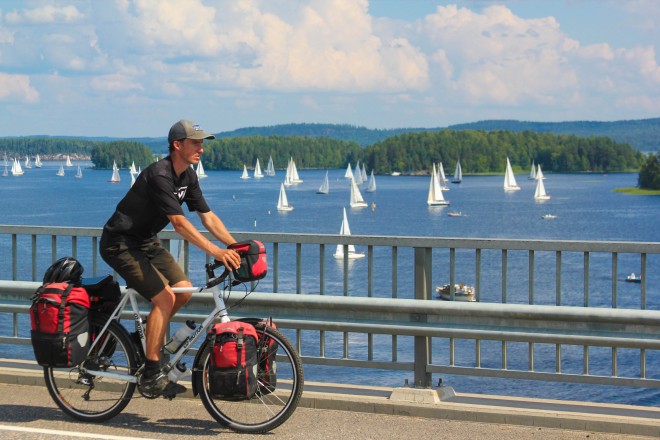
- Pinterest 4
This is going to be an amazing year! I’ve already cycled across Poland, Ukraine and half of Romania . Now I’m taking a short rest break in the beautiful city of Brasov, Romania … and in about two weeks time I’ll begin a 3-month-long bicycle tour across Romania, Serbia, Bosnia and Herzegovina , Denmark, Norway and Sweden.
This is my 15th year in a row of my bicycle touring all around the world… and I absolutely love my life/job as the Bicycle Touring Pro – traveling the world and helping people like you plan, prepare for, and execute their own guided, self-guided and self-supported bicycle touring adventures.
In this article I’m going to use my upcoming bike tour across Europe as a planning example… and I’ll share with you how I pick my travel destinations, how I plan out safe and enjoyable cycle touring routes, how I’ve broken my 3-month-long bike tour down into smaller (more manageable) segments, how I program my entire bike tour onto my smartphone so I can easily navigate once I hit the road, plus… a whole lot more.
STEP 1: Decide Where You Want To Go
This is the most important part of planning a bike tour. You’ve got to pick a destination for your travels based on the places that interest YOU most. Don’t just pick a place for a bike tour because you heard it was a good place to ride… or because you know someone else who has been there. Pick a part of the world you are interested in… and that’s where you should go!
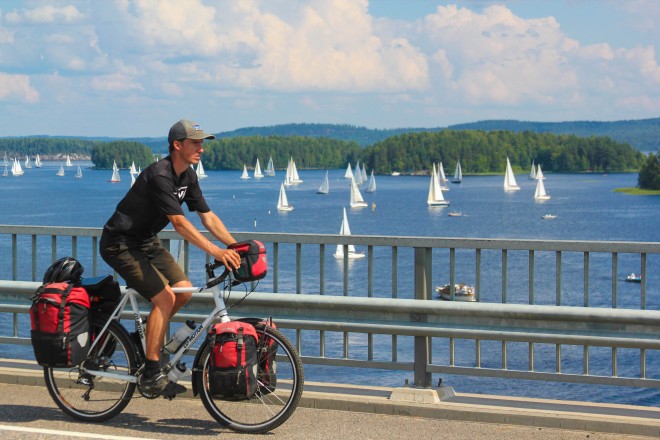
The reason I’ve decided to cycle across Serbia, Bosnia, Demark, Norway and Sweden this summer is because these are five European countries that I’ve never been to before. As someone with more than 15+ years of bicycle touring experience, I’ve cycled in a number of amazing places all around the world, so going somewhere new is what appeals to me now.
I want to cycle across Serbia, Bosnia, Denmark, Norway and Sweden because these are five new countries for me to explore, but also because it means knocking off five more countries on my list of 34 countries I have already cycled across in Europe. Can you believe that? I’ve already cycled across 34 European countries… and by the end of this summer I will have cycled across 39 European countries. That’s pretty wild!
STEP 2: Break Your Bike Tour Down Into Smaller Segments
Please note: This portion of the article was updated after the video at the top of the page was created.
After deciding that I was going to cycle across Romania, Serbia, Bosnia, Denmark, Norway and Sweden, I then began planning a route. But 3-months is a long time to plan… and the distances are quite vast. So, instead of treating my bike tour this summer as one, big, long adventure, I’ve broken my bike tour down into seven, smaller, more manageable segments:
- Brasov, Romania to Tuzla, Bosnia (906+ km)
- Tuzla, Bosnia to Copenhagen, Denmark (BUS TRIP)
- Copenhagen, Denmark to Oslo, Norway (863+ km)
- Self-Guided Bike Tour in Bergen, Norway with Active-Norway.com (325+ km)
- Oslo, Norway to Bergen, Norway (462+ km)
- Self-Guided Bike Tour in Matre , Norway with BergFritid (203+ km)
- Bergen, Norway to Umea, Sweden (1,288+ km)

Brasov, Romania to Tuzla, Bosnia
Watch the video at the top of this page and you’ll see that the first thing I do when planning a bicycle tour through a new country or area is that I begin by searching the Internet for fun, interesting, or unique things to do in the countries/areas I plan to cycle through. I then plot the location of these fun, interesting or unique things onto a map inside the free software, Google Earth .
After I’ve plotted out all the points of interest, a natural line tends to form – stretching from my starting location to the place where I hope to end my bike tour. I then connect the dots and plan out this new route using the website at maps.google.com (pictured above).

Tuzla, Bosnia to Copenhagen, Denmark
The second major segment of my bike tour this summer involves getting myself from Tuzla, Bosnia to Copenhagen, Denmark. Instead of cycling this long segment, I’m going to take a bus. I used the website at www.rome2rio.com to find the cheapest and easiest way to get from Tuzla to Copenhagen and discovered a company that operates super cheap bus rides from Tuzla to Copenhagen every single Sunday. I marked down the date of the Snuday that works best for me in my calendar, contacted the bus company to make sure they’d be able to transport my bicycle (they can!), and wrote to the bus company asking for a reservation.

Copenhagen, Denmark to Oslo, Norway
The third leg of my trip involves cycling from Copenhagen, Denmark to Oslo, Norway… in time to reach my friend Eric who is going to be flying into Oslo, Norway on July 20th. This means that I will have a little less than two weeks to cycle from Copenhagen to Oslo. I could go the faster and cheaper way… by taking the bridge over to Sweden and then cycling north from there to Oslo. But that wouldn’t give me a much time in Denmark. And because I’ve never been to Denmark before, and I’d like to see at least a little bit of the country while I’m there, I’ve decided to take the longer, more expensive route – traveling west from Copenhagen, then north to the top of the country, where I will have to take a ferry to the bottom tip of Norway, and then cycle from there to Oslo.

A Self-Guided Bike Tour in Bergen, Norway with Active-Norway.com
Once in Oslo, I’ll meet my friend Eric at the airport… and we will travel together (via the train) from Oslo to the nearby city of Bergen, Norway. Once in Bergen, we’re going to be participating in not ONE, but TWO, back-to-back, self-guided bicycle tours with Active-Norway.com .
The two bike tours that we’ll be participating in are the Sunnhordland by Bike and Boat tour… and the Biking Hardangerfjord self-guided bike tour.
During these two self-guided bicycle tours, Eric and I will be bicycling on our own, without a guide, through some of Norway’s most scenic mountains, coastlines, hills and fjords. Throughout the bike tour we’ll be staying and dining in hotels, guesthouses and cabins that Active-Norway has arranged for us in advance. It should be amazing… and we are both really looking forward to the experience!
This will be Eric’s first time in Europe and his first bicycle tour ever, so this is going to be an incredible experience for my old high-school/college friend… and I look forward to sharing the joys of bicycle travel with him.
Plus, the great thing about doing this bike tour with Active-Norway is that we simply show up for the start of the tour, there will be bikes waiting for us, all the details of the tour are taken care for us in advance, and our only job is to follow the tour itinerary provided for us, arrive at our hotels/guesthouses each night, and generally enjoy the overall experience. It’s going to be a blast… and I’m really looking forward to it!

Oslo, Norway to Bergen, Norway
After the bike tour with Eric and Active-Norway is over, Eric and I will take the train back to Oslo, where we will meet my friend Rob, who will be flying in that day from Canada. The three of us will stay in Oslo for the night and participate in a 3-hour-long bike guided bicycle tour the following afternoon with www.vikingbiking.com .
During this 3-hour bike tour with Viking Biking, we will be escorted around Oslo on car-free bike paths, through parks, hidden back streets, and along the nearby fjord. We’ll discover all of the major city sites in a fun and relaxed manner: the old castle Akershus Festning; the City Hall (home of the Nobel Peace Prize ceremony); the main street of Karl Johans Gate and the Royal Palace; Vigeland Sculpture Park; and finally along the modern harbor of Tjuvholmen/Aker Brygge. What better way explore a new Scandinavian country… than by bicycle!
As soon as the Oslo bike tour is over, Eric will run off to the airport in preparation for his flight back to the United States, and Rob and I will continue on our own, out of the city, and back to Bergen on our bicycles.
This will be my 4th bike tour with Rob. We met a few years ago during a guided bicycle tour in Switzerland with Bike Switzerland . And since then we have gone on two additional bicycle tours together: a week-long self-guided bicycle tour in the Loire Valley (France)… and a self-supported bicycle camping tour in Finland last summer. This year we plan to spend another week cycling together, traveling from Oslo, to Bergen. It’s nice to have friends who also like to ride bikes!

The Fjord Cycling Route Bike Tour
Then, on the 10th of August, my friend Katelyn will fly into Bergen and we’ll begin a five-day bicycle tour through the Sogne fjord region north of Bergen, Norway. But we won’t be doing this tour on our own. Instead, we’ll be participating in the self-guided Fjord Cycling Route bike tour with BergFitid .
During this unique bicycle touring experience we’ll get to experience all of what Fjord Norway has to offer in the way of narrow valleys, fjords and majestic mountains. The tour includes bike rental (incl. bike bag, helmet, lights and tool kit), info pack (overview map, info and hiking maps for Masfjorden), 5 nights accomodation with breakfast, packed lunch and dinner, as well as entrance to the Bjorn West Museum. Plus, the entire route is on paved roads, so it’s a great tour for bicycle touring beginners.
This will be Katelyn’s first bike tour ever, so it will be fun to have her join the adventure and see what she thinks about self-guided bicycle touring. I have a feeling she is going to love it!

Bergen, Norway to Umea, Sweden
During the last leg of my bike tour this year I’ll be traveling by myself, carrying all my own clothing, food, camping equipment, etc… and camping in the forests each night. I’ll bathe in the local lakes, use the Internet at local libraries, and generally be living off the land. Starting in Bergen, Norway, I’ll cycle north… on my own… until I get to Umea, Sweden, which is where my Scandinavian adventure will come to an end.
Once I get to Umea, Sweden, I’ll pack up my bicycle and prepare for the long flight back to Los Angeles, California – where I plan to visit with my parents for about a month or so before I continue on to Central America for even more bicycle touring adventures later this year.
STEP 3: Transfer Your Route Details Into Your Smartphone
So, once I had all that planned out on Google Maps, I simply saved the routes I wished to take on my bicycle as 4 separate files (1. Brasov, Romania to Tuzla, Norway 2. Copenhagen, Denmark to Oslo, Norway 3. Oslo, Norway to Bergen, Norway 4. Bergen, Norway to Umea, Sweden) and I email those files to myself. Then, on my smartphone, I open those Google Map files and they are instantly transferred into the offline mapping application I use on my phone to navigate while I’m cycling – MAPS.ME

This is a really simply offline mapping applications that allows you to see where you are anywhere in the world and figure out where you need to go… without having a need to access the Internet (like you would need to do with the Google Maps app or a similar online mapping application). The app allows you to download the data for any country in the world… in advance. Once you have that data downloaded (and the route you wish to take saved to your phone), you don’t need access to the Internet any longer. Simply use your phone or tablet’s free GPS tracking feature and you’ll be able to quickly and easily navigate from where you are to where you need to be. It’s that simple!
How to Plan a Bicycle Road Trip – Conclusion
So, that’s how I’ve planned my 3-month-long bicycle tour across Romania, Serbia, Bosnia, Denmark, Norway and Sweden this summer. I started by researching the areas I was most interested in visiting and I plotted out those points of interest on the map of the world using Google Earth. Then I broke my bicycle tour down into smaller, more manageable segments. I then used Google Maps to create a route plan for each of those small segments of my trip. I emailed those map files to my smartphone… and using the MAPS.ME application, I was able to save the route plan for my entire bike tour to my smartphone! Now everything I need to know about my bike tour this summer is saved in my phone… and I’m ready to hit the road.
To learn more about how to plan a bicycle road trip, be sure to read this article about route planning … and then grab a copy of The Bicycle Touring Blueprint – the world’s best book about planning, preparing for, and executing a self-supported bicycle tour.

Norway photo by: Victor Velez
Darren Alff
My goal as the "Bicycle Touring Pro" is to give you the confidence and inspiration you need to travel by bicycle anywhere in the world. I'm here to help you plan, prepare for, and execute your first bike tour and remove all the guesswork, wasted time and frustration that plagues so many first-time bicycle travelers.
6 thoughts on “ How to Plan a Bicycle Road Trip ”
I’ve purchased your Blueprint book, online. In creating ‘google maps’, I’d go to ‘google.com’ and key in ‘from: Las Vegas to: … to: … to: …’ , click on ‘Maps’ and get a map like you have in section 2. I’d get all the key points and cue sheets of how to get there. There must have been some change. Now, all the web addresses I saved changed. Now, one must go to ‘https://maps.google.com/maps?output=classi’ link, where I’d enter ‘from: Las Vegas to: … to: … to: …’. Is there a different way to get to the older map? The new way goes to ‘enter starting pt.’ then to ‘end pt’. I want the old.
Yeah, Google Maps is constantly changing their design/functionality. I liked the old Google Maps better and I’m not sure why they changed it so that multiple points along a route are so difficult to enter. Sorry about that. Ugh.
I recommend, better that Google Maps is to use Open Street Map (OSM): — https://www.openstreetmap.org
First, you can download all the maps (ps, all Europe or choose per country) and use it in your phone:
– For free, the maps information is free to use – You dont need mobile data service, you can query the maps in offline. Ps, Where is the next restaurant near to your GPS coordinates. – You can also upload new information collected in your trip. – Track your trip progress. – It works in Android and Iphone.
Before to give cero cost publicity to google maps, is good to get more information about Open Street Maps (OSM).
Also, is important to know the free sense of the maps service of the OSM project. For instance you can upload information to Google maps loosing your rights, but you can not download the sources of the data.
So please take a look to : — OsmAnd Maps & Navigation https://play.google.com/store/apps/details?id=net.osmand&hl=en
There are more services beyond google maps.
Thanks for your attention,
Very informative. I would be quite interested in how you use AirBnB for short and long term accommodations; your experiences would be very helpful for anyone planning a longer trip such as you are doing and have done. Thanks for all you do. Don
Yes, I will write more about this in the future… and make a video as well (as I am currently staying in an AirBNB apartment in Brasov, Romania). In the meantime, please see this article: http://bicycletouringpro.com/airbnb-coupon-code/
I’m planning the same trip you did from Umea to Nordkapp. I will try to do it in July 2018. The only thing that causes me anxiety is to arrive at a fixed date to my destination and fly back to Spain. I hope everything goes well.
Comments are closed.
Username or email address *
Password *
Remember me Log in
Lost your password?
Adventure Cycling Association
- Join Renew Donate
- Diversity and Justice
- Organization
- Newsletters
- U.S. Bicycle Route System
- Short Routes
- Guided Tours
- Adventure Grants
- Adventure Council
- Events Calendar
- Get Involved
Bike Touring 101
Experienced riders know the simplicity of bike travel is one of its great joys, but to the curious newcomer, this new world of possibility can appear bewildering. Let us demystify adventure cycling.
Who travels by bike?
Bicycle travel appeals to a broad spectrum of people and there are many ways to do it. It can be done individually, with friends, or with a commercial tour operator. People of all ages, backgrounds, and regions of the world choose the bicycle as their favorite means of travel.
Adults in their seventies and children in their teens (and younger!) have ridden all the way across America. Bicycle travel is attractive for many reasons: it’s an exciting challenge that allows us to explore new landscapes and cultures, build physical fitness, and experience the joy of breathing fresh air and meeting new people every day.
Am I in good enough shape?
The good news is that you don’t need to be a super-athlete to enjoy cycling. However, you’ll want to spend some time training on a bike before your trip. The best thing to do is to be realistic about what you can do and create achievable goals. Then, work your strength up to riding the same daily distances you plant to cover while carrying the same gear you plan to travel with.
How to Train for Your Tour
You’re physically ready if you can do back-to-back day rides that are as long or longer than you are planning for your tour, and feel like you could ride again on the third day. One of the pleasures of bike travel is that you’ll be riding into progressively better and better shape as you go.
How far can I ride in a day?
This varies depending on your overall fitness, your personal goals, the style of touring you choose, and the terrain. Here are some tips to plan by.
With a bit of bicycle-specific training, an average physically fit adult carrying less than 20 pounds of additional gear on their bike can expect to travel at an average pace of 65 miles per day on paved roads and still have time to stop and smell plenty of roses. With a load of gear totaling 20-45 pounds, the average pace to plan for should be lowered to 55 miles per day. If the terrain is particularly flat or mountainous, the average will increase or decrease accordingly. For mountain-bike travel, these distances can be cut in half, or more, depending on the ruggedness of the terrain.
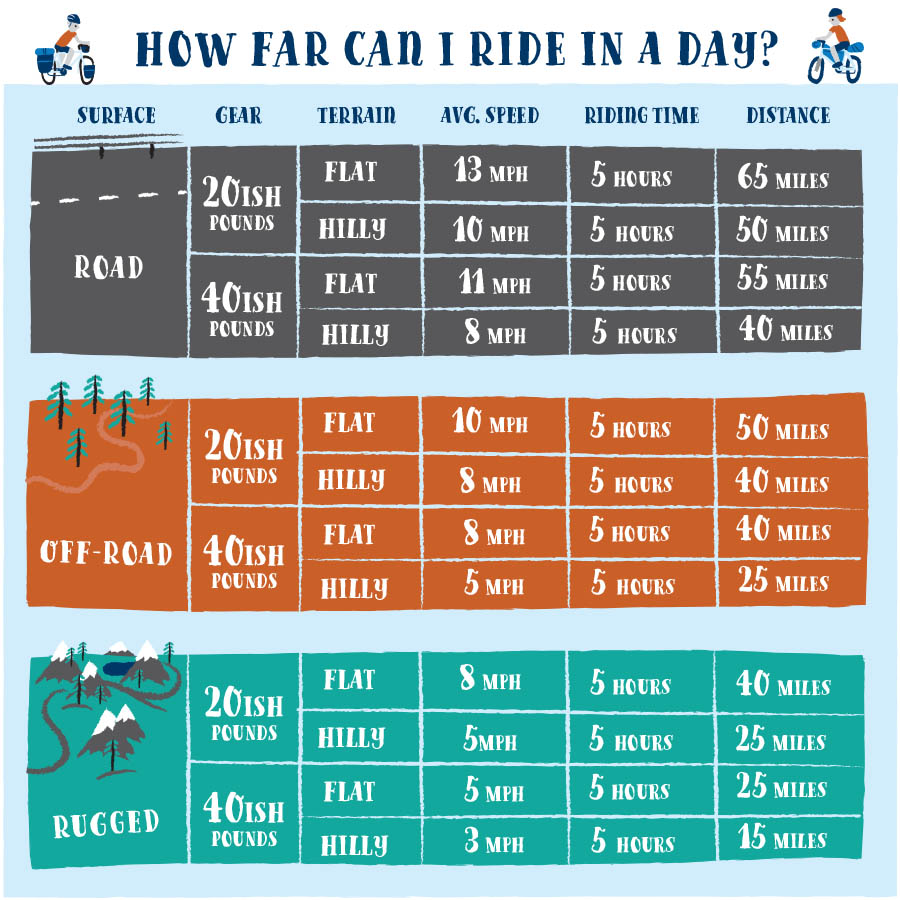
Experienced bicycle travelers can ride farther, but for most people, planning to exceed these averages has a tendency to increase the physical challenge and decrease enjoyment. We recommend that you plan for at least one rest day out of ten, and carry no more than 45 pounds of gear, and a lot less if you can. Always plan time in your day, and days off in your trip, for unexpected challenges and good opportunities.
What kind of bike should I use?
Many types of bicycles can be used for touring. Although some bikes are specifically designed for touring, most quality bicycles can be customized for touring use, with the exception of road racing bikes, as they emphasize weight savings and quick handling over durability and comfort. (Folks do it, but we don’t recommend it for reliability reasons.)
Important characteristics of an appropriate bike are durability, a comfortable riding position, and low gears for climbing hills. The ability to mount racks , fenders , and wide tires (32 mm or greater) is also a plus.
What to Look for in a Touring Bike
Experienced bicycle travelers have their preferences, but there is no single style of bicycle that is an overwhelming favorite. Ultimately, your choice is based on personal preference and the style of touring you want to do (paved roads vs. dirt roads and trails, amount of gear to carry, etc.).
How do I decide where to ride?
Besides the obvious—scenery, history, and any other personal interests you have—look for low-traffic routes and/or roads with good shoulders. Keep in mind that many of the places you’d like to see by bicycle, such as national parks, can be choked with traffic and undesirable for cycling.
Mountain bikers usually look for routes with little or no motorized traffic and as little pavement as possible. The biggest question they need to answer is usually: Can all of the route be ridden with a loaded bike or trailer?
Where and When to Go on Your Bicycle Tour
Many resources for finding bicycle-specific routes that emphasize safe roads and rideable trails can be found right here:
- Adventure Cycling’s Bicycle Route Network and touring maps
- State resources, including tourism agencies, state bicycle/pedestrian offices, advocacy groups, and local bike clubs.
- Local and regional cycling maps and guidebooks listed under their respective states and countries.
How do I carry my stuff?
The most common methods of carrying gear are panniers and trailers. Panniers are luggage that attaches to your bicycle on racks that sit over or next to the wheels. Ortlieb and Arkel are two top-quality brands. Quality racks are available to fit nearly every bicycle.
Trailers come in many varieties, usually with one or two wheels. Most are easy to attach and fit on almost any bicycle. The BOB Yak/Ibex and Burley Nomad are both excellent choices.
Panniers excel on paved-road riding and single-wheel trailers are at their best on rough, unpaved terrain, but both can work well for nearly all types of touring. Personal preference is the ultimate arbiter.
Where do I stay at night?
First decide if you want to camp (inexpensive, independent, closer to nature) or stay in hotels (comfortable, less gear to carry).
Top 10 Bicycle Camping Tips
Tourism agencies, chambers of commerce, convention and visitor’s associations, and many internet resources list information about motels, campgrounds, B&Bs, and other lodgings. Many maps and guides, including Adventure Cycling Bicycle Route Network maps, list local options.
Is it safe to travel around America alone?
Yes. Bicycle riders are typically perceived to be very non-threatening and are often treated warmly by strangers, especially during emergencies. The chances of something bad happening to you during a bicycle tour are likely to be no different than they are in your everyday life at home.
How much does bike touring cost?
The cheapest way to go is to camp and cook your own meals.
Assuming you have all the necessary gear before you leave, and you are touring in America, a budget of $35-$50 a day should be enough to pay for camping fees and groceries and still stash a bit away for unforeseen expenses like repairs or gear replacement. Going dirtbag-style, it’s possible to travel on $10/day or less.
7 Tips for Bicycle Touring on a Budget
For those with luxury in mind, well, the sky (and your bank account) is the limit. The beauty of bicycle touring is that it can be as comfortable or as adventurous as you want it to be.
This story has been updated and was originally published on December 22, 2015 .

Related Reading
The gear you need to get started bike touring, adventure cycling with a twig stove, is swimming good cross-training for cycling.
Route Planner

Mon: Closed Tue - Sat: 10:00am - 6:00pm Sun: 10:00am - 5:00pm
- Account Account
- Store Store
- Subtotal : $ 0.00 Checkout Cart
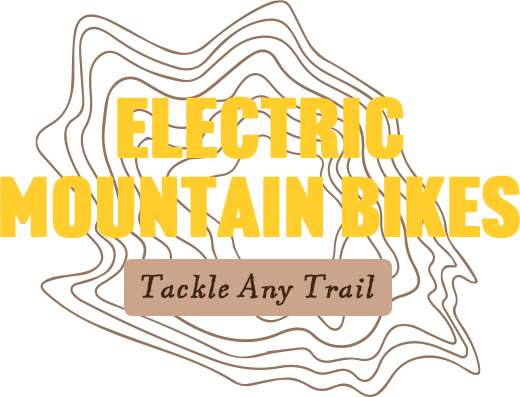
Bicycle Trip has been serving the Santa Cruz cycling community for over 50 Years
Independent and locally owned, the Bicycle Trip has enjoyed providing quality bicycle sales, service, repair, personalized bike fittings, and performance optimization in Santa Cruz since 1973! Take a deep dive into our story and history here .

Santa Cruz Sales!

Our E-Bike Selection
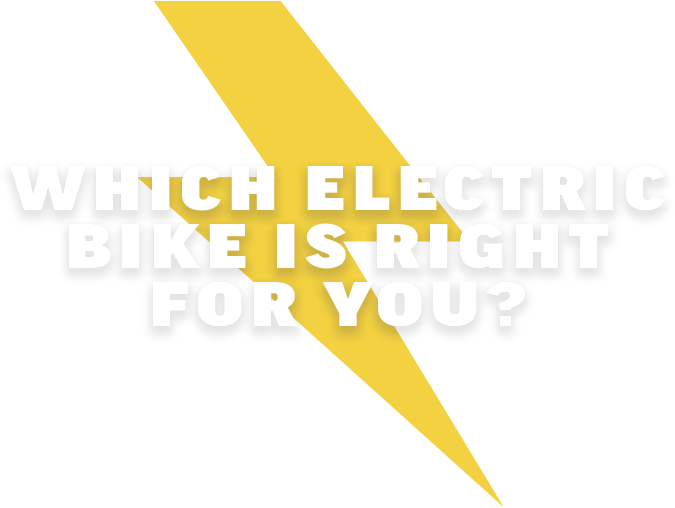
Santa Cruz Bikes

Giant and Liv
Giant mountain bike guide.
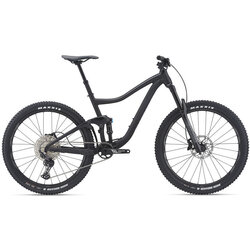
SHOP ONLINE | IN-STORE PICKUP | HOME DELIVERY
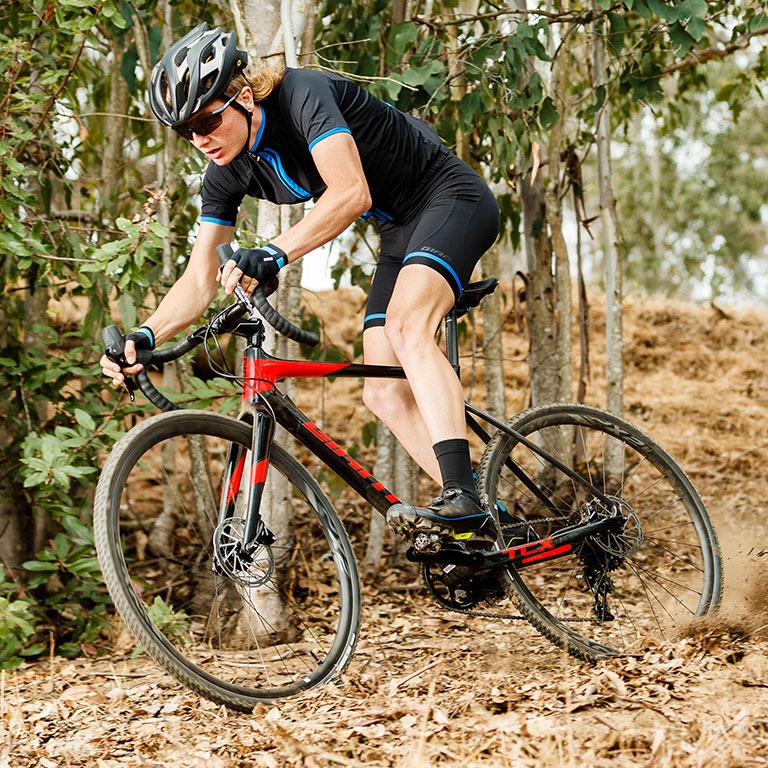
Our Bike Selection
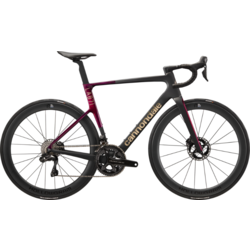
OUR SERVICES
Bike repair, professional bike fitting service, trade-in your bike.
Ride Now & Pay Later
No Interest Financing!
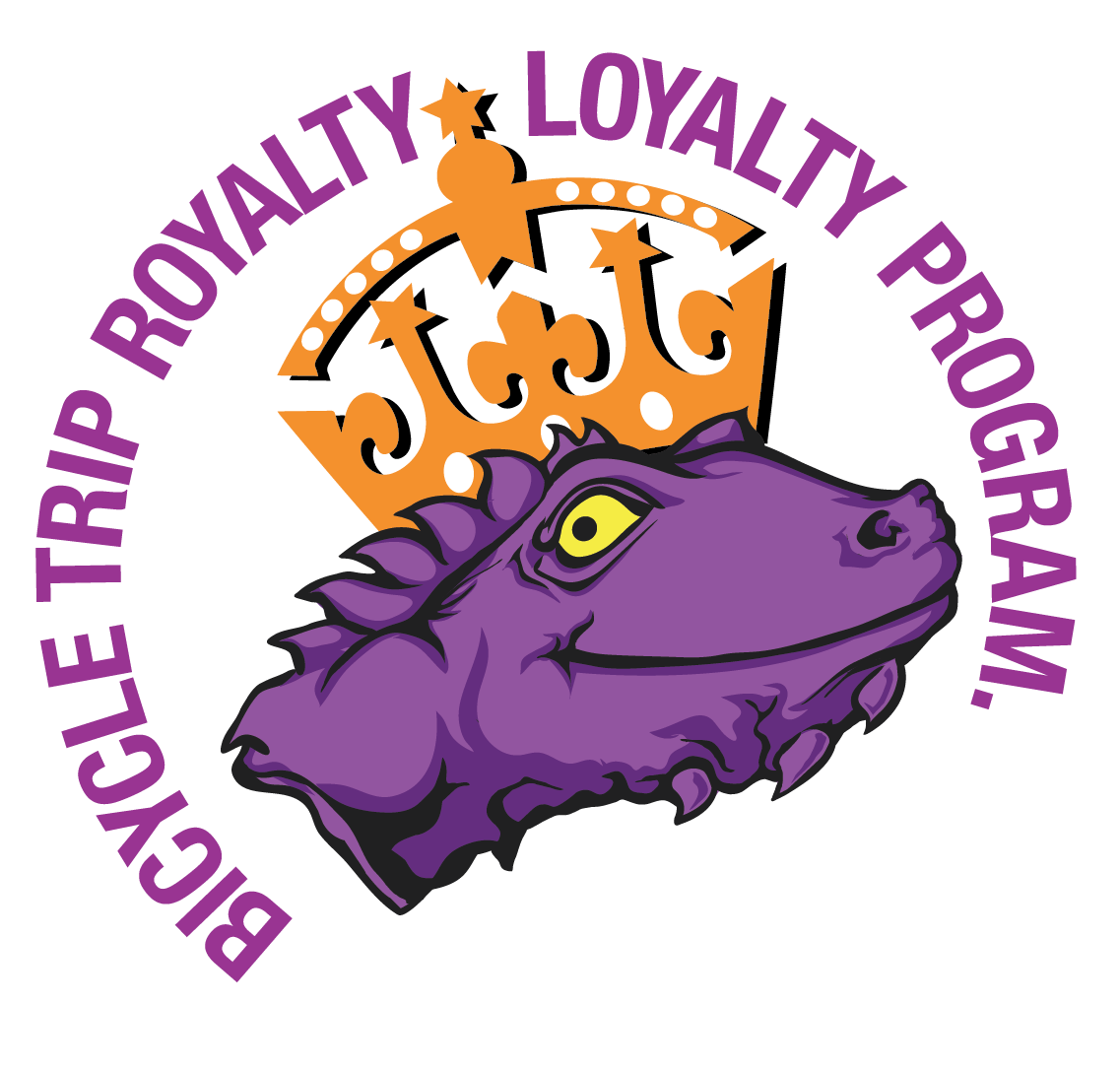
We are excited to introduce our customer loyalty program - the Bicycle Trip Royalty Club!
Get In Touch
We're here to answer all of your cycling-related questions. Stop by or give us a call today!
Plan your cycling tour with Bikemap
You want to get from A to B on your bike safely or plan your next adventure? We got you covered with routing that fits your needs - anywhere in the world!

Start planning now - it's free!
With Bikemap Web you can explore cycle paths worldwide using your favorite map. Choose a routing profile that suits your plans, fitness and bike type and then fine-tune the route until it's perfect.
5 reasons to try the Bikemap Route Planner
You are in good company.
Millions of users in our community have already planned their tours with Bikemap. Discover routes that you can use as a template and then tweak or extend.
Maps tailored for cyclists
Choose the type of map you need to find the best paths to go. The global heatmap helps you find the roads that are most popular among cyclists. Community reports and relevant points of interest give you additional information to consider while planning.
Find the perfect way
Search for places and add them to the list of waypoints. You can easily change or reorder them. Thanks to the various routing profiles, you'll find the best way to go along these places on your type of bike.
Inspect your route
While planning, you can always check distance, ascent, descent and the estimated time. The elevation curve gives you a live impression of the ups and downs along the way and easy tools to inspect them in detail.
Optimize the track
You can always change, add and remove way points also on the map to make sure the route leads you exactly as intended. After saving or publishing, you can change your route again at any time.
Planning is just the first step
Once you're done planning and ready for the ride, save the route and make sure to get the Bikemap App for turn-by-turn navigation.
SORT CONTENT BY LOCATION
CLICK TO DRILL DOWN BY COUNTRY/PROVINCE
Your browser is ancient! Upgrade to a different browser or install Google Chrome Frame to experience this site.
Inspiration
- Bikepacking 101
- Join/Support

- View Latest/All
- Bikepacking Videos
- Your Stories
- Rider's Lens
- Field Trips
Popular Tags
- #bikerafting
- #Tour-Divide
- #family-bikepacking
- #winter-bikepacking
- #1Q5V (1 Question 5 Voices)
Gear/Reviews
- Bikepacking Bags
- Camping Gear
- Accessories
- #Editors-Dozen (Our Favorite Gear)
- #Gear-of-the-Year
- #MYOBG (DIY)
- #Decade-in-Review (Best of All Time)
The Gear Index
Latest indexes.
- Mini Panniers
- Saddlebags & Top Openers
- Cargo Cages & Anything Bags
- Gravel Bars
- Drop Bar 29ers
Bikepacking Bikes
- Rigid & Plus Bikes
- Drop-bar & Gravel
- Full Suspension
Rigs & Roundups
- Rider & Rig
- Race/Event Rig Roundups
- Worthy Builds
- Handbuilt Bikes
- #29+ (29-plus)
- #vintage-mountain-bikes
- #cargo-bikes
- Readers' Rigs (Dispatch)
- New Bikes (Dispatch)
Plan Your Trip
- Bikepacking Guides
- Bikepacking Food
- Gear & Pack Lists
- Bike Photography
Essential Reading
- Leave No Trace (for Bikepackers)
- Guide To Bikepacking Bags
- Bikepacking Gear That Lasts
- #Bikepacking-Awards
- Power Of An Overnighter
- Advice For New Bikepackers
- Our Favorite Bikepacking Routes
-
Where to Begin
We have over 300 original and curated bikepacking routes in our global network spanning nearly 50 countries.

Start at our worldwide routes map to dig into our detailed guides with GPS maps and inspiring photography.
By Location
- The United States
- Latin America
- Middle East
By Length (days)
- Overnighters & S24O
- Weekend Routes (2-4)
- Week-long Routes (5-10)
- Odyssey Routes (11-30)
- "Freakouts" (31+)
Local Overnighters
The Local Overnighters Project is a unified effort to document and map one-night bikepacking routes all over the world—by locals, in their own backyards.
The Bikepacking Journal is our biannual printed publication. Each issue features a collection of inspiring writing and beautiful photography. Find details on the three most recent issues below, join the Bikepacking Collective to get it in the mail (anywhere in the world), or click here to find a collection of selected stories in digital format.

The special edition 10th issue of The Bikepacking Journal is one you won’t want to miss! It features 25% more pages with extra stories, bonus art and maps, and much more...

Issue 09 takes readers on trips through time—one to the early days of bicycles—and offers several reminders to be grateful for supportive friends and family, and strangers we meet along the way...

For Issue 08, we invited several contributors to return and pick up where earlier trips and ideas left off and also feature a handful of first-timers whose perspectives we’ve long been eager to share...

Cycling Kindness: Seven Years Bikepacking Around the World with Indiana Schulz
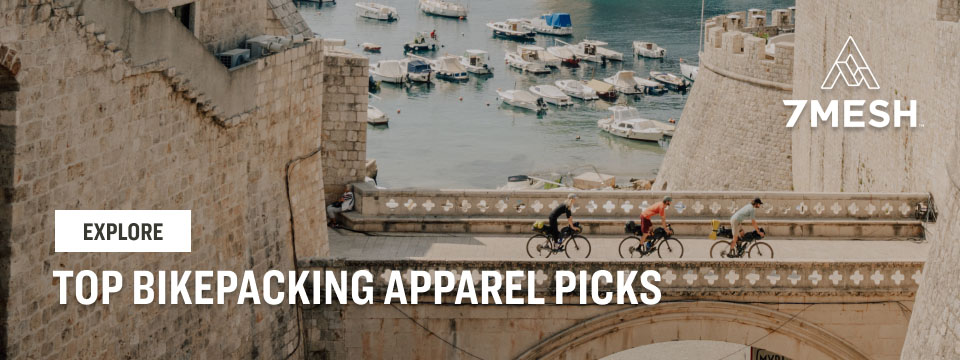
Next week, Indiana Schulz is starting an ambitious seven-year bikepacking trip around the world. Learn more about his Cycling Kindness project, find details on the route he’ll be following, and take a deep dive into his Pinion-equipped Solace Cycles OM-2P Ti build and complete gear list here…
Words and photos by Indiana Schulz
As I rise from my morning meditation, I look around. I see two large bike boxes, four panniers, a duffle bag, and the bike that will take me around the globe over the next seven years. A heartfelt smile lives on my face. I feel lighter, almost nostalgic, as if I’m in a dream. It’s been a massive shift for me to exist with no keys in my pocket, no job to show up for, no car to drive, and no home to call my own.
My birth name is Ry Schulz, but I’m mostly known by my adventure name, Indiana Schulz. I’m 40 years old, and this is my midlife awakening. Ever since my brother Flynn passed away in 2013, I have been pursuing seemingly endless athletic adventures as a means of keeping my connection with him and dealing with grief. It wasn’t until last June, when I took a hero dose of psilocybin, that I was able to let go of that grief. It felt like 10 years of loving therapy wrapped into a five-hour, one-on-one session with the cosmos and the souls of my late brother and father.
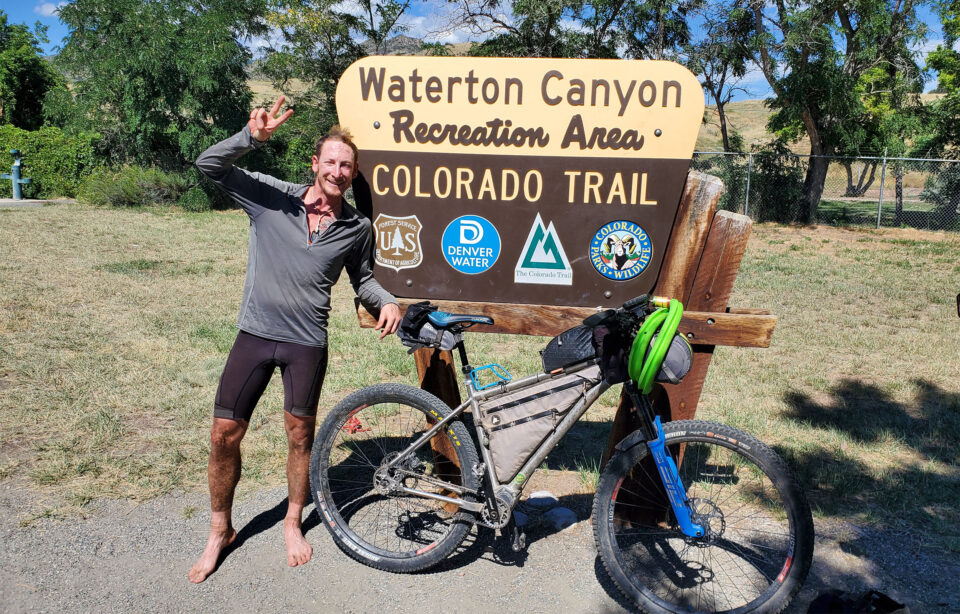
When that energy shifted, I knew without a doubt that I no longer needed to race to feel human again. The only problem was that one week later, I would be in Banff to start my bikepacking schedule for the summer. This included the Tour Divide, Colorado Trail, Salida to the Sea, and Arizona Trail Race. How I ever made it through those events will forever be a mystery to me.
What is Cycling Kindness?
Cycling Kindness was born out of a desire to give back to the Earth and serve my fellow humans. It is centered around community, connection, and being present. I will share and document the journey on Cycling Kindness’s social platforms. This is not, and never will be, about money. I believe that once money gets involved, my intentions would shift. I don’t want to make content that is product-driven. I want to share the beauty and magic of the world with others, especially those who may never have the means to travel so freely.
If you’ve ever experienced kindness from a stranger during a bikepacking event, then you are familiar with Cycling Kindness. You haven’t showered for days, you look pretty unkempt, and then a woman with a small child comes up and offers you a slice of pizza or a place to stay for the night. For me, this is the single most challenging part of ultra-endurance racing. It isn’t easy to not be able to accept those simple acts of kindness because you’re in a race. Or you meet a guy who sees your rig and wants to buy you breakfast and tell you how he rode his bike across America in the 1970s in jean shorts with only $100 to his name.

I yearn for those types of interactions, but it’s difficult to cultivate and give them the proper attention in a race setting. Cycling Kindness is about slowing down and forging relationships with people around the world. It’s about breaking bread with strangers, hearing their stories, and helping them. I want to bring joy into people’s lives. The best feeling in the world when you are alone or down on your luck is when you receive kindness from a stranger. The only equivalent feeling to that joy is when you are the one providing the act of kindness.
I also desire to learn more about agriculture and farming in different climates. I’ll be using WWOOFing as a resource to extend my stays in different villages and towns along the way. I want to be more than just a visitor in these communities. I want to immerse myself in their cultures and learn about their history. I’m hopeful that I will learn how to build Earth Homes along the way, too.
Cycling Kindness is also a means to connect with other riders from around the world. Consider this an open invitation to join me on the journey anywhere in the world. I’m already in talks with people who want to join me on the Baja Divide, the Nicoya Peninsula in Costa Rica, and several locations in South America. Feel free to shoot me a message on the Cycling Kindness Instagram or Facebook.

The Journey and The Route
The journey begins on May 15th in Deadhorse, Alaska. From there, I will head south, visiting friends in Fairbanks, Anchorage, and Seward. I will also have my first WWOOFing assignment on the island of Halibut Cove, just off the coast of Homer, Alaska. The Alaskan portion of the trip is around 2,500 miles.
The route will be as off-road as I can make it. I have no desire to ride paved roads unless necessary. After Alaska, I will make my way to Jasper National Park and take the GDMBR (Great Divide Mountain Bike Route) into Montana. Then, I’ll hop on the Western Wildlands Route. Near the Mexico border, I’ll head West to the start of the Baja Divide. After that, I’m unsure where the route will lead me. The unknown is a huge draw, pulling at my curiosity and begging me to go deeper.
I am planning on giving myself seven years for this journey. It may take longer. I will eventually run out of money. I will relish the adventure and stay present. Every stranger is just a friend I haven’t met yet.
How to Follow
Scott Morris of Trackleaders was kind enough to offer me a tracker link for the journey. Zoleo was kind enough to give me a discount on a device. I’ll carry camera gear, a drone, and a GoPro to document the journey. Feel free to follow Cycling Kindness on Instagram, Facebook, and YouTube for all the latest videos and media.
Bike, Bags, and Gear
- Bike: ‘ilo’, which means ‘joy’ in Finnish
- Frame: Solace Cycles OM-2P Ti
- Drivetrain: Pinion C1.12 with Gates Carbon CDX Belt
- Fork: Salsa Cycles Firestarter Carbon Boost
- Handlebars: Velo Orange Seine Bars
- Seatpost: Lynskey Ti
- Saddle: Chromag Trailmaster DT
- Grips: Ergon GP1 BioKork Gripshift
- Brakes: Shimano SLX 4 Piston
- Rotors: Shimano XT 180mm
- Wheels: DT Swiss EX511 with 350 hubs (drilled for Schrader Valves)
- Tires: Vittoria Mezcal 29 x 2.6″ (tubeless)
- Light: Sinewave Cycles Beacon v2
- GPS: Garmin Etrex 30
- Tracker: Zoleo
- Frame Bag: Shaka Packs X-PAC Cotton Duck
- Top Tube Bag: JPaks Footlong EXT
- Handelbar Bags: JPaks RukSak x2
- Front Handlebar Bag: Revelate Designs Egress Pocket
- Front Panniers: Ortlieb Gravel 12.5L Panniers
- Rear Panniers: Arkel Orca 22.5L Panniers
- Front Duffel Bag: Gill 20L Waterproof
- Food Canister: Bear Vault 7L
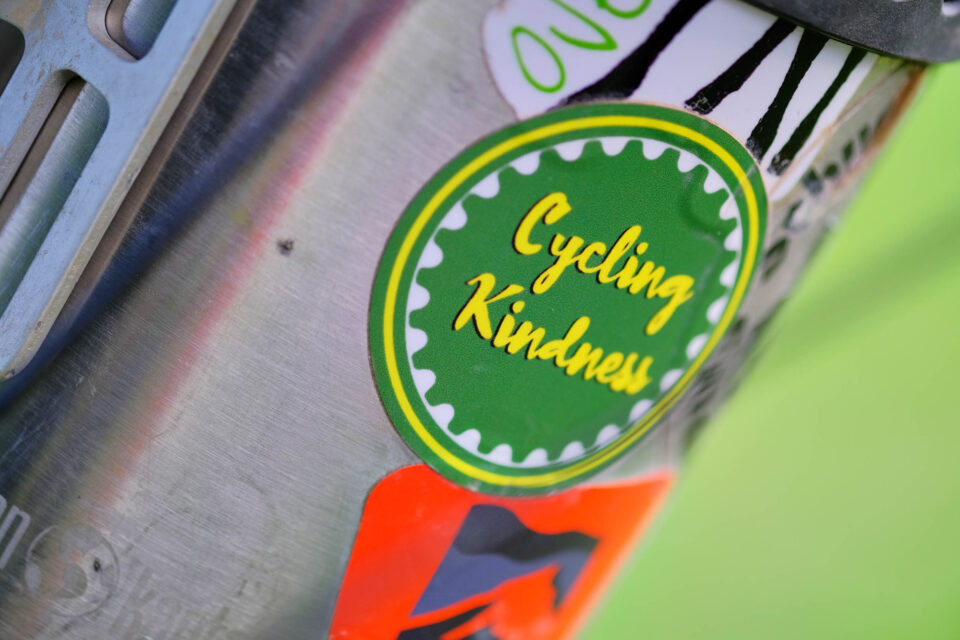
Racks & Mounts
- Pannier Racks: Old Man Mountain Divide with Thru-Axle Mounts
- Handlebar Extenders: Generic Amazon Brand
- Water Bottle Cages: Widefoot
- Water Capacity: 8L+
- Tent: Hilleberg Nallo 2
- Sleeping Bag: Western Mountaineering TerraLite 25
- Sleeping Pads: Sea to Summit Eggshell size small
- Pillow: Exped
Electronics
- Cache Batteries: (2) Belkin 20,000 mAh
- Camera: Fuji Film XT-4 with 3 lenses
- Drone: DJI Mini Pro 3
- Action Camera: GoPro Hero 12
- Computer: Macbook Pro
Final Thoughts and Thanks
It’s absolutely terrifying to be so vulnerable out there. But without vulnerability, there is no connection. I can live with failure, but I can’t live with the thought of not taking this opportunity, waking up at the age of 55, and saying, “what if?” The biggest challenge for me will be seeing the world with an open heart and mind. I cannot let preconceived notions distract me from all of the opportunities that lie ahead.
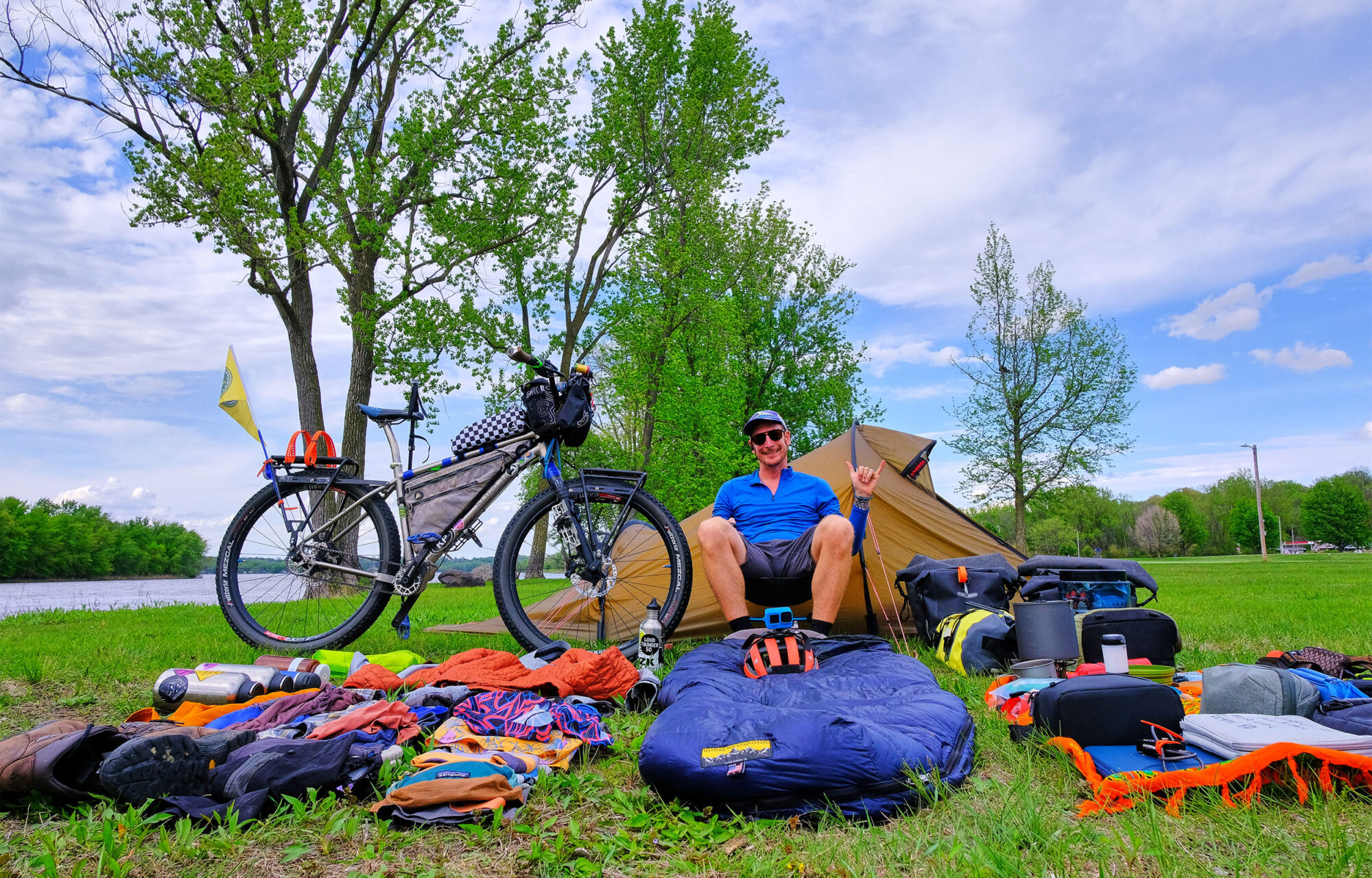
There are several people and organizations that deserve recognition for helping me get here. I am grateful to BIKEPACKING.com for their continued support of the world of bikepacking. Most of my gear was discovered by reading their articles and reviews. Many thanks to Jeff from Solace Cycles. He’s been incredibly supportive of my journey and has helped me with questions and sourcing parts several times. Thanks to Joe at JPaks. I only just met him at the start of the AZTR in October. He is an amazing person, and his bags are truly some of my favorites. Shoutout to the entire community of bikepackers. I met many incredible people during my seven years of racing and look forward to meeting some of them out in the wild. Thanks to my friends Kirk and Brian. And lastly, thank you to my mother, Pammy J. She’s been a constant source of inspiration as she has dealt with her own adversity over the last 10 years. I wouldn’t be here if it weren’t for her.
Further Reading
Make sure to dig into these related articles for more info...
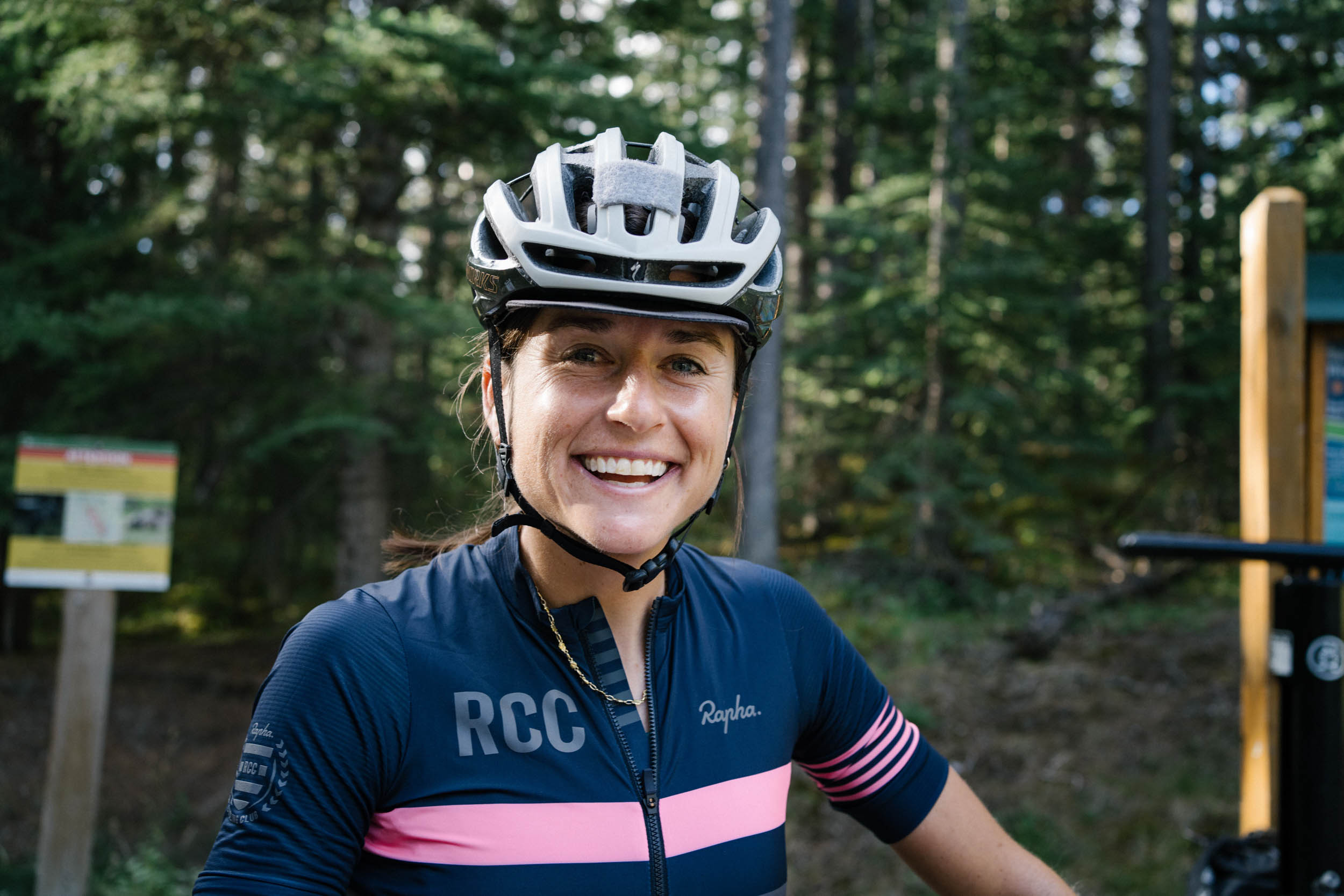
Lael Chases Fastest Around the World Cycling Record
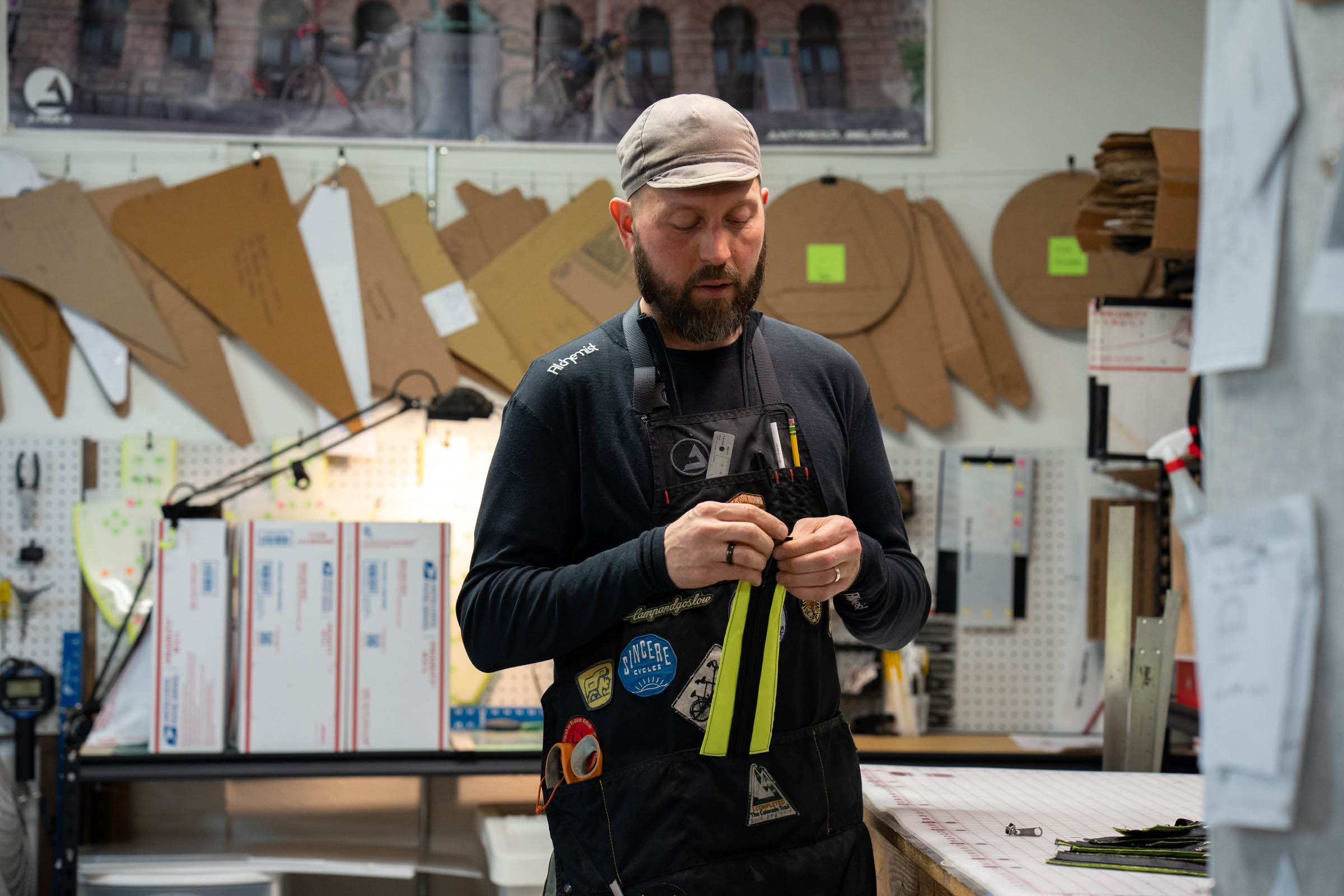
Inside JPaks – A Conversation with Joe Tonsager (Video)
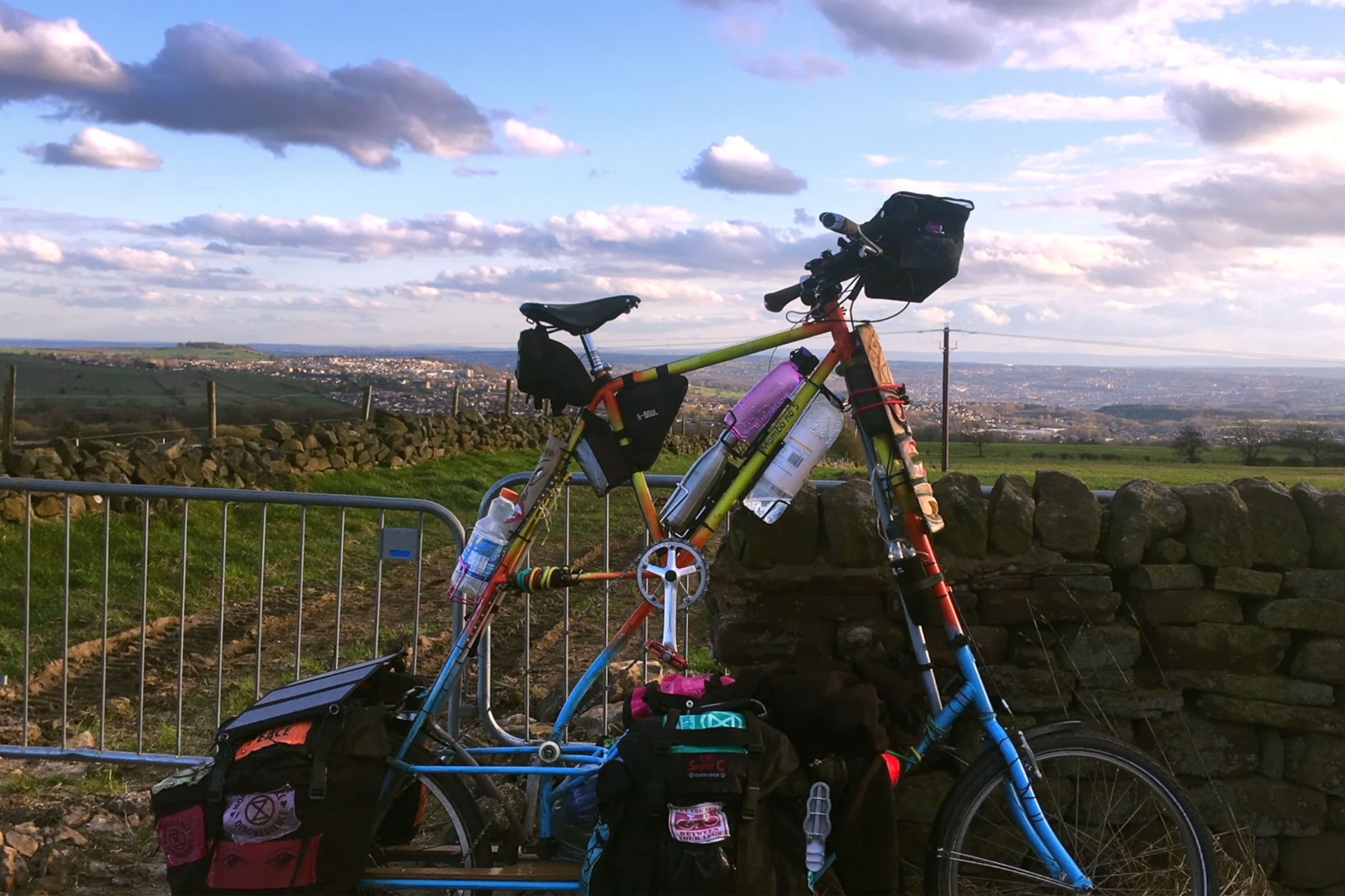
Cycling Around The World On a Tallbike: Episode 1 (Video)
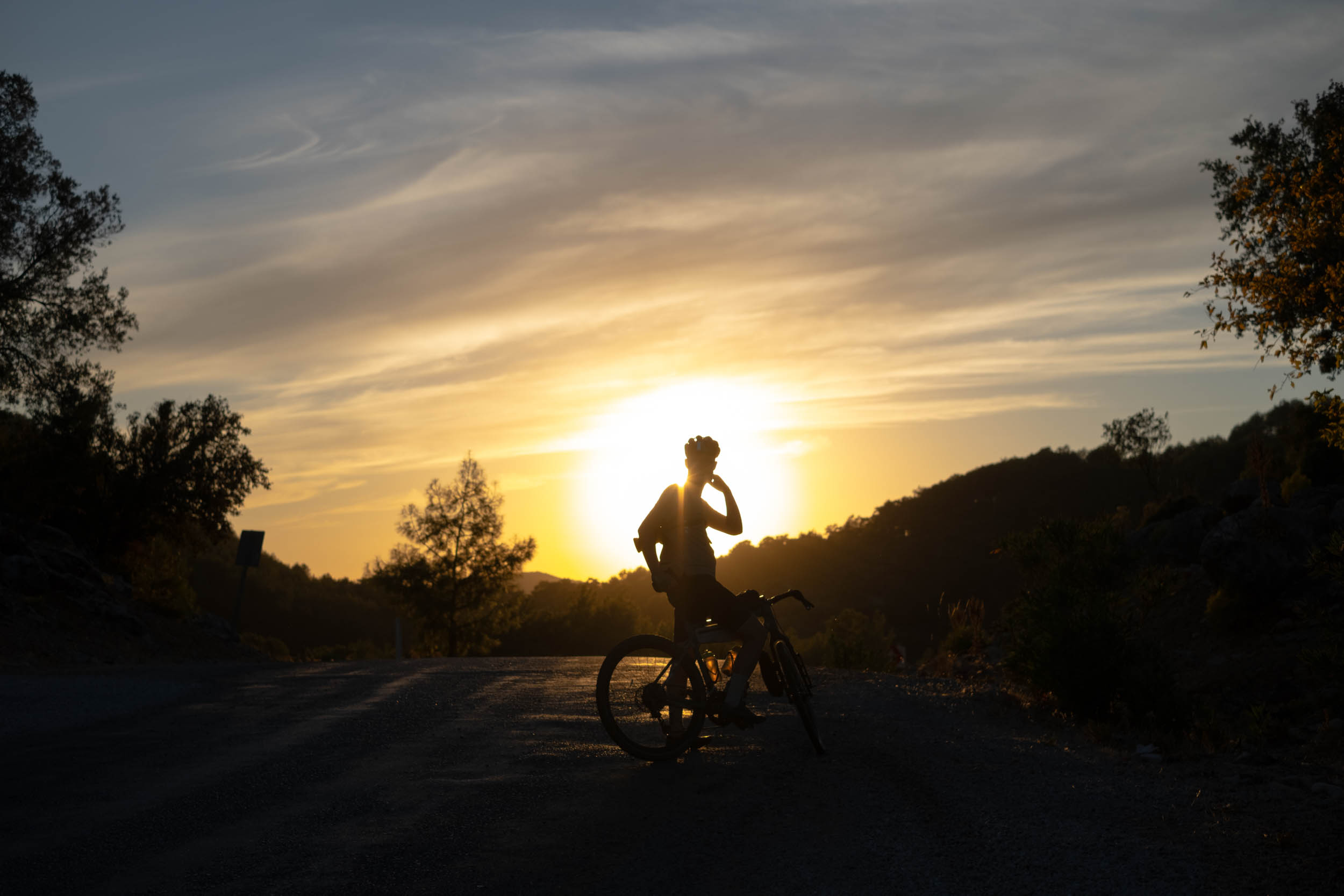
Solo Bikepacking Around the World: Mind Mapping (Part 1)

A DIY Approach to Surfing Baja’s Cape Loop

Rigs of the 2023 Tour Divide (Part 1): Drop-Bar Bikes
Filed in (categories & tags), bikepacking gear lists.
Please keep the conversation civil, constructive, and inclusive, or your comment will be removed.
Rad Companies that Support Bikepacking

You need to be logged in to use these features. Click here to login , or start an account if you’re not yet a member of the Bikepacking Collective…

Can You Take a Bicycle on a Plane? Your Ultimate Guide to Traveling with Your Bike!
- Yes, you can take a bicycle on a plane, but specific policies vary by airline
- Pack your bike in a hard-shell case or padded bag to prevent damage
- Bicycles may be subject to additional fees and weight restrictions
- Always check your airline's policies and prepare in advance
- Taking your bike on a plane opens up a world of adventure and exploration
You could check out next: Can you take a camping lantern on a plane?
Navigating Airline Bicycle Policies
With over 1.5 million bicycles transported by airlines in 2019, according to the U.S. Department of Transportation, it's clear that flying with your bike is a popular choice for many adventurers. However, policies can vary greatly between airlines, so it's essential to research and plan in advance.
Packing Your Bike: Hard-shell Case or Padded Bag?
No matter which airline you choose, most require that bicycles be packed in a hard-shell case or padded bike bag to prevent damage during transport. As Bicycling Magazine puts it, "Traveling with a bike can be a hassle, but it's worth it to have your own wheels when you arrive at your destination." Don't skimp on protection – invest in a quality case or bag to keep your bicycle safe and secure.
Fees and Weight Restrictions
While it is possible to take your bike on a plane, be prepared to pay additional fees and adhere to weight restrictions. These can vary depending on the airline, so make sure to check their specific policies and budget accordingly.
Unlocking a World of Adventure
As the Adventure Cycling Association notes, "Taking your bike with you on a plane can be a great way to explore new places and experience different terrain." With your bicycle in tow, you can conquer new trails , navigate bustling city streets, or simply enjoy a leisurely ride through picturesque countryside. The possibilities are endless!
Flora's Secret Insider Tips
As a seasoned traveler and cyclist, Flora Goodwin has gathered some insider tips to make your bicycle-plane journey a breeze:
Contact Your Airline in Advance
Get in touch with your airline well before your trip to confirm their specific bicycle policies, fees, and weight restrictions. This will help you avoid any surprises at the airport and ensure a smooth check-in process.
Arrive Early at the Airport
Give yourself plenty of time to check in your bike, as some airlines may require additional processing. Arriving early can help minimize stress and make sure you're prepared for any unexpected issues.
Learn How to Disassemble and Reassemble Your Bike
You'll likely need to disassemble your bike to fit it into a case or bag . Familiarize yourself with this process before your trip, and don't forget to bring any necessary tools with you. When you arrive at your destination, you'll be ready to reassemble your bike and hit the road !
Before packing your bike for air travel, you'll need to disassemble certain parts to fit it into a case or bag. This process can vary depending on your bike's make and model, so it's crucial to familiarize yourself with these steps well before your trip. Here are some general guidelines to help you get started:
- Remove the pedals: Use a pedal wrench to unscrew the pedals from the crank arms. Keep in mind that the left pedal has a reverse thread, so turn it clockwise to remove it, while the right pedal is removed counterclockwise.
- Take off the wheels: Release the quick-release skewers or thru-axles, and then carefully remove the wheels from the frame. Don't forget to deflate the tires slightly, as pressure changes during the flight can cause them to expand.
- Detach the handlebars: Use an Allen wrench to loosen the stem bolts and remove the handlebars from the stem. You can leave the brake and gear cables attached, but be cautious not to damage them during packing.
- Lower the seat: Loosen the seat post clamp and lower the seat to its minimum height. This will help your bike fit more easily into the case or bag.
- Protect the frame and components: Use foam padding, bubble wrap, or other protective materials to cover the frame and any exposed components, such as the rear derailleur, to prevent damage during transit.
When you arrive at your destination, you'll need to reassemble your bike. Carefully unpack it, and reverse the disassembly steps to put it back together. Check all bolts and connections to ensure they're secure, and inflate your tires to the appropriate pressure. Before you set off on your adventure, take a quick test ride to make sure everything is functioning properly.
You might also like: Can I bring a curling iron on a plane?
Do all airlines allow bicycles on planes?
Most airlines do allow bicycles on planes, but their specific policies, fees, and restrictions can vary. It's essential to research and contact your airline in advance to confirm their rules.
What's the best way to pack my bike for a flight?
Invest in a hard-shell case or padded bike bag to protect your bicycle during transport. Make sure to disassemble your bike as necessary to fit it into the case or bag securely.
Are there any additional fees for taking a bike on a plane?
Yes, most airlines charge additional fees for transporting bicycles. These fees and any applicable weight restrictions can vary by airline, so make sure to check their specific policies.
How should I prepare for taking my bike on a plane?
Contact your airline in advance, invest in a quality bike case or bag, learn how to disassemble and reassemble your bike, and arrive early at the airport to ensure a smooth experience.
What are the benefits of traveling with my bike?
Traveling with your bike allows you to explore new destinations and terrains, navigate unfamiliar cities, and enjoy the freedom and adventure of having your own wheels wherever you go.
So, can you take a bicycle on a plane? Absolutely! With proper planning, packing, and a spirit of adventure, you can bring your bike along for the ride and explore your destination on two wheels. Don't let logistics hold you back – take to the skies and let your bicycle be your ticket to new adventures.
Also check out: Flying with musical instruments
- U.S. Department of Transportation:
- Bicycling Magazine:
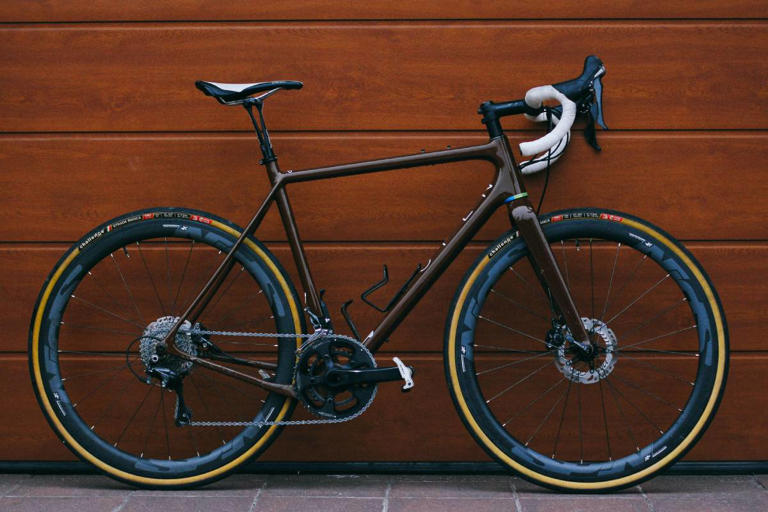
- Today's news
- Reviews and deals
- Climate change
- 2024 election
- Fall allergies
- Health news
- Mental health
- Sexual health
- Family health
- So mini ways
- Unapologetically
- Buying guides
Entertainment
- How to Watch
- My watchlist
- Stock market
- Biden economy
- Personal finance
- Stocks: most active
- Stocks: gainers
- Stocks: losers
- Trending tickers
- World indices
- US Treasury bonds
- Top mutual funds
- Highest open interest
- Highest implied volatility
- Currency converter
- Basic materials
- Communication services
- Consumer cyclical
- Consumer defensive
- Financial services
- Industrials
- Real estate
- Mutual funds
- Credit cards
- Balance transfer cards
- Cash back cards
- Rewards cards
- Travel cards
- Online checking
- High-yield savings
- Money market
- Home equity loan
- Personal loans
- Student loans
- Options pit
- Fantasy football
- Pro Pick 'Em
- College Pick 'Em
- Fantasy baseball
- Fantasy hockey
- Fantasy basketball
- Download the app
- Daily fantasy
- Scores and schedules
- GameChannel
- World Baseball Classic
- Premier League
- CONCACAF League
- Champions League
- Motorsports
- Horse racing
- Newsletters
New on Yahoo
- Privacy Dashboard
The 25 worst things to take on a bikepacking trip – advice from an expert
Bikepacking can be wonderfully liberating. Travelling by bicycle, under your own pedalling steam and carrying only the kit you will need for the trip allows you to explore far and wide. But if you take the wrong things with you on a bikepacking adventure, the journey might not be so enjoyable. Here we list xxx of the worst things to take on a bikepacking trip.
1. The wrong bike
A mountain bike is fun when used on tracks but not great for lots of smooth tarmac cycling. Likewise, a road bike with skinny tyres is going to be the worst thing to ride on rough tracks.
A gravel bike could be the perfect compromise but it’s a good idea to asses the routes before you set off and choose your bike accordingly. Maybe the perfect choice will be an e-bike .
2. Rattling bags
Whether it is panniers or bikepacking bags , there is nothing worse than bags that move about and rattle irritatingly while cycling. Test your bags on your bike and while cycling on rough surfaces before you set off to check they stay secure and in place.
3. Oversized bikepacking bags
Another bad idea is bikepacking bags that are too big in the first place, or over-packed. If this happens you might end up with the bags rubbing against the skin of your legs or being far too bulky on the handlebars.
Again, the best thing you can do is check your bag set up before you go bikepacking. The worst thing you can do is set off and find your bike and bags really irritate you.
4. Too much kit
Whether you pack your kit in more traditional panniers or bikepacks , you really don’t want to be laden down. The more you pack, the heavier the packs and bike will become and the harder it will be to pedal your bike.
This is especially the case if you will be bikepacking on rough tracks or where it’s hilly.
5. Too little kit
Safety and warmth should be major considerations and reducing your clothing and kit to so little that you end up cold, wet or uncomfortable is not going to be the recipe for success.
For example, it would be foolish to go bikepacking without adequate warm layers or a waterproof jacket.
One pair of cycling shorts might suffice but hygiene is also important to consider. It’s not just an issue of odour, but wearing the same cycling shorts day after day and without washing them can lead to a range of problems for cyclists .
6. The wrong shorts
You should make sure you know what to wear for bikepacking from head to foot but there are also some common errors that some cyclists make.
The chances are you will be cycling many miles each day and over multiple days, so it’s vital you have a comfortable seat. Wearing shorts without padding, shorts with seams, or shorts that are too large so they move about will most likely end up causing rubs and sores.
Choose neatly fitting shorts with adequate padding or loose shorts than have a padded insert .
7. A new saddle
Setting of for a bikeapacking trip with a new saddle or seat is it likely to be a disaster. You need to make sure the seat is comfortable and riding the bike for at least a few outings before going on your bikepacking trip will ensure it is worn in a little.
8. Ladies – a saddle without a hole
For women, in particular, it’s important the bike and seat is comfortable. Many females find that a saddle with a hole cut away offers the best comfort. We won’t go into the details but, suffice to say, it’s a tried-and-tested tip.
9. Your warmest sweater
The best way to pack for a bikepacking trip is to take several thinner layers of clothing, such as tees, baselayers and jerseys. This means you can take off and put on layers as conditions dictate.
Taking one thick layer like a sweater or jacket doesn't give enough versatility. You will either end up too hot or too cold.
10. The wrong waterproof jacket
Lightweight and breathable are key to choosing the right waterproof jacket for bikepacking. Some jackets, such as those designed for hiking, are heavier and bulky and will make you sweat if you wear them on a bike, even in the rain. Bike-specific clothing is the best choice.
11. Winter gear when it’s summer
...or summer gear when it's winter. Choose the right clothing to suit the conditions otherwise you will end up too hot and sweaty or too cold and miserable.
12. Synthetic fabrics
The best way to reduce odor and to stay cool when its hot – and warm when it’s cold – is to choose natural wool garments, such a base layers made of merino wool . While a lot of cycling kit is designed with synthetic fabrics for fit and comfort, it will end up whiffy after even just a day or two of cycling in hot and sweaty weather.
13. A backpack
While a small hydration pack could be a good idea for bikepacking, adding a heavier pack to your back will most likely lead to sweat and skin abrasions. Use panniers or dedicated bikepacking bags instead, and keep the weight off your body.
14. A useless pump
How often do you check that your bike pump is working? Perhaps you own a pump that you know is a bit useless but you carry it anyway? Make sure you have a small but effective pump with you on a bikepacking trip, because you will absolutely need it to work if you get a puncture.
15. Only one spare inner tube
Bikepacking, especially if you are journeying into remote places, could be a nightmare if you get a puncture and can’t fix it. One common error is to pack only one spare inner tube or one spare tube patch.
What so often happens is that when you have suffered a puncture, another one comes along after that and then you have used your one tube or patch.
16. Multiple pairs of shoes
Really, all you need is a pair of shoes for cycling and lightweight footwear for when you are not on the bike. If you will be bikepacking in warm conditions, you might only need a pair of flip-flops or sliders as your extra pair. Very lightweight running footwear will do the job as well.
Another poor choice if you plan to wear cycling shoes most of the time is the style of clip-in shoes without a recessed cleat. Try to choose cycling shoes that have the cleat recessed into the sole. This mans you will be able to more easily walk in your cycling shoes when you stop at villages and towns.
17. Heavy cooking kit (and the kitchen sink)
It depends where you are planning to ride on your bikepacking trip, but some of the worst equipment to pack is bulky and heavy cooking kit. The wrong equipment will weigh you down and create unnecessary bulk in bikepacking bags or panniers.
It could be that choose instead to stop for food at shops, cafes and pubs rather than taking any cooking equipment. Or, you could decide to cater only for your breakfasts by carrying the smallest camping stove you can, and a camping coffee maker like an Aeropress.
The less you take, the easier it will be to pedal your bike.
18. Cans of food
If you plan to camp and cook your own food, don't take heavy items like cans. You will regret the weight of them the minute you pedal your first hill. Instead, choose lightweight camping specific food. We have plenty of ideas for lightweight bikepacking food , or you can try freeze-dried meals .
19. Glass or ceramics
Choose plastic or metal for plates, cups and bottles. The worst items are made of glass or ceramic and they are heavy and prone to breaking in the great outdoors.
20. A big tent
If it’s just you on a bikepacking trip, pack a bivy sack on a one-person tent only. Remember that lightweight is key to packing for a bikepacking trip. If there will be two of you, then split the two-person tent in half and each carry part if it.
Even if there are three or four of you, taking a larger tent is likely to be the wrong choice. The bulk of a tent is the material and a larger tent will be very hard to pack in panniers or a bikepacking bag.
21. The wrong sleeping bag
A sleeping bag that weighs too little might feel like the best item to pack in your bikepacking bags but you won’t be happy when you're shivering with cold in the middle of the night. Likewise, a sleeping bag that is winter-warm but makes you want to throw it off you in the middle of a summer’s night is also a bad idea.
Choose you sleeping bag to suit the conditions and go for the lightest you can but still with enough warmth.
22. A throw-away bike lock
If you are going to be leaving your bike out of sight, you want a bike lock that will deter theft and not a flimsy lock that will be easy to break.
23. An old or dented bike helmet
If the worst happens and you fall off your bicycle, you will want a bike helmet that keeps your skull safe. The materials in bike helmets become worn with age and use, so make sure you have an up-to-date bike helmet. If you're in the UK, look for one that includes a kitemark so you know it complies with British or European standards of manufacture.
24. A heavy book
A book to read is a lovely thing but it’s not ideal for carrying when bikepacking. Instead, try an audio book on your phone and listen with ear pods. Weight matters!
25. A Bluetooth speaker
Even if you usually enjoy listing to music, there is no need for a music speaker. Take a pair of bone conduction headphones instead. Headphones are lighter to carry, and no one else wants to share your music. Opting for bone conduction means you'll still be able to hear sounds around you like other cyclists, pedestrians, and traffic, which will help keep you safe.
Read other useful tips for bikepacking success and bikepacking essentials .
Recommended Stories
Nba playoffs: nikola jokić tortures timberwolves as nuggets win pivotal game 5.
Nikola Jokic scored 40 and the Nuggets have a 3-2 lead.
OpenAI co-founder and Chief Scientist Ilya Sutskever is leaving the company
Last year, Ilya Sutskever admitted that he regretted the role he played in the sudden dismissal of OpenAI CEO Sam Altman and President Greg Brockman.
Food VC Peakbridge has new $187M fund to transform future of food, like lab-made cocoa
Climate change is not just about removing carbon from the atmosphere or making more fuel efficient cars. It’s also about the food we eat. It recently closed on $187 million in capital commitments for its PeakBridge Growth Fund II to invest in innovation in those areas.
Astros pitcher Ronel Blanco ejected after foreign substance check early in win over A's
Ronel Blanco, who threw a no-hitter earlier this year, is now likely facing a 10-game suspension.
Google Project Astra hands-on: Full of potential, but it’s going to be a while
At Google I/O 2024, Google gave us a glimpse at what next-gen AI could do, but after trying it out, it's clear it won't arrive anytime soon.
Everything announced at Google I/O 2024 including Gemini AI, Project Astra, Android 15 and more
Here's all the big news that Google announced at I/O 2024 in a single place.
Blue Origin to resume crewed New Shepard launches on May 19
Blue Origin’s New Shepard rocket will take a crew to suborbital space for the first time in nearly two years later this month, the company announced on Tuesday. The NS-25 mission will launch from Blue’s launch site in West Texas on May 19. The launch window opens at 8:30 a.m. The six-person crew includes Ed Dwight, the first Black astronaut candidate (but for whom this would be the first visit to space), along with investor Mason Angel, who founded the space- and defense-focused Industrious Ventures.
PGA Championship: After 'magical carpet ride' at Oak Hill, Michael Block ready to run it back at Valhalla
Club pro Michael Block quickly became the fan favorite at last year's PGA Championship, where he finished T15.
We asked a flight attendant to share her travel must-haves — they're all $25 or less
You can never be too prepared when you're away from home — take it from a professional jet-setter.
Google I/O 2024: Here's everything Google just announced
It’s that moment you’ve been waiting for all year: Google I/O keynote day! Google kicks off its developer conference each year with a rapid-fire stream of announcements, including many unveilings of recent things it's been working on.
- Car Rentals
- Airport Transfers
- Attractions & Tours
- Flight + Hotel
- Destinations
- Trip.com Rewards

Tour of Saints Bike Ride 2024 | College of St. Benedict
The 44th Annual Tour of Saints Bike Ride 2024 will take place on July 21, 2024. A new feature for 2024 is that the event will kick off at the Athletic Complex at the College of St. Benedict in St. Joseph, MN, which is now the new starting point for the ride. Cyclists will traverse a scenic 18, 35, or 50-mile route through the picturesque Central Minnesota landscape, starting and ending at the College of St. Benedict. The event, which has been a staple for over 40 years, attracts over 1,000 riders from Minnesota and beyond to enjoy this heavenly cycling experience. The Tour of Saints is a charitable initiative in support of the Bicycle Alliance of Minnesota, the state's leading bicycle education and advocacy nonprofit. Riders must wear helmets for safety, and the event goes on rain or shine. Participants can purchase the 2023 Tour of Saints T-shirt on the day of the event while supplies last. For those looking to make a weekend out of it, affordable lodging options are conveniently available at St. Ben's. Don't miss this opportunity to join in the scenic and fulfilling Tour of Saints Bike Ride 2024.
Provided by HildyJazzie | Published May 15, 2024
Are you interested in Tour of Saints Bike Ride 2024?
More contents about joseph.
- Customer Support
- Service Guarantee
- More Service Info
- Website Feedback
- About Trip.com
- Terms & Conditions
- Privacy Statement
- About Trip.com Group
Other Services
- Investor Relations
- Affiliate Program
- List My Property
- Become a Supplier

IMAGES
VIDEO
COMMENTS
Explore Europe This Fall Experience rich history, iconic landscapes, and the world's most famous hikes and bike rides. View the Trips Featured Destinations Discover our featured destinations and find the perfect trip to satisfy your wanderlust. Trips for Every Traveler Whether you are looking for a leisurely vacation through the olive groves in Puglia, an unpaved adventure, or want to test ...
BEST FOR FOODIES THE TRIP Mendocino Gravel THE OUTFITTER The Cyclist's Menu. Created by husband and wife Zander and Heidi Ault (a farm-direct chef and a former pro mountain bike racer), this six ...
USA Bike Tours offers over 140 most spectacular cycling tours and cycling holidays in all parts of the United States of America and Canada, the whole year through. Long or short, guided or self-guided, basic or deluxe - you will always find the tour that fits you best! We selected the best and most beautiful tours.
Step 3: Plan a Bike Trip Based on Your Free Time and Fitness Level . Step 4: Research Interesting Bicycle Touring Routes. Step 5: Create a Route With One of the Popular Apps. Step 6: Choosing the Best Bicycle for Your Cycling Adventure. Step 7: How to Carry Gear While Bicycle Touring.
Find the best bicycle tours in USA with TourRadar. Choose from 43 bike & bicycle trips with 11 real tour reviews. ... This trip was an incredible way to access and ride an entire blossoming network of trails in and around Ely whihc are otherwise rather hard to navigate without a guide. The food way amazing! The staff were incredible - helpful ...
Bike Tours & Guided Cycling Trips. Since 1979, bike tours have been the core of who we are, and we've only gotten better with time. From the Rocky Mountains to the Tuscan countryside to Vietnam's Mekong River, our expert Trip Leaders guide you on the most scenic biking routes—far from the crowds and immersed in the region you've come to ...
BEST FAMILY TRIP Western Spirit: Redwood National Park Family Trip ... hiking, and paragliding. BYO bike or choose from a fleet of Bianchi road, hybrid, or e-bikes. 8 days / 195 miles / $4,195 ...
Insider Tip: The easiest way to get to Orcas Island is to bring your bike aboard the Washington State Ferry in Anacortes, located 1.5 hours north of Seattle. The fee for the 50-minute ferry ride ...
10 Best Cycling Tours 2024/2025 - TourRadar. Find the best travel deals for your next Bicycle trip and explore Vietnam's lush landscapes, iconic European cities and more on two wheels.
Here are some of the best places to go on a cycling vacation in 2022. 1. Siena, Italy. In the cycling world, Siena is famous for the Strade Bianche, an early-season race that twists and turns over the surrounding region's hilly, white gravel roads, before arriving at the finish on the Piazza del Campo. Riding those same roads at an easier ...
A bicycle touring guide for beginners, covering everything from bike recommendations, gear, budgets, where to go, conquering fears, life on the road and more. ... How to pick a destination for your first bike trip. It seems that many people think that travelling by bike needs to be adventurous. Sure, there are particularly intrepid individuals ...
Park yourself in a campsite or hotel for a day or two and explore the city or town or take shorter daily rides. "Distance is not as important as the journey," says Analise Cleopatra, a filmmaker and relatively new mountain biker who made a documentary of her first bike-packing trip in 2019.
STEP 2: Break Your Bike Tour Down Into Smaller Segments. Please note: This portion of the article was updated after the video at the top of the page was created. After deciding that I was going to cycle across Romania, Serbia, Bosnia, Denmark, Norway and Sweden, I then began planning a route.
With a load of gear totaling 20-45 pounds, the average pace to plan for should be lowered to 55 miles per day. If the terrain is particularly flat or mountainous, the average will increase or decrease accordingly. For mountain-bike travel, these distances can be cut in half, or more, depending on the ruggedness of the terrain.
Plan your perfect outdoor adventure with Komoot, the world's most powerful route planner for cycling, hiking, walking, MTB and running. Discover amazing attractions and trails near you.
Tom's Bike Trip has an excellent step-by-step guide on how to select the best touring bike for you. Bicycling forums or even Reddit (start with r/bicycletouring and r/bikepacking) are also great places for advice geared towards complete beginners. What to Bring Bike Camping.
Bicycle Trip has been serving the Santa Cruz cycling community for over 50 Years. Independent and locally owned, the Bicycle Trip has enjoyed providing quality bicycle sales, service, repair, personalized bike fittings, and performance optimization in Santa Cruz since 1973! Take a deep dive into our story and history here.
Start planning now - it's free! With Bikemap Web you can explore cycle paths worldwide using your favorite map. Choose a routing profile that suits your plans, fitness and bike type and then fine-tune the route until it's perfect. Open the Route Planner.
The Alaskan portion of the trip is around 2,500 miles. The route will be as off-road as I can make it. I have no desire to ride paved roads unless necessary. After Alaska, I will make my way to Jasper National Park and take the GDMBR (Great Divide Mountain Bike Route) into Montana. Then, I'll hop on the Western Wildlands Route.
Get in touch with your airline well before your trip to confirm their specific bicycle policies, fees, and weight restrictions. This will help you avoid any surprises at the airport and ensure a ...
Here we list xxx of the worst things to take on a bikepacking trip. 1. The wrong bike. A mountain bike is fun when used on tracks but not great for lots of smooth tarmac cycling. Likewise, a road ...
Fortunately I was headed into the Palouse-to-Cascades Trail parking lot which requires a Discovery Pass and thus scared off a few people. Even then I only saw about a half-dozen open spaces. The marine layer was still hanging over the area so it was a bit chilly, but a few minutes huffing and puffing on my mountain bike solved that.
Searching for information and tickets regarding Tour of Saints Bike Ride 2024 | College of St. Benedict taking place in Joseph on Jul 21, 2024 (UTC-6)? Trip.com has you covered. Check the dates, itineraries, and other information about Tour of Saints Bike Ride 2024 | College of St. Benedict now! Trip.com has also prepared more similar exciting activities and discounted flight and hotel packages.